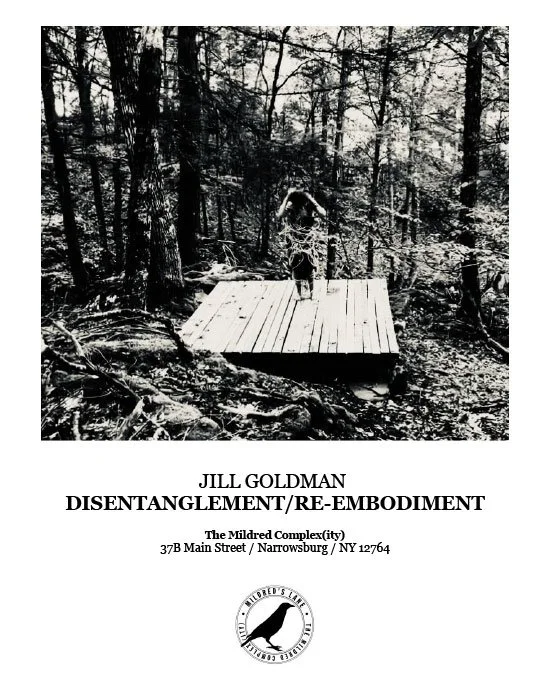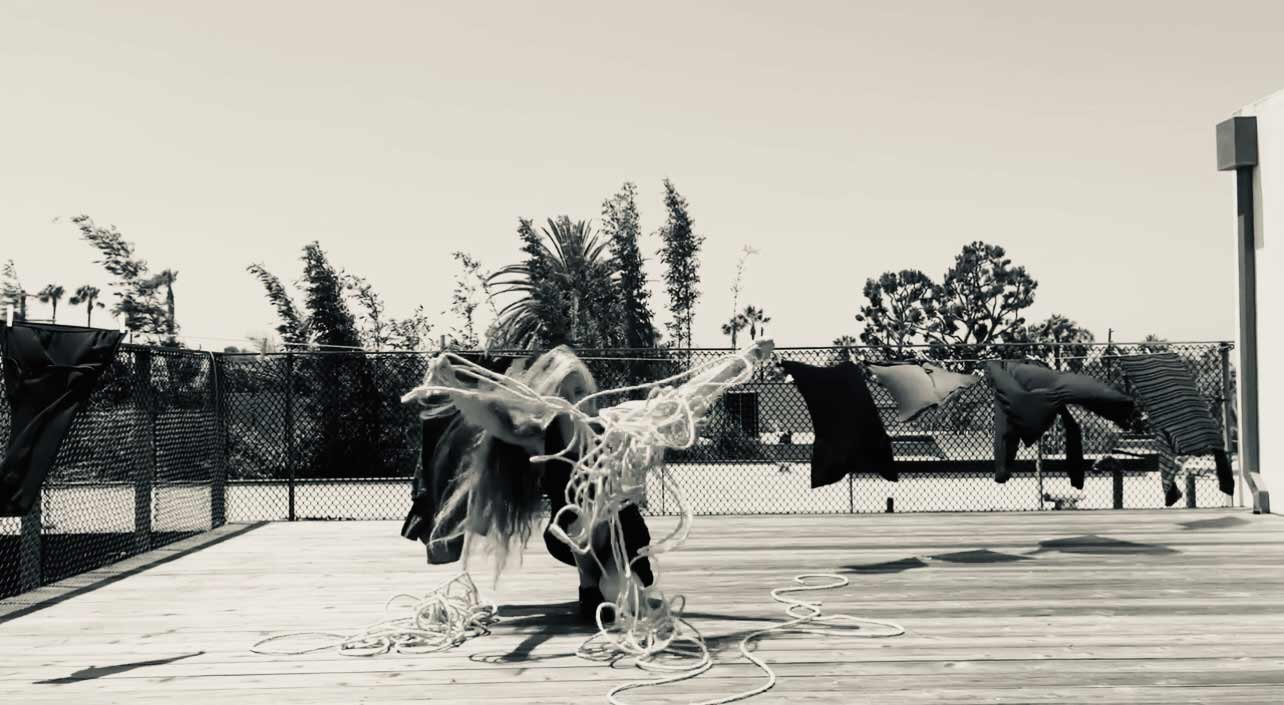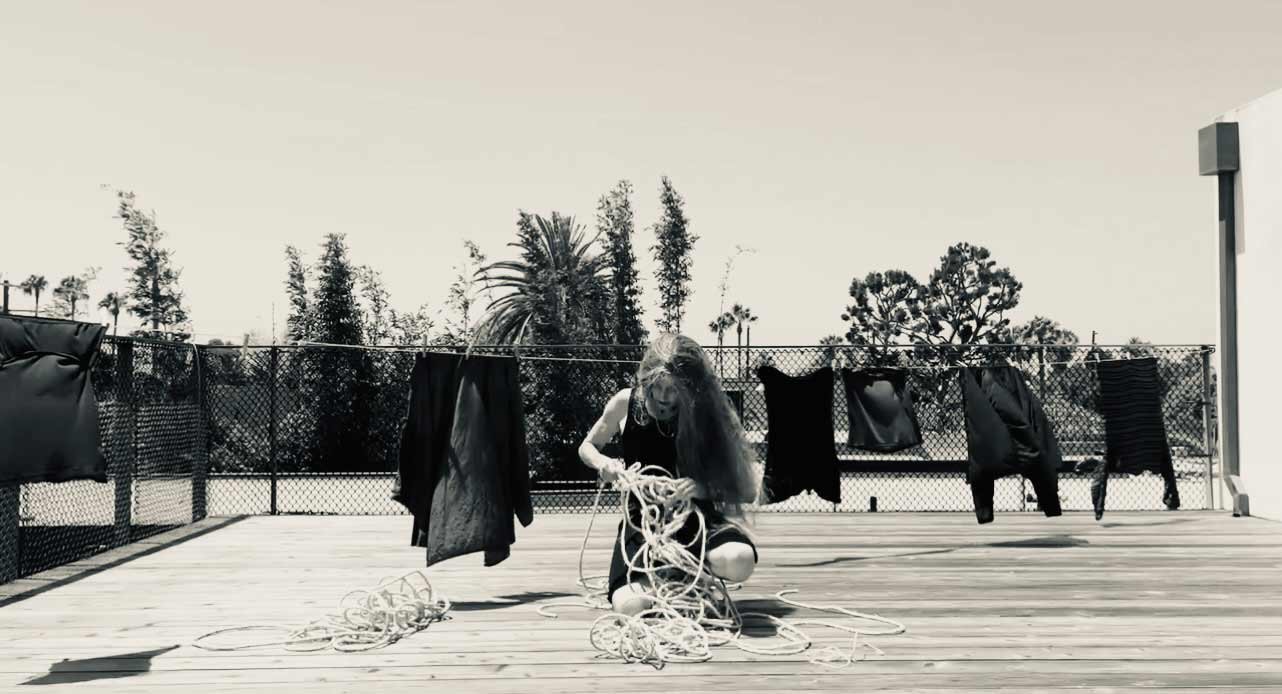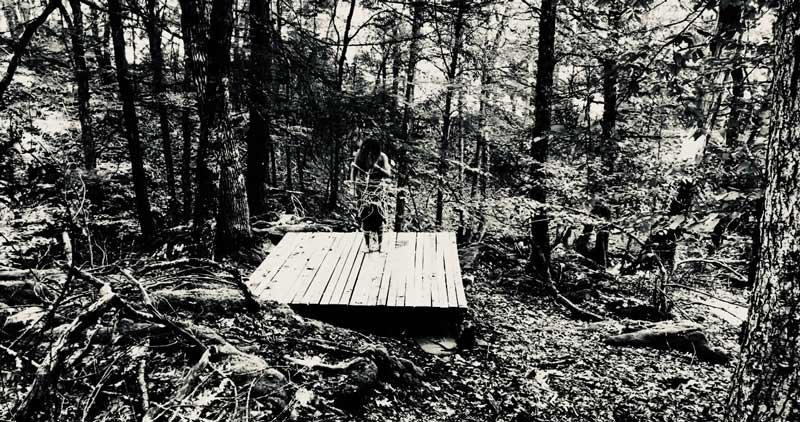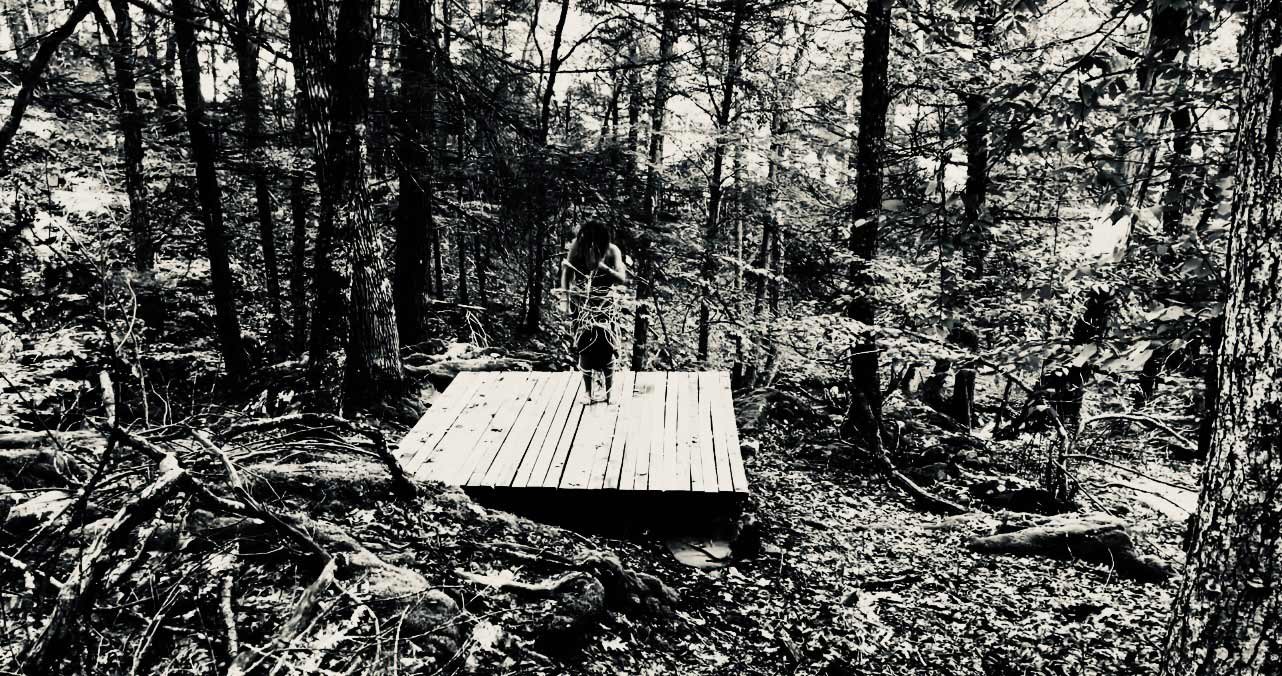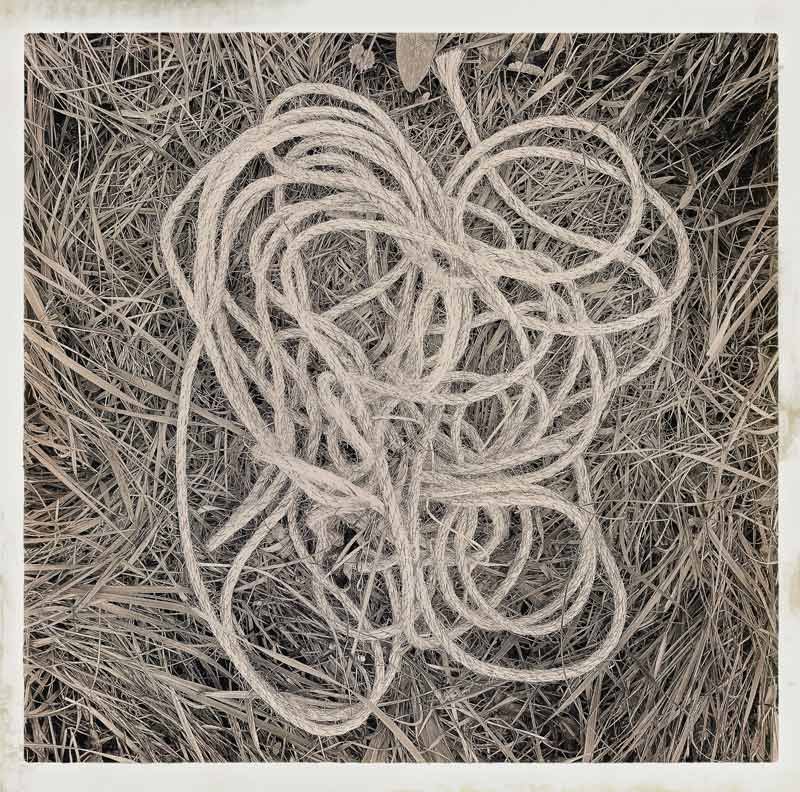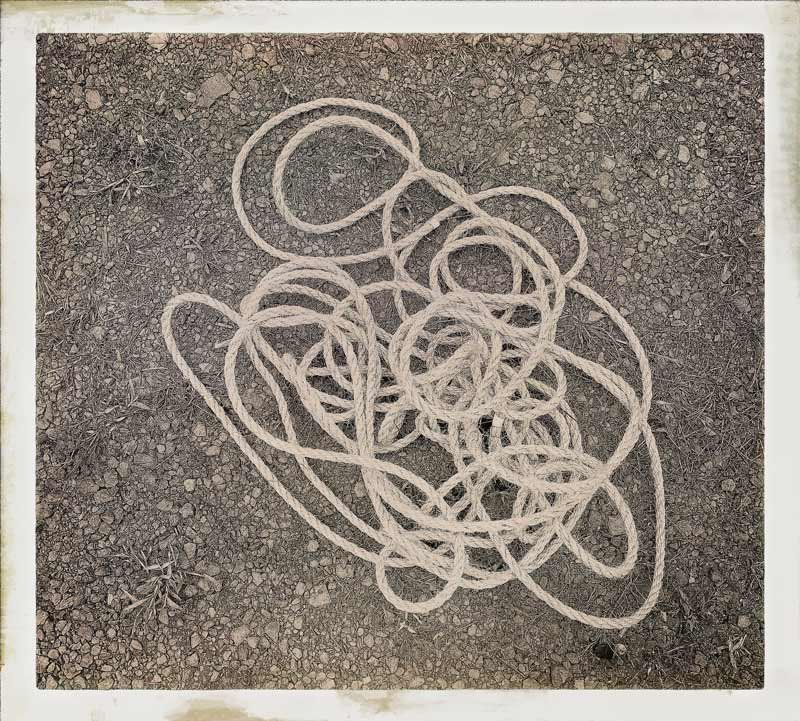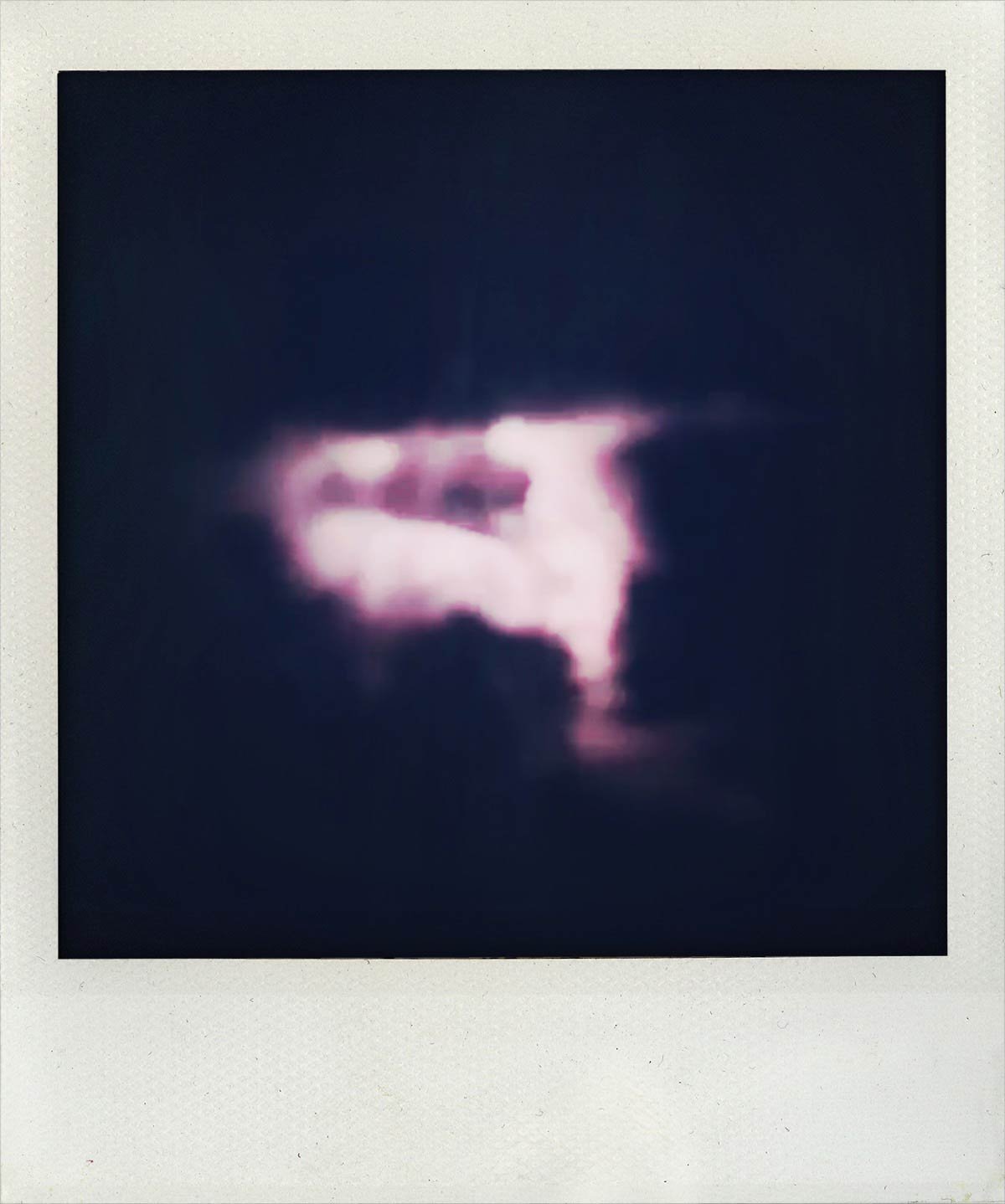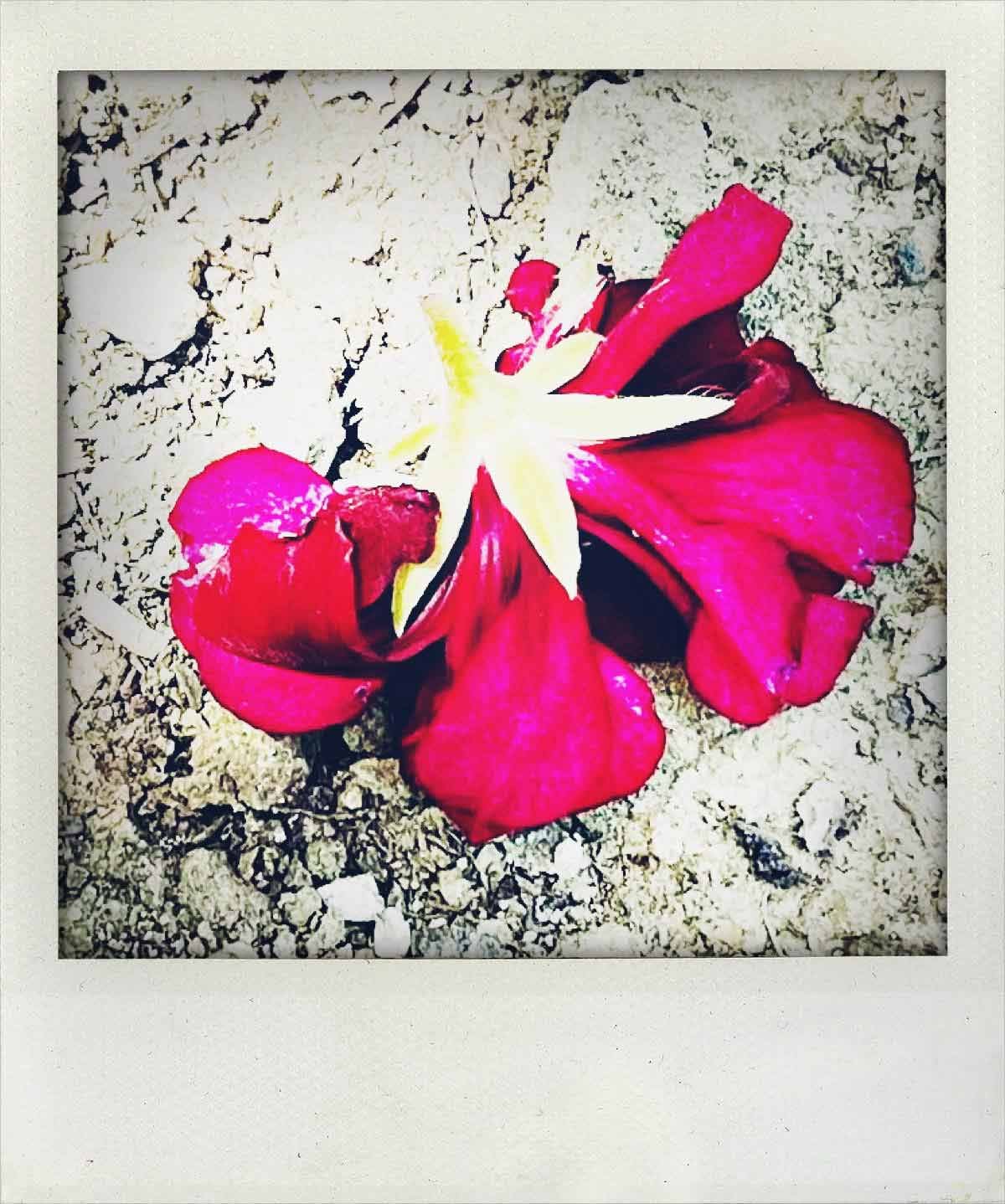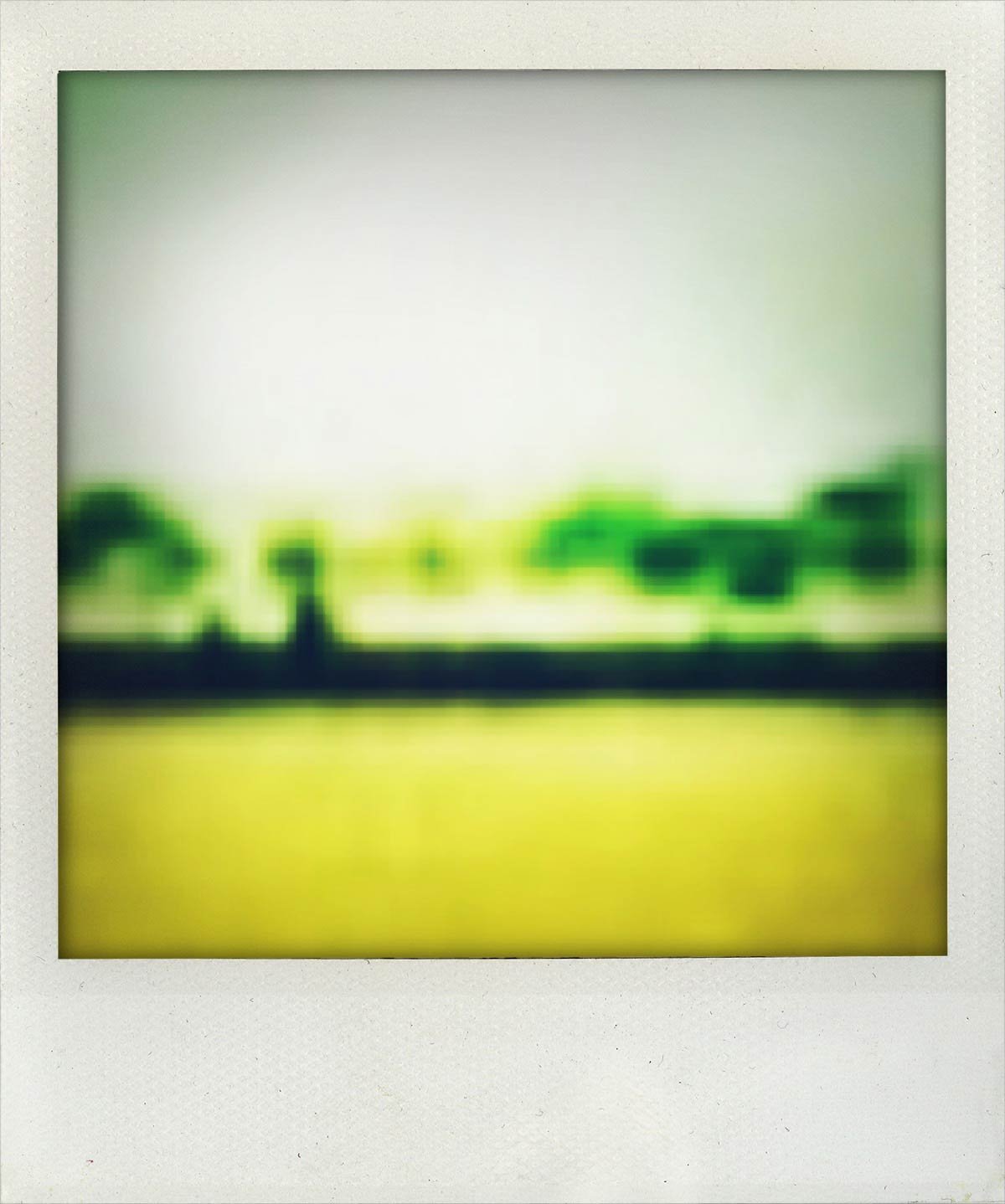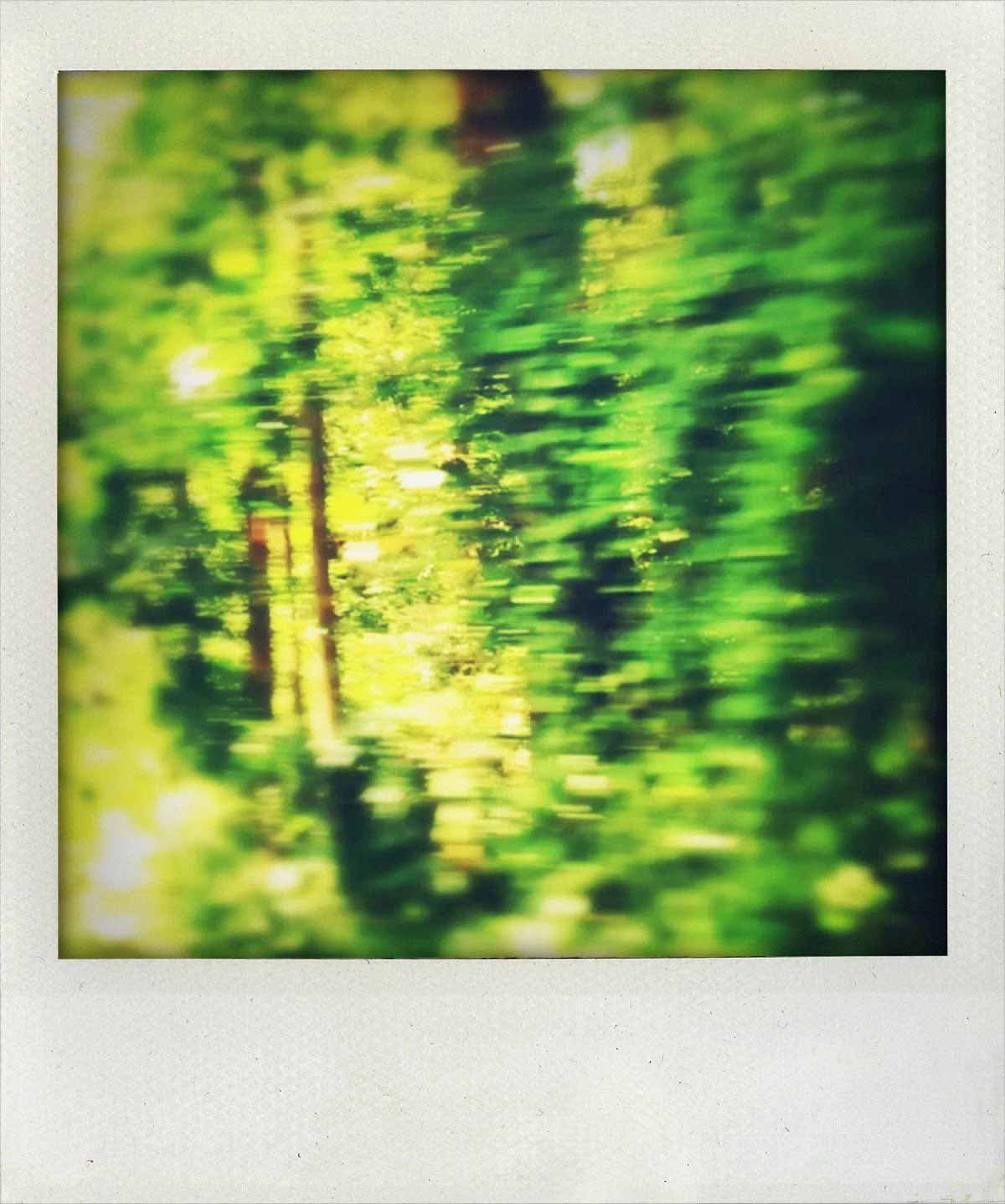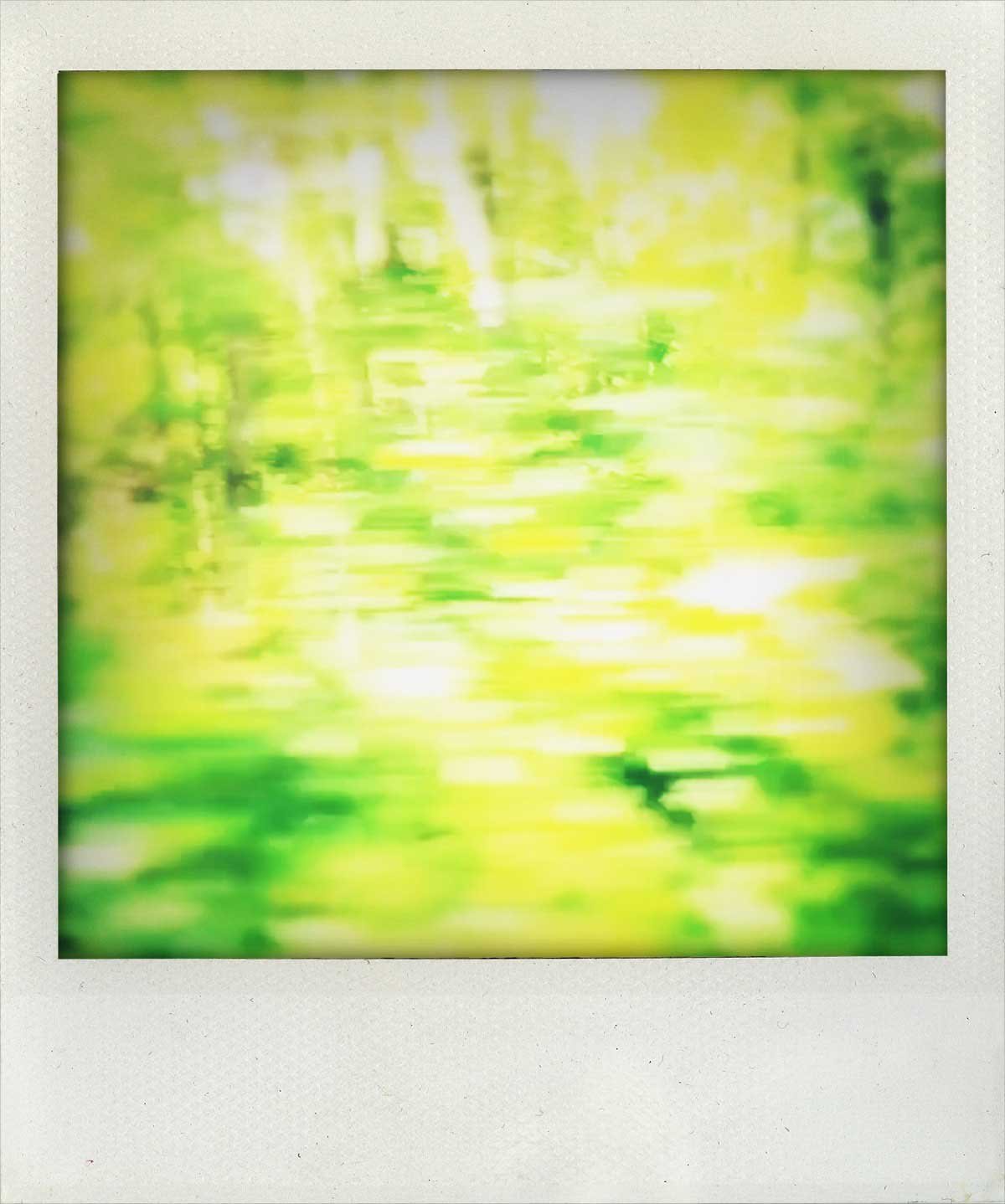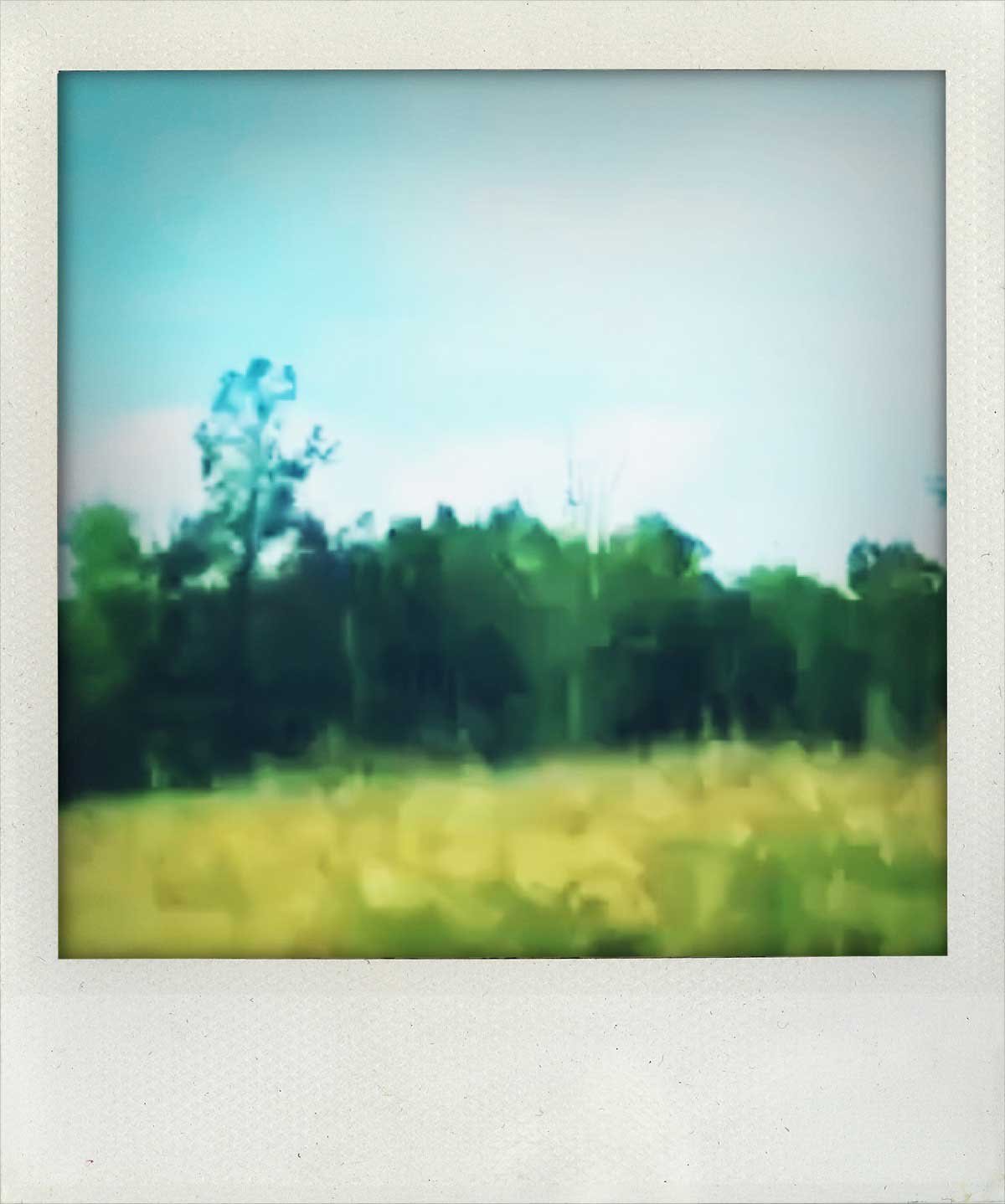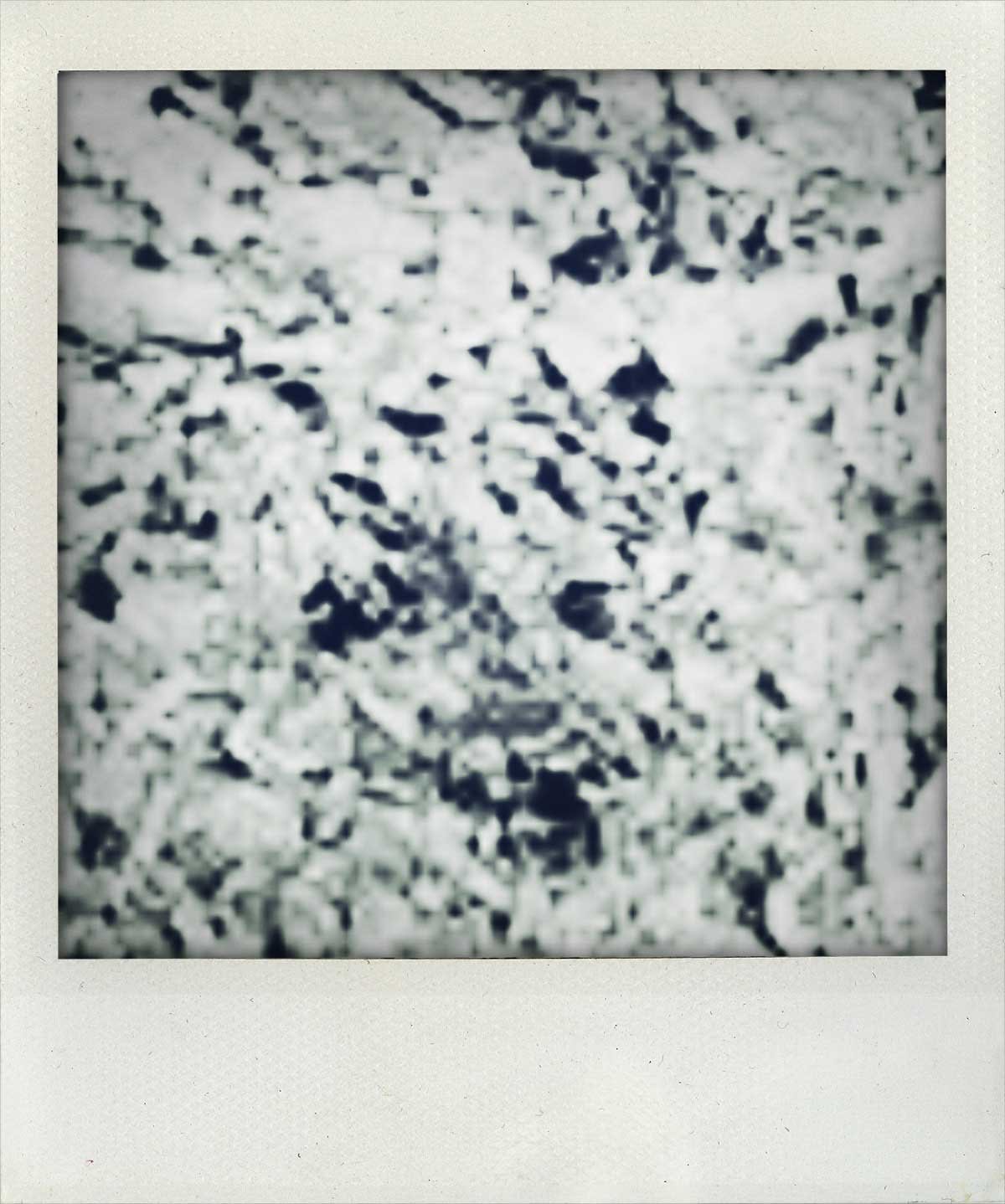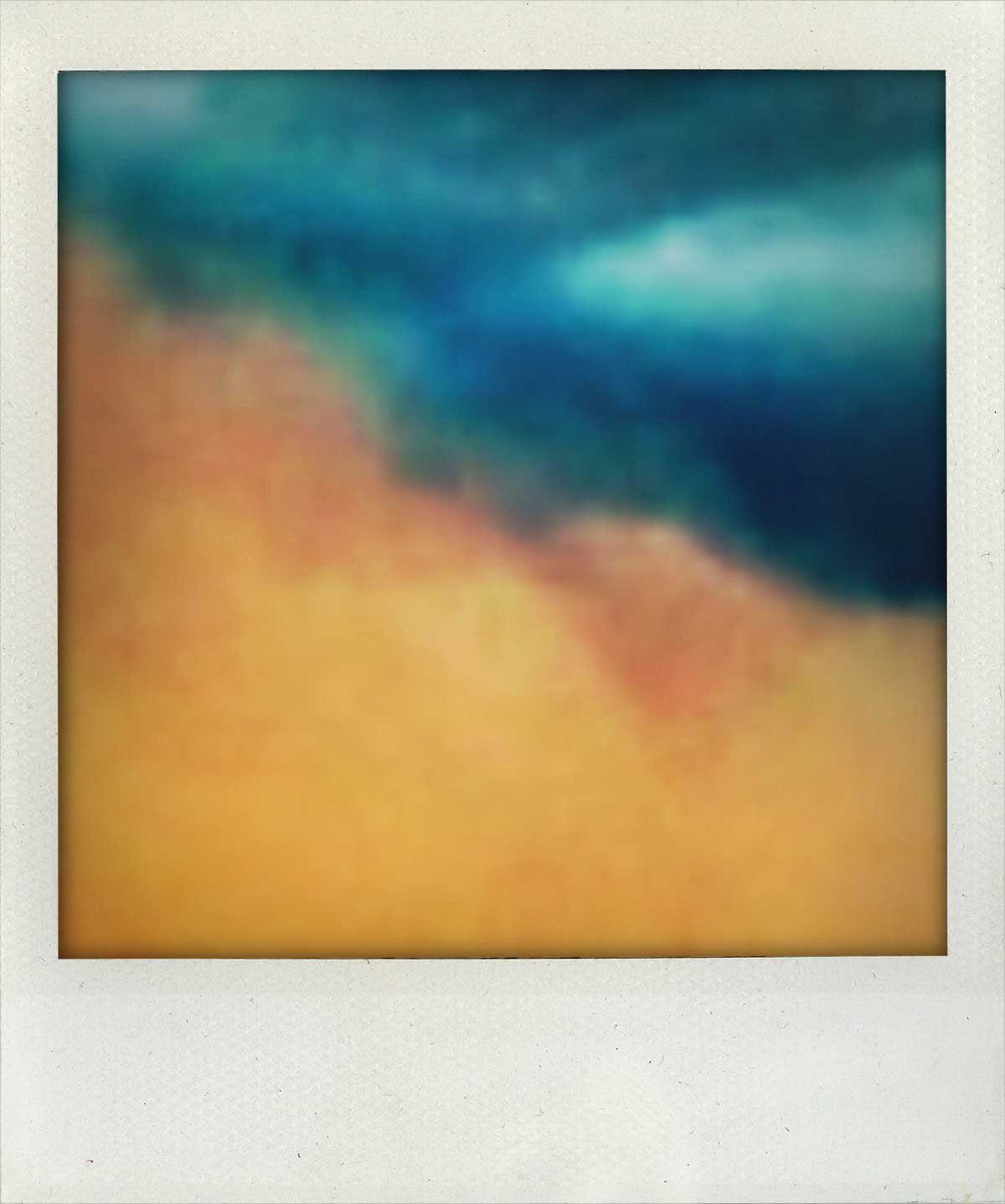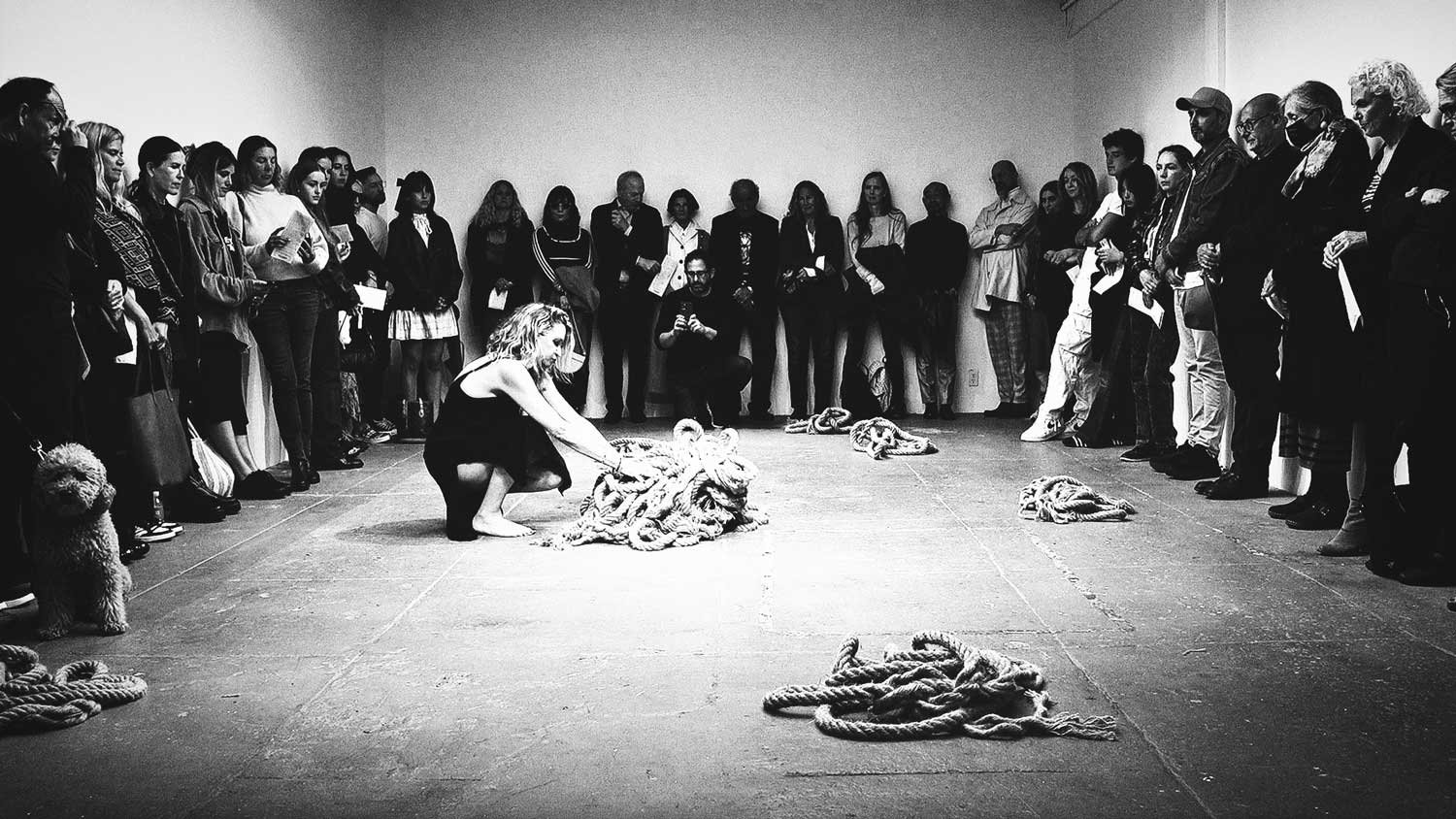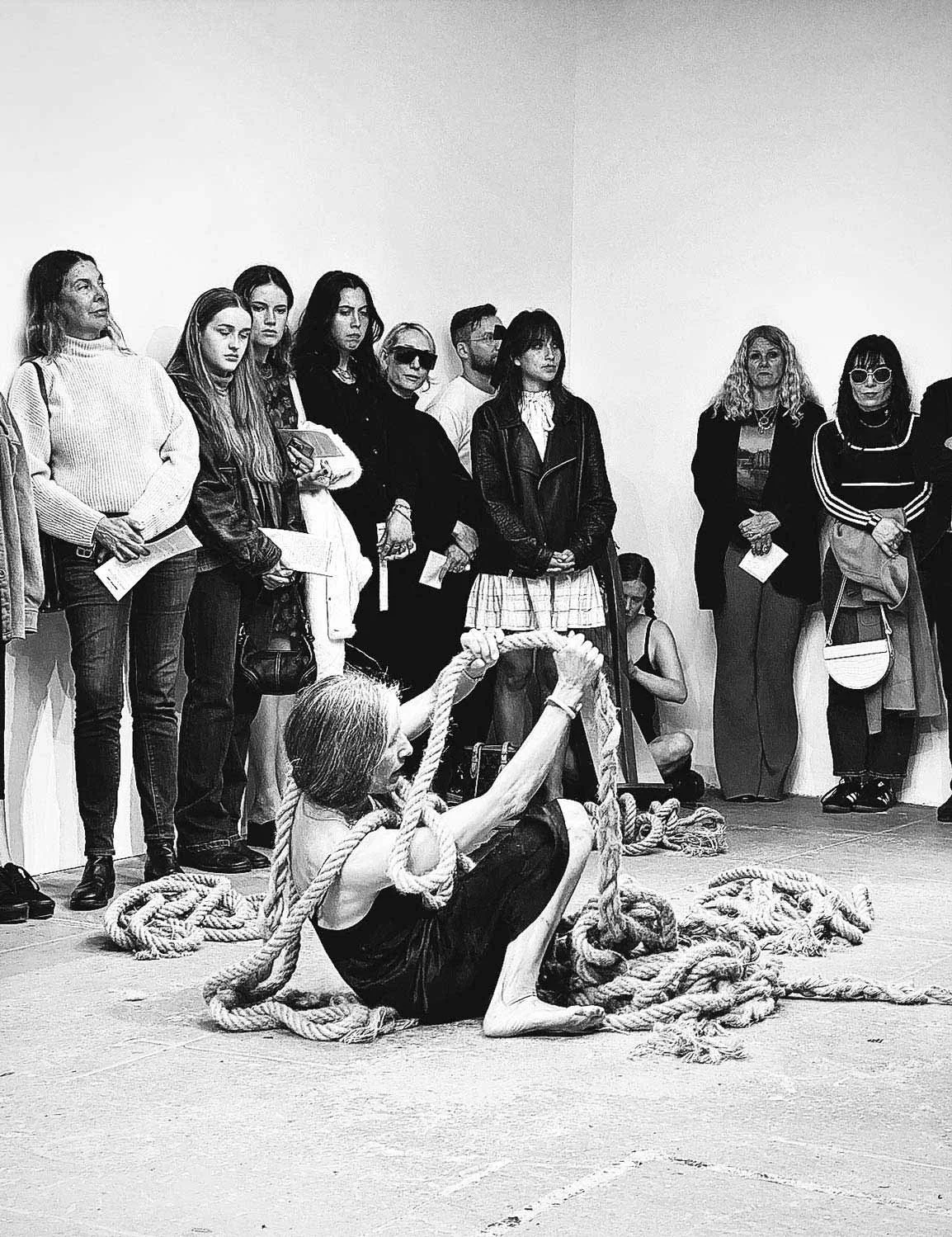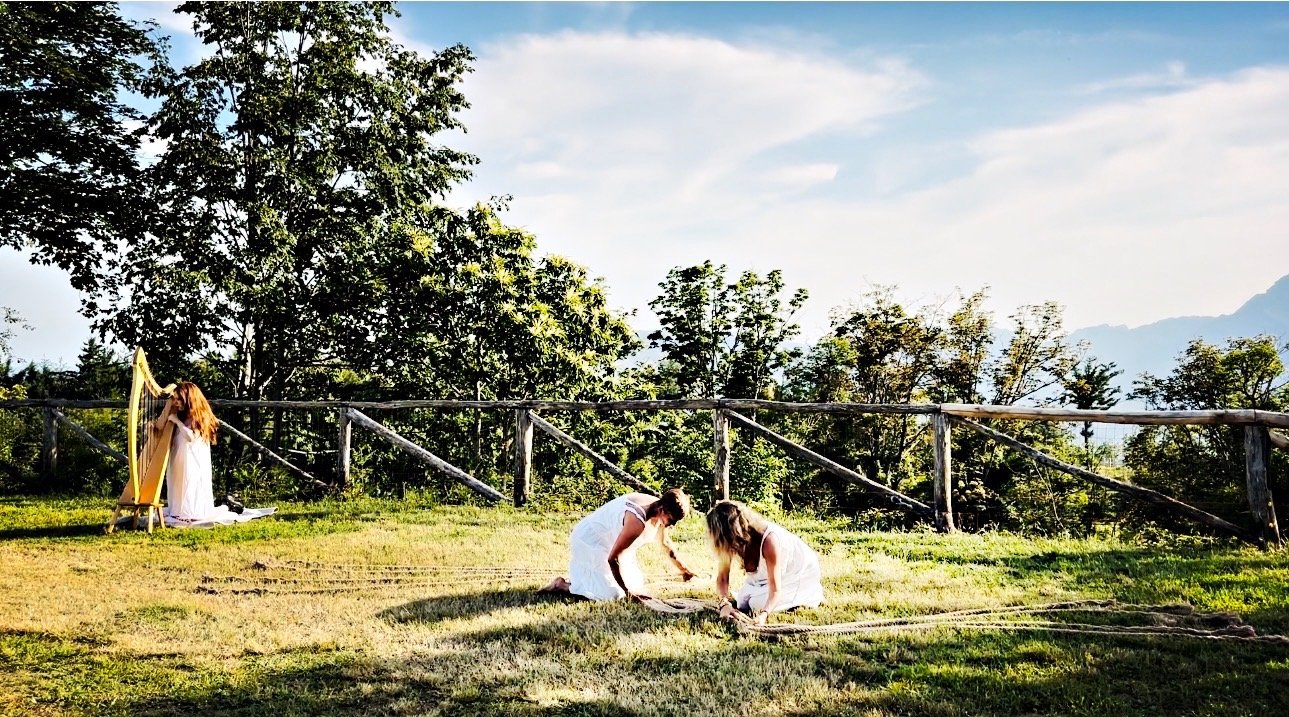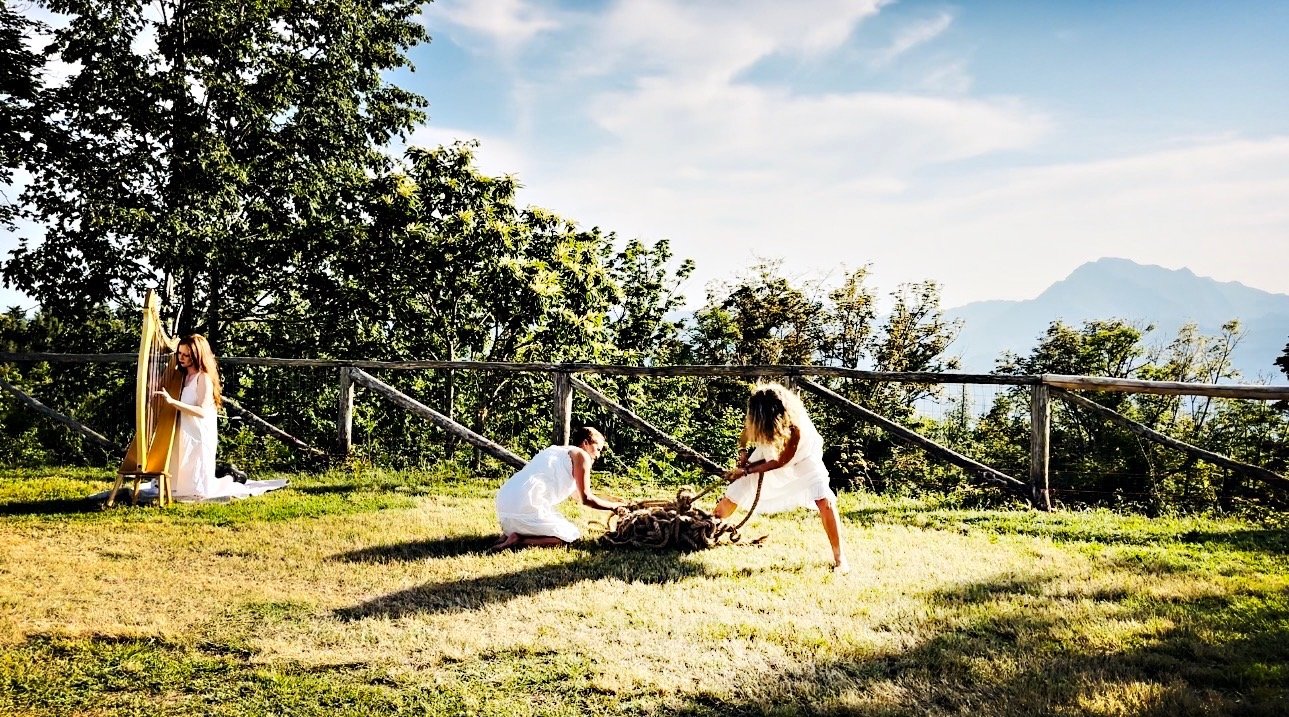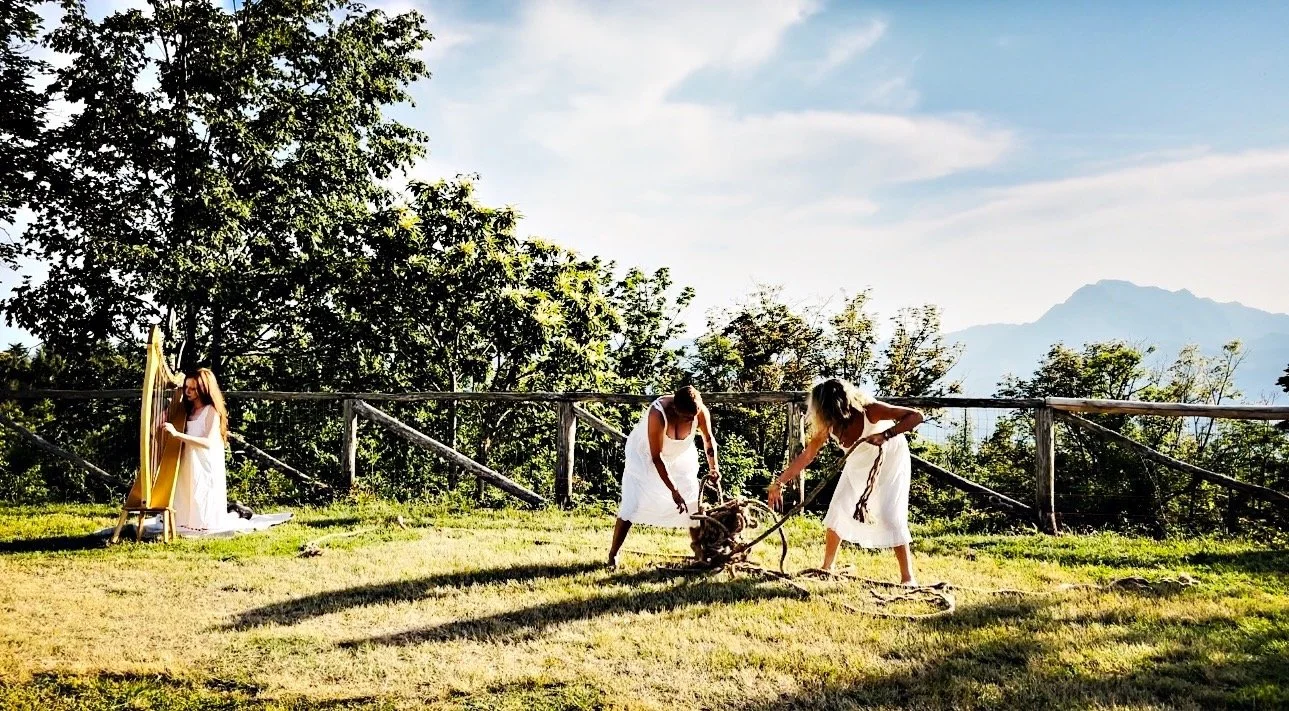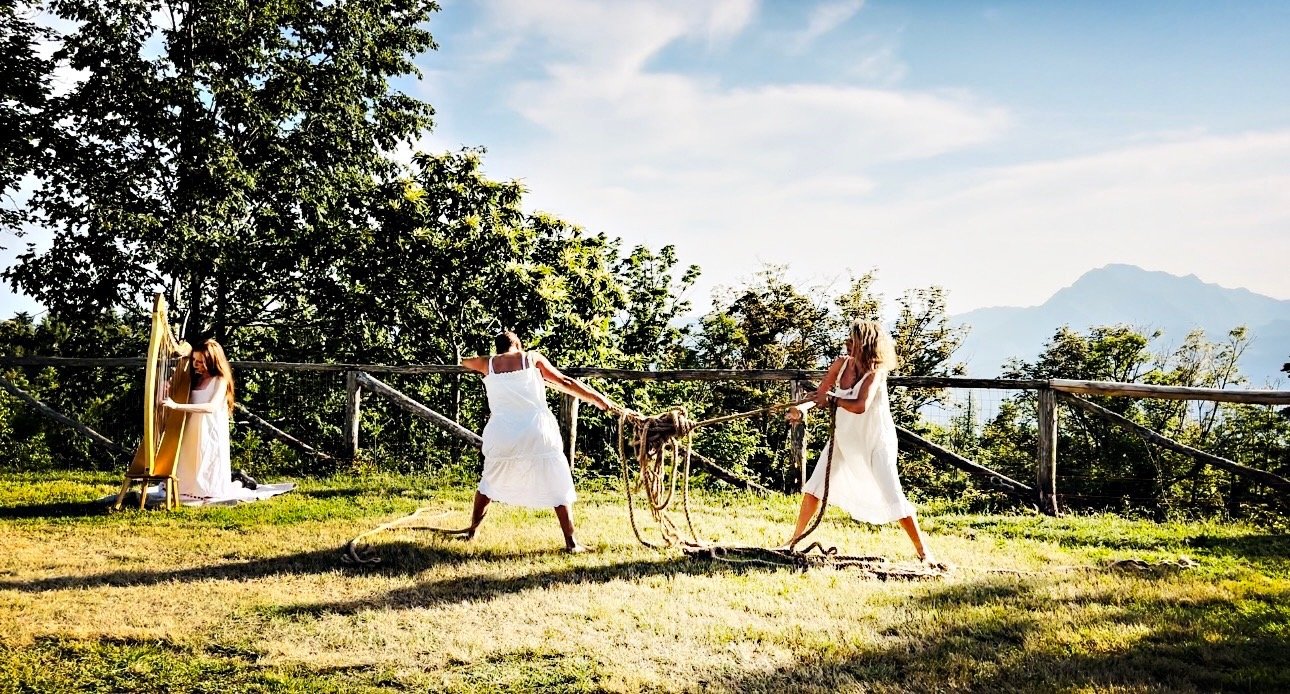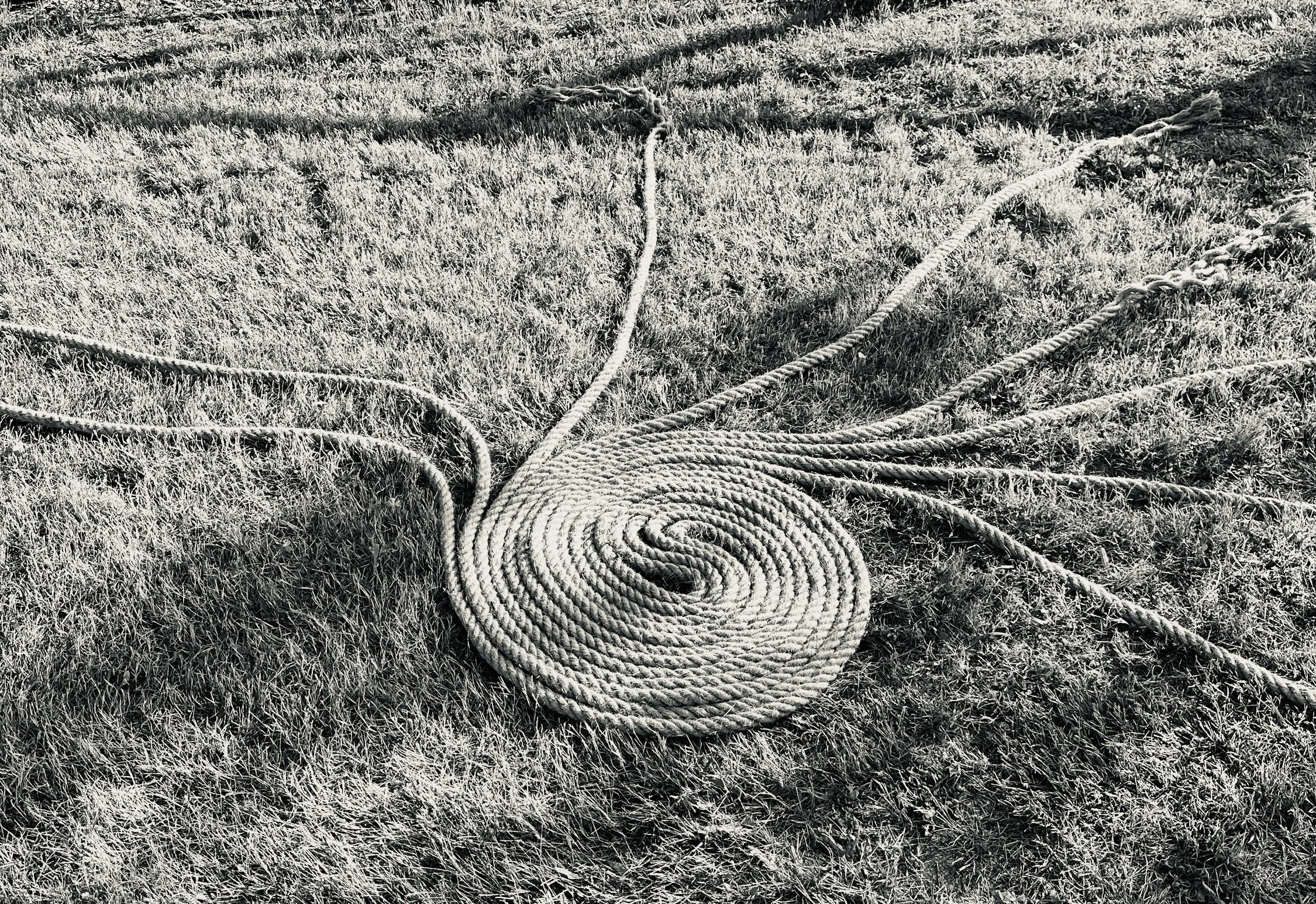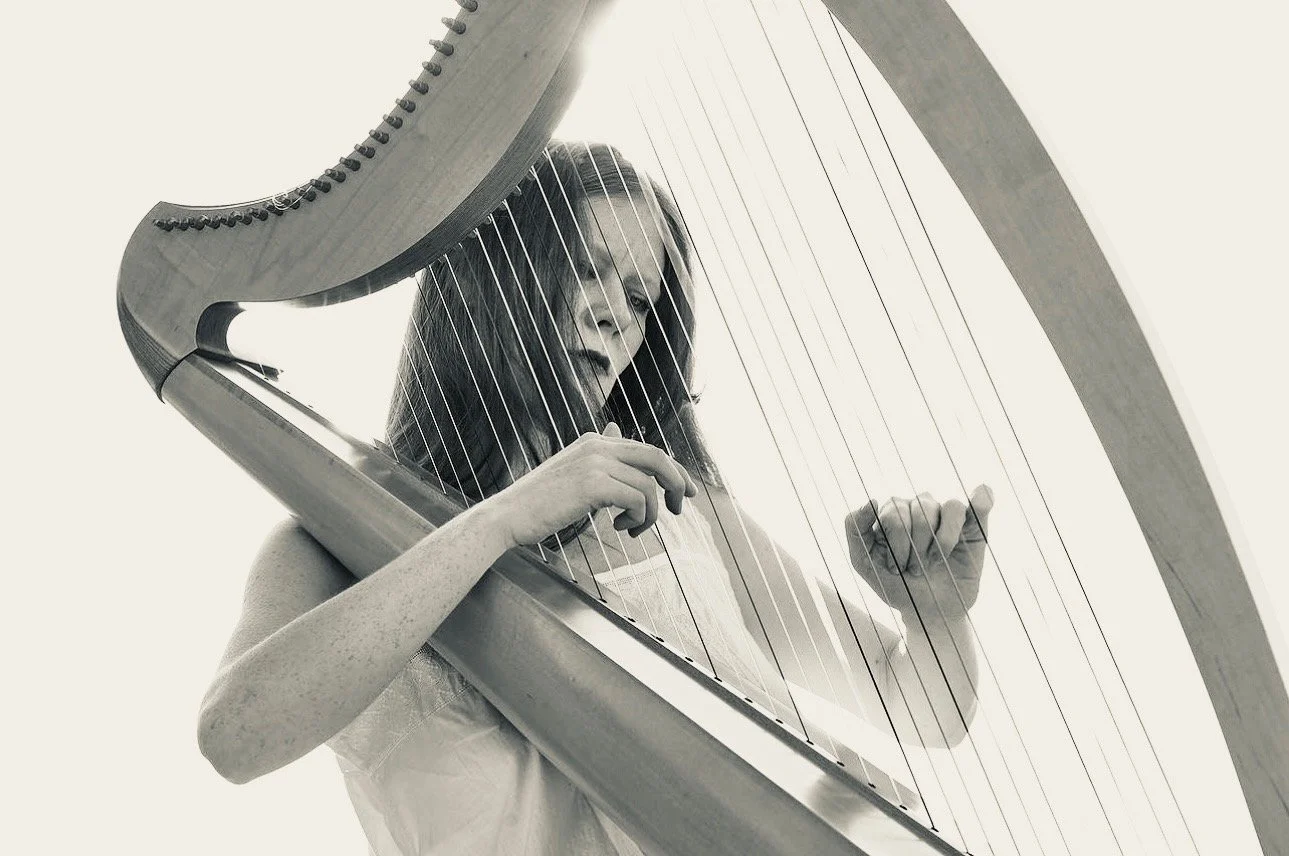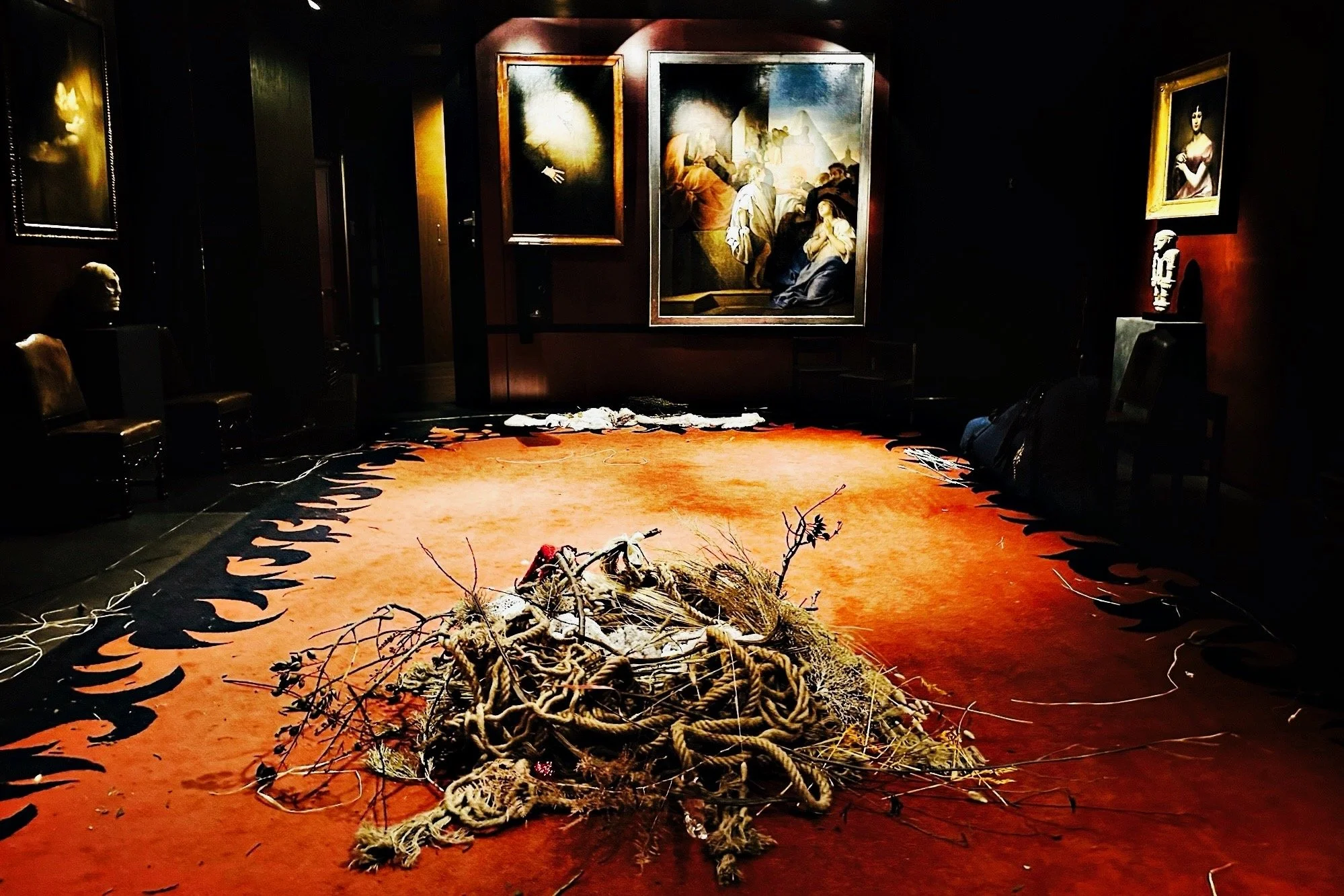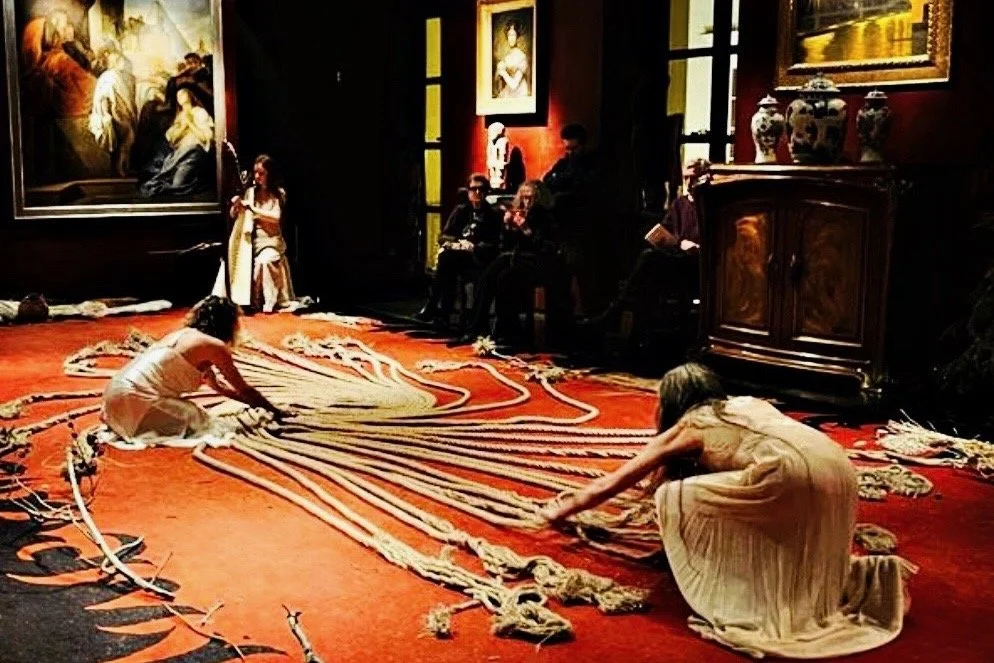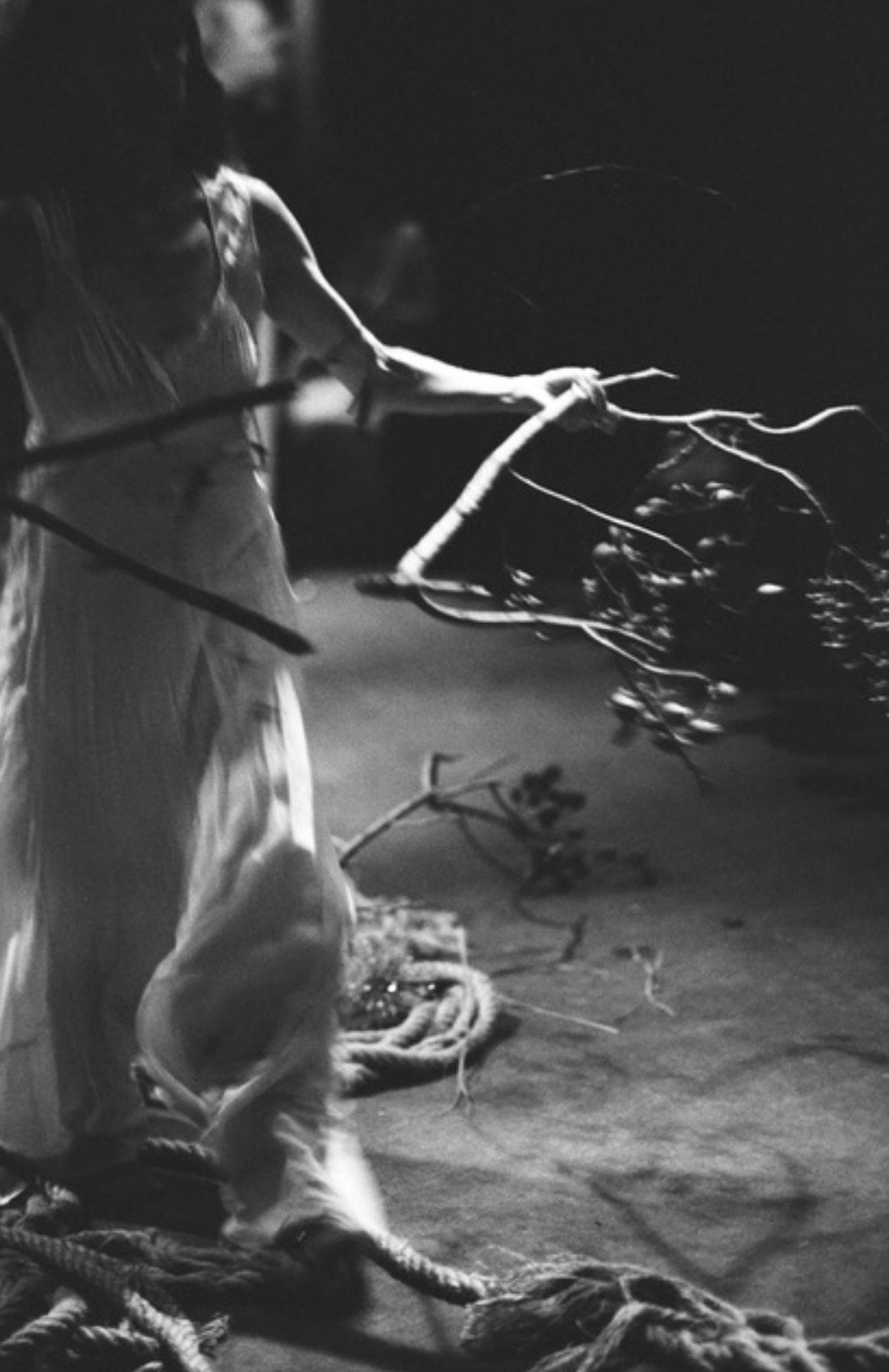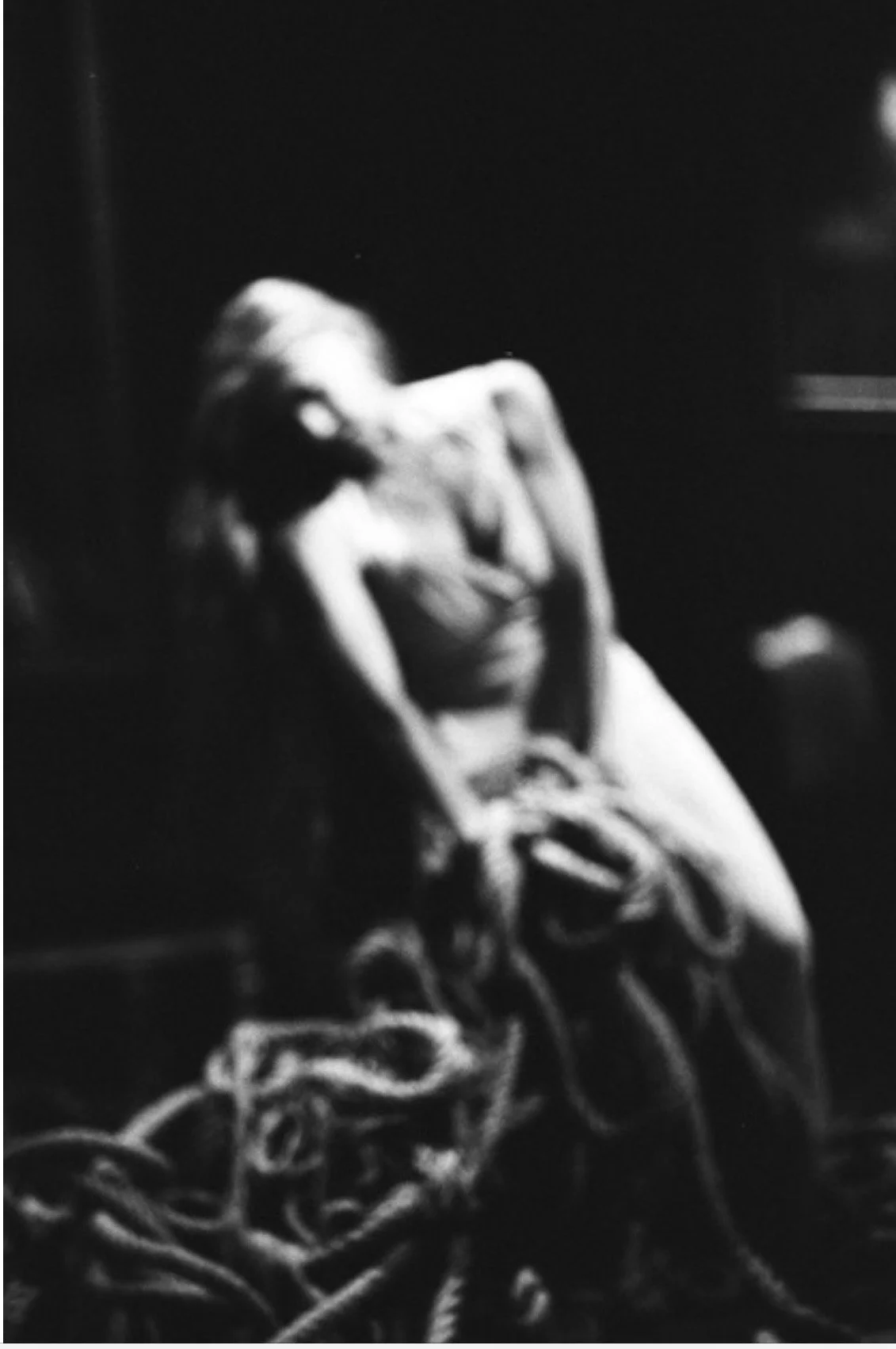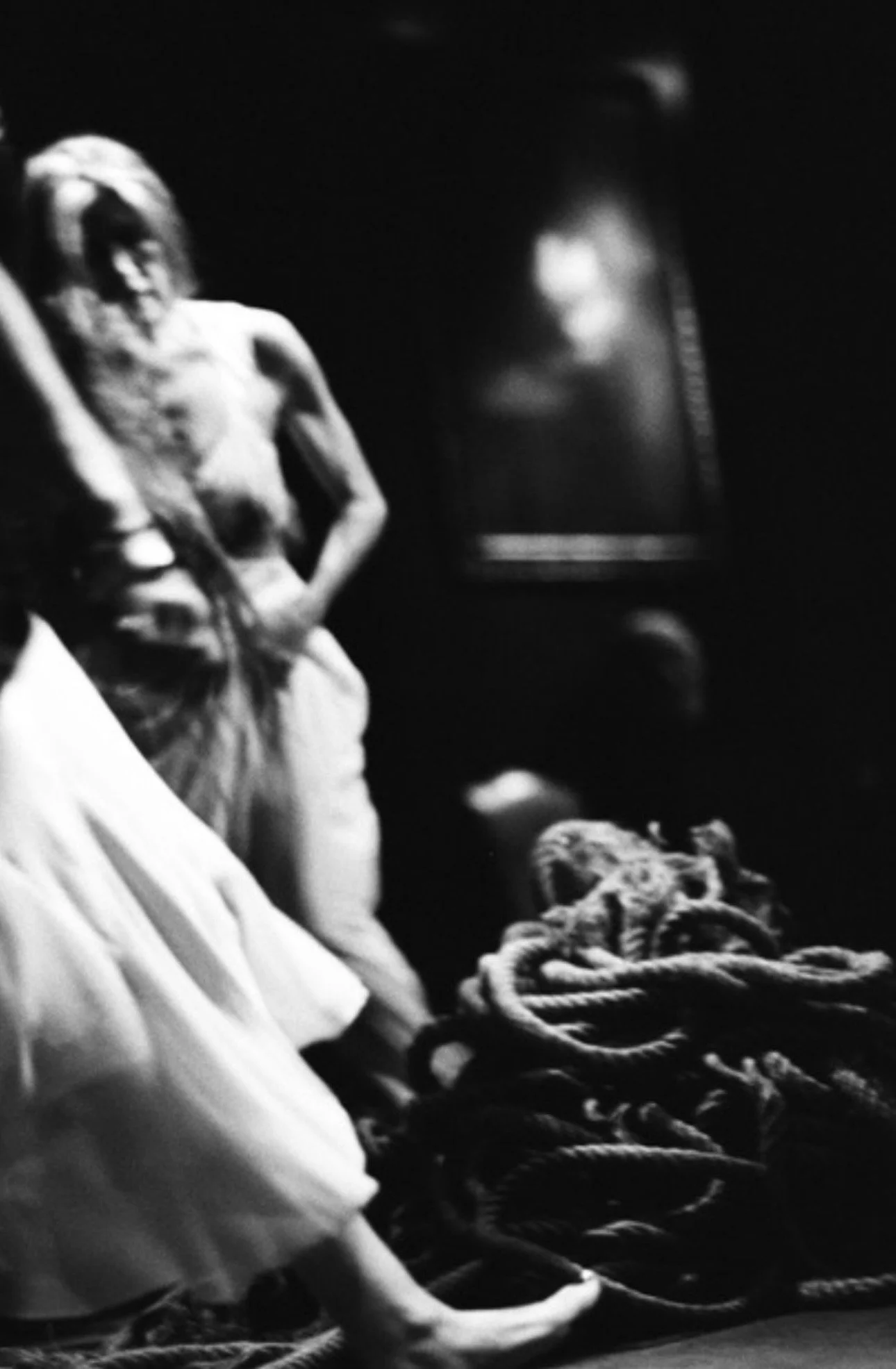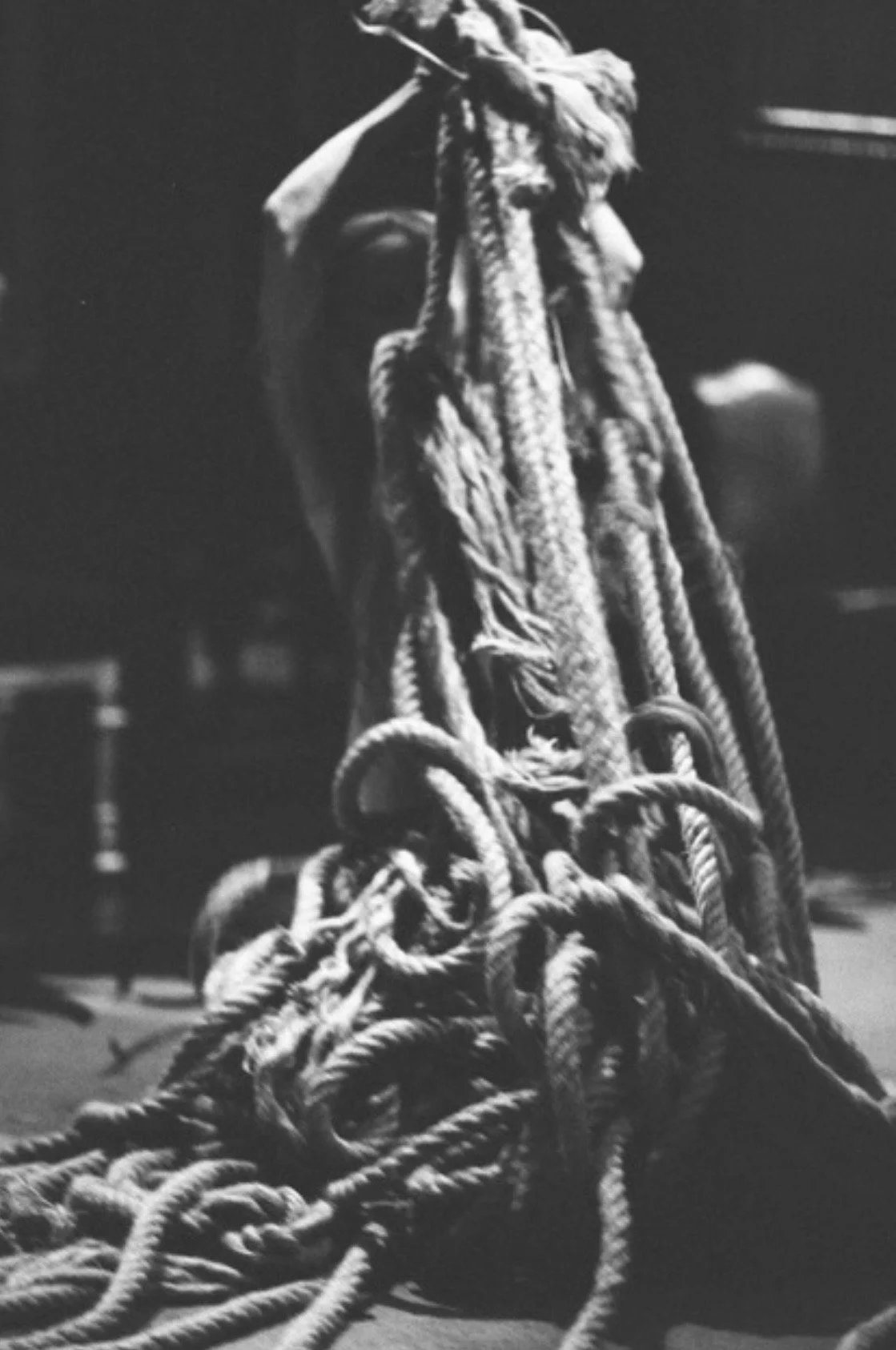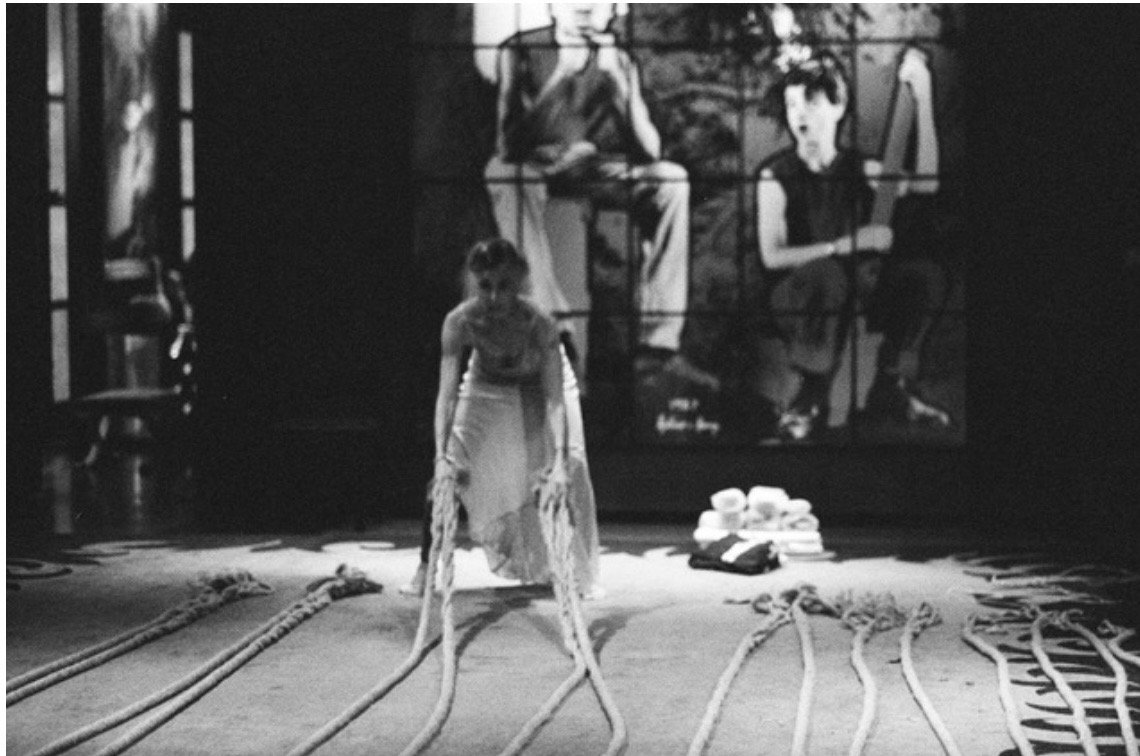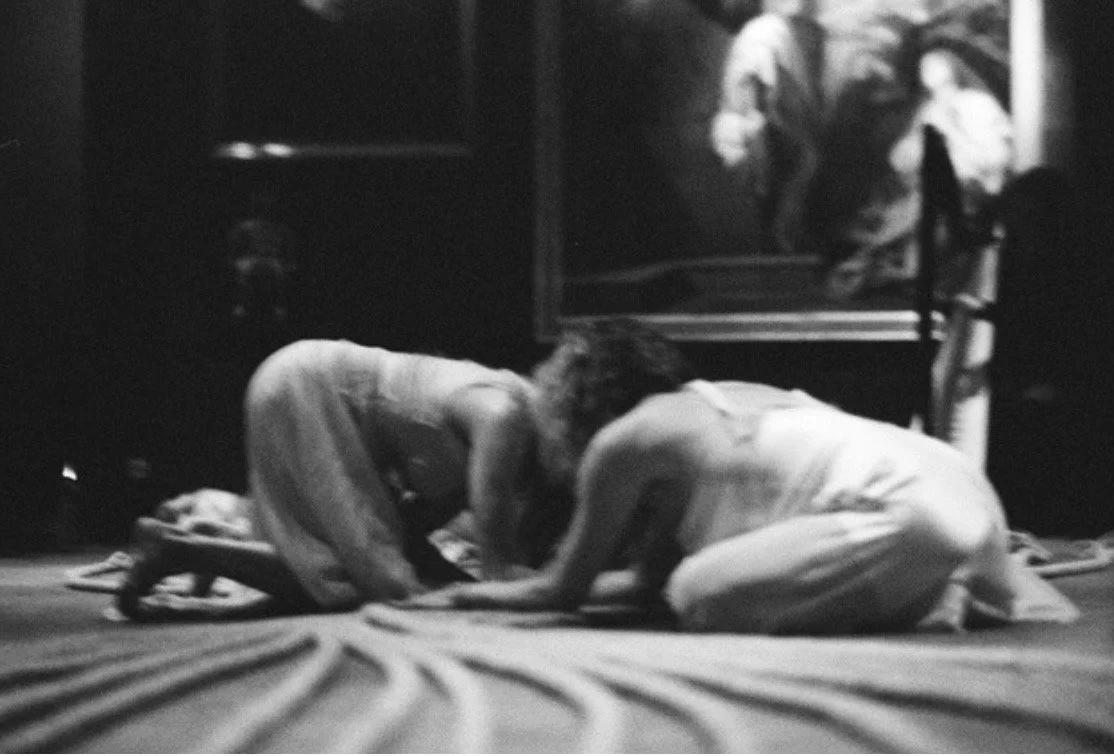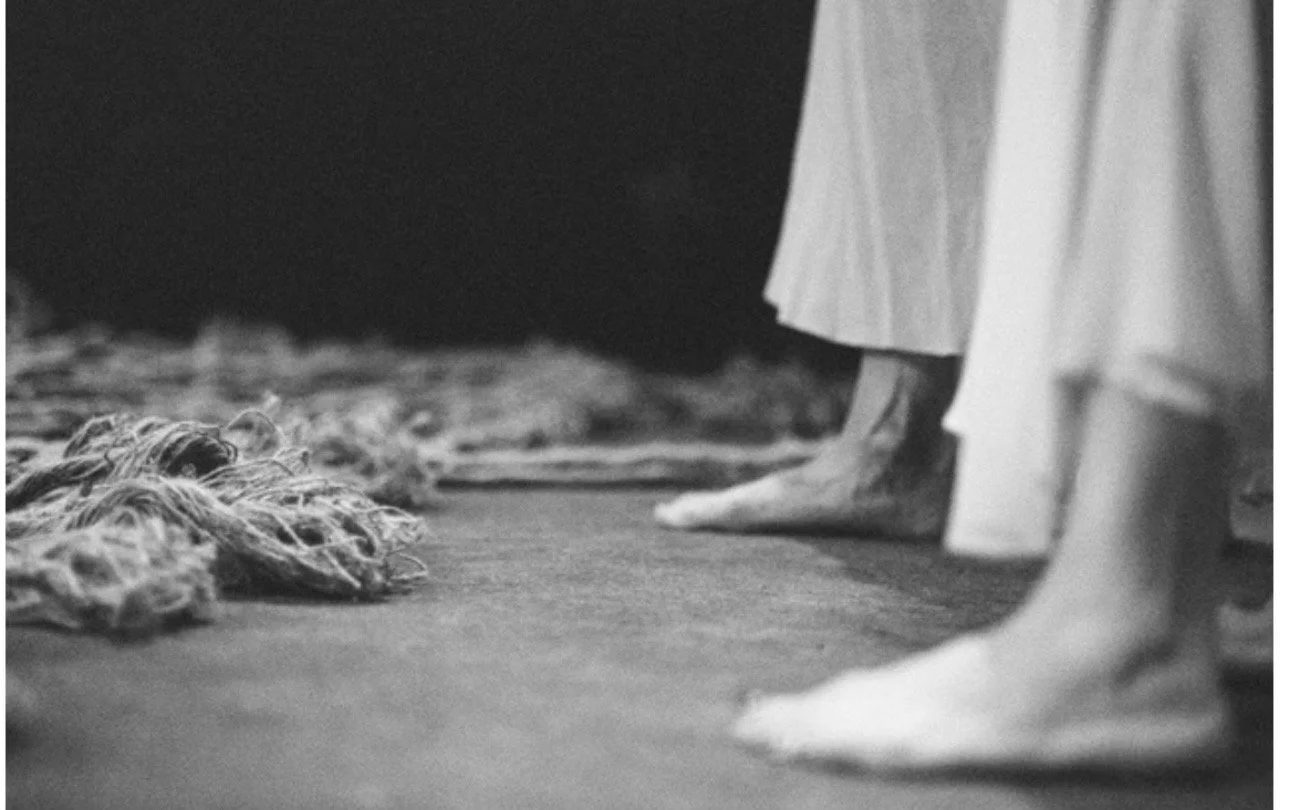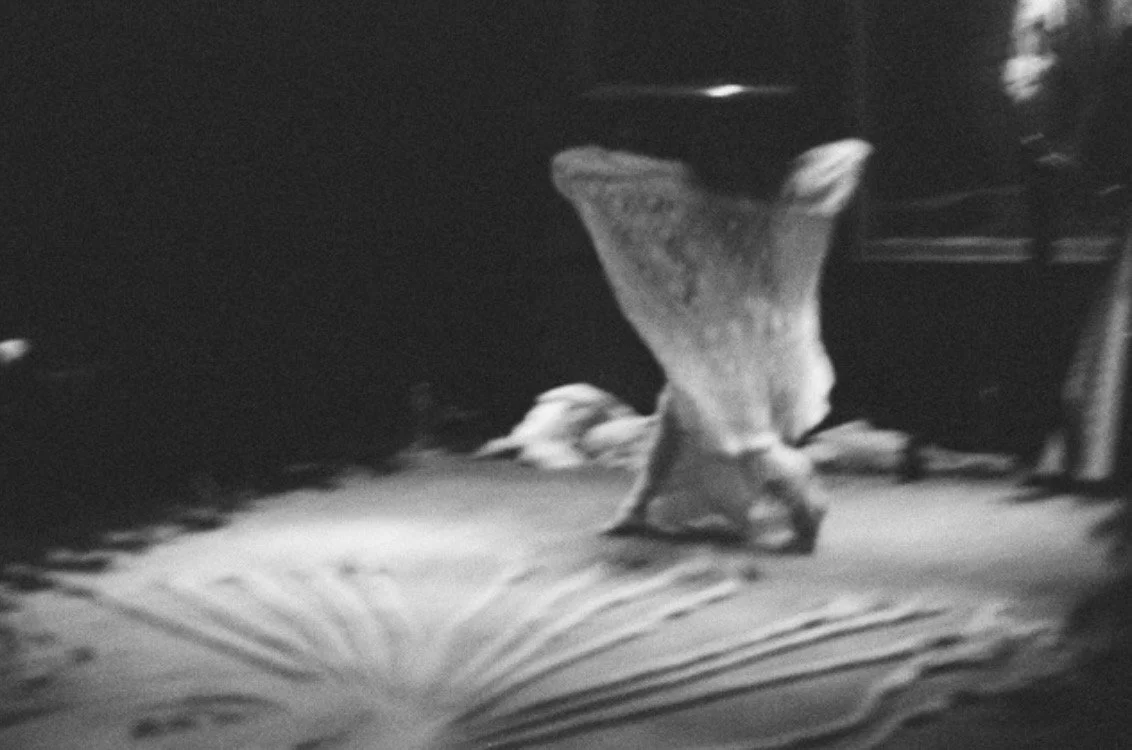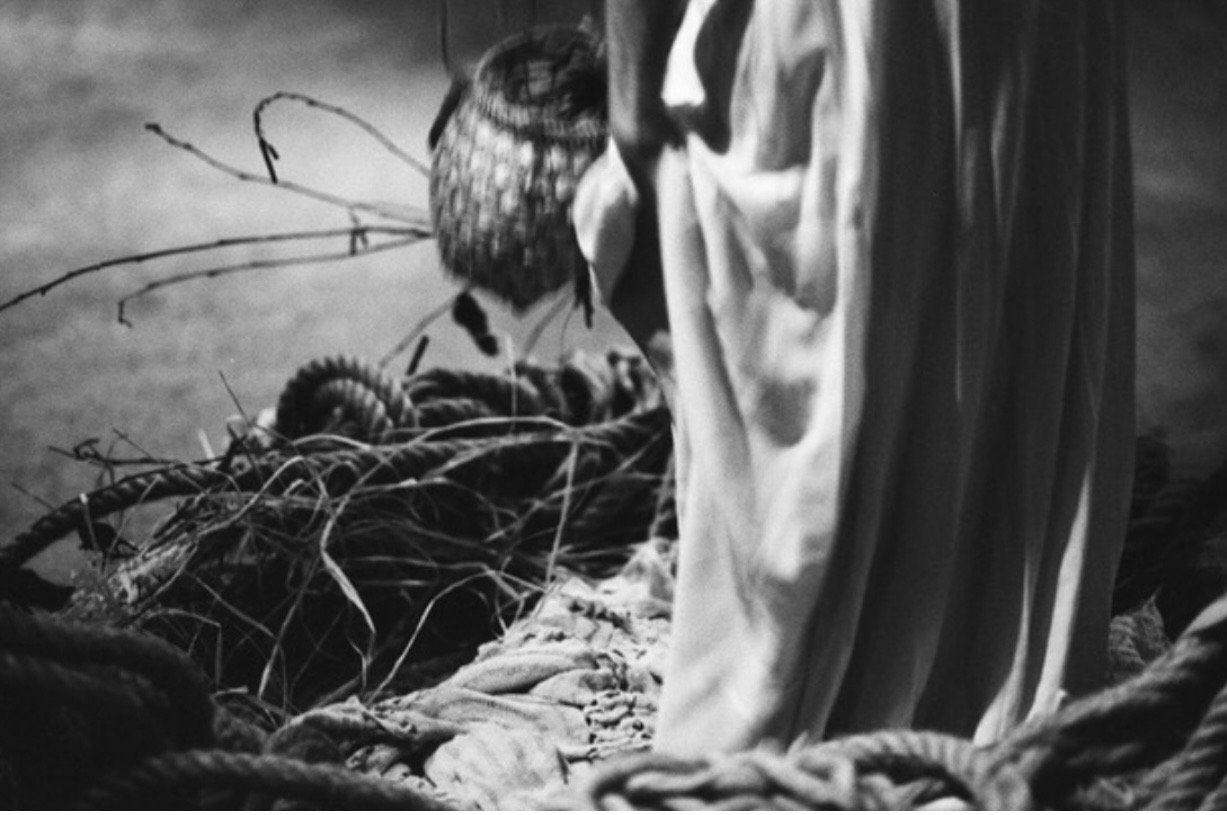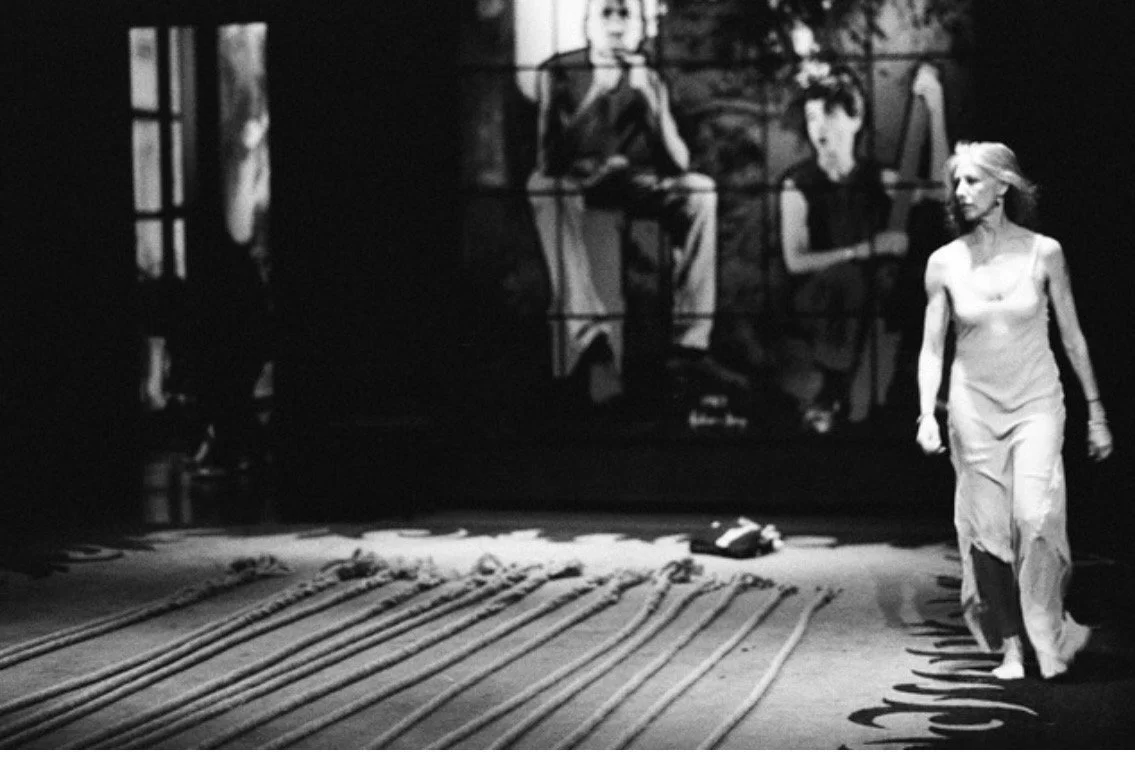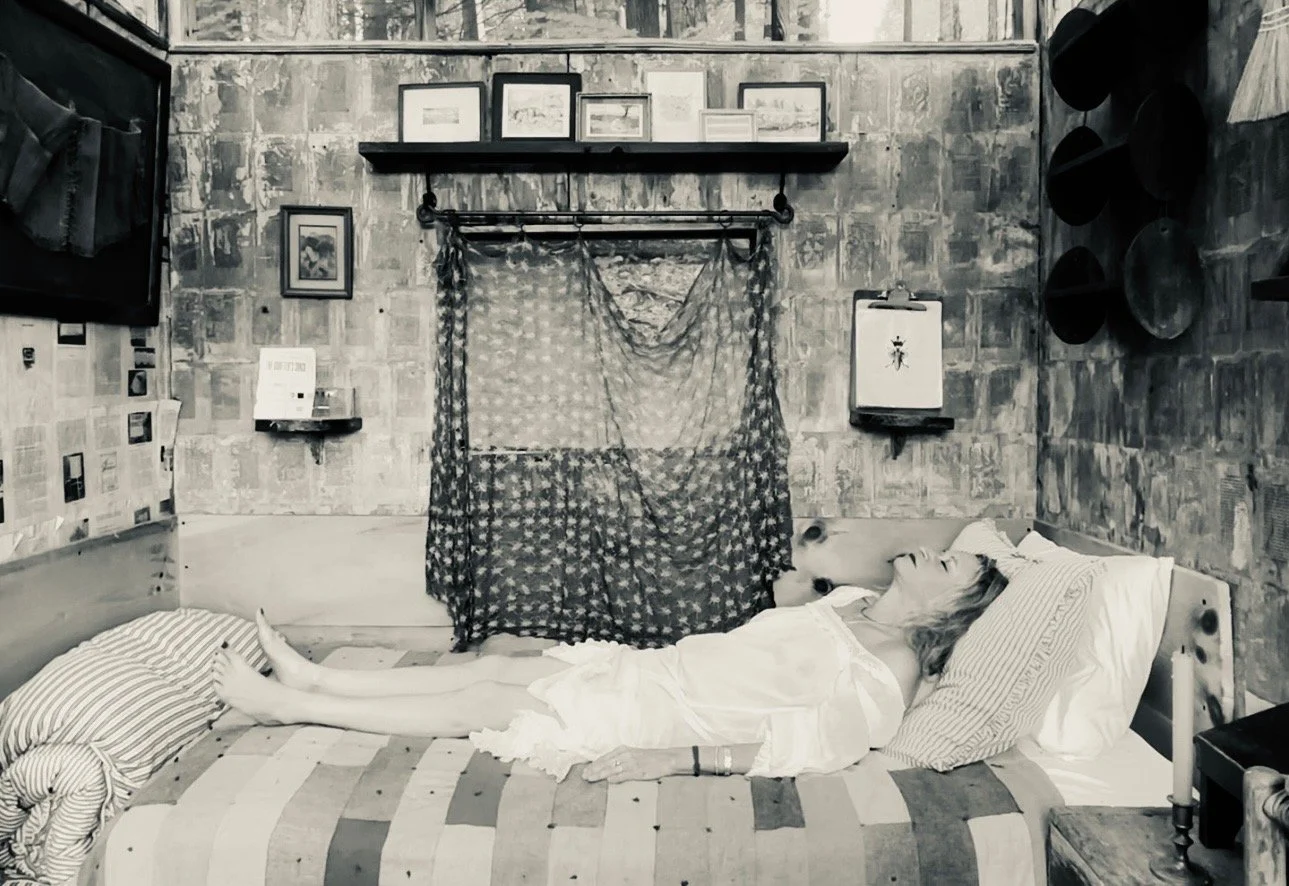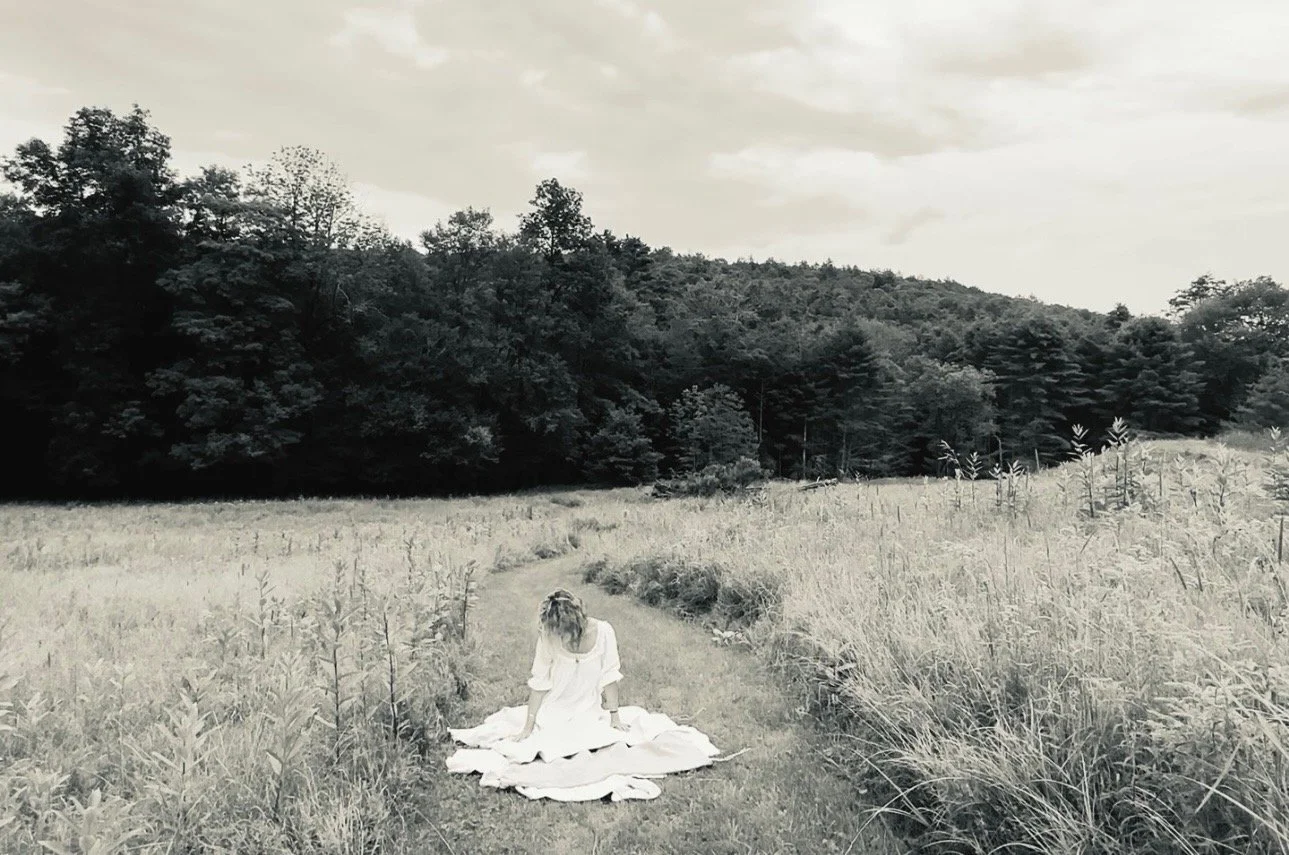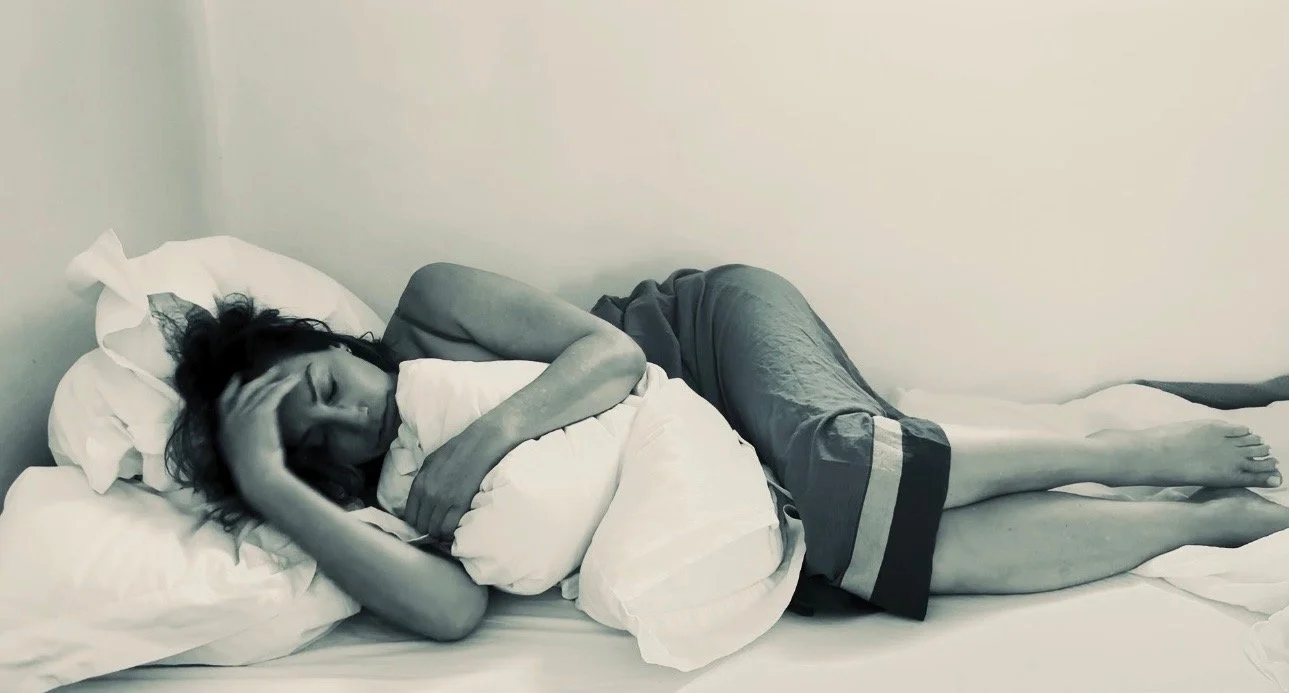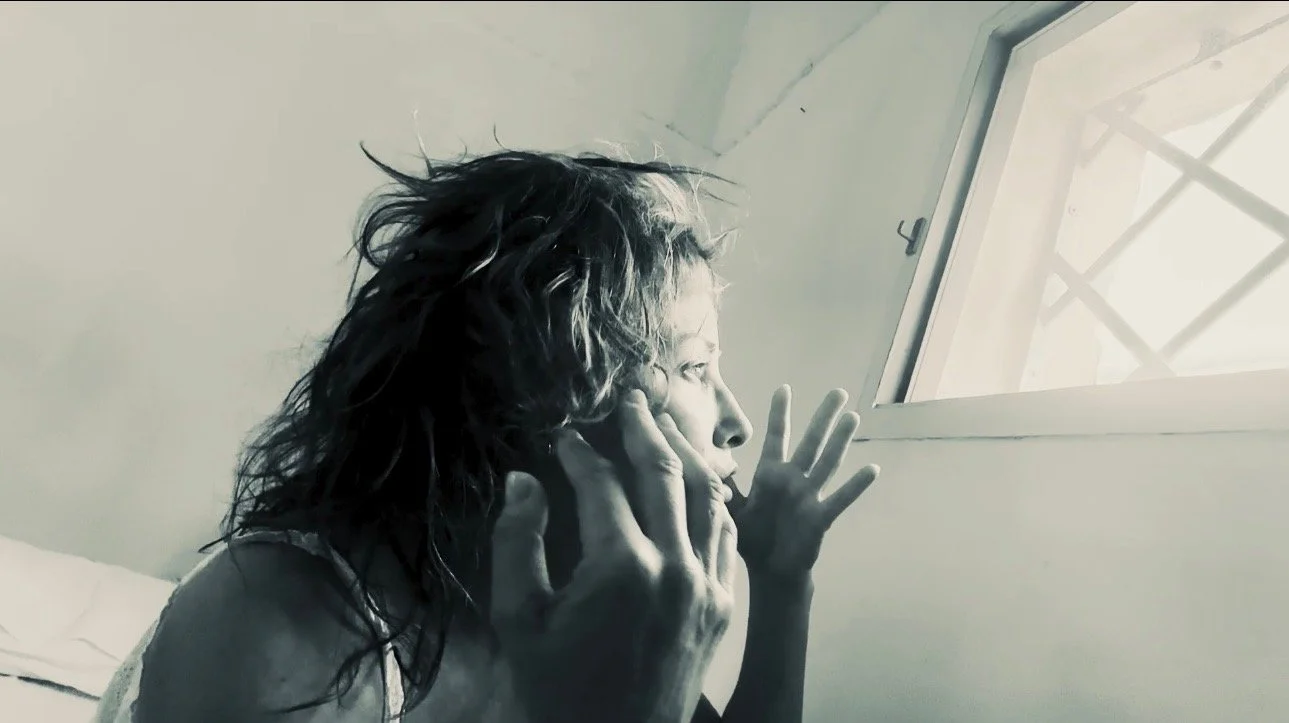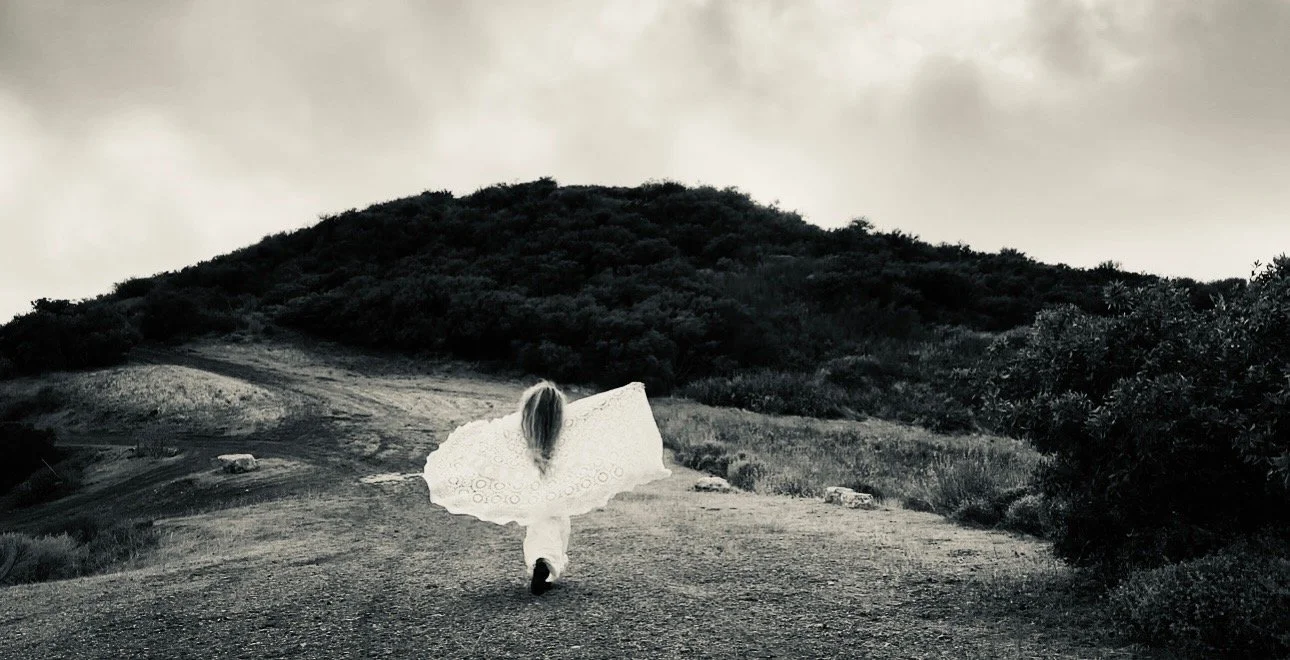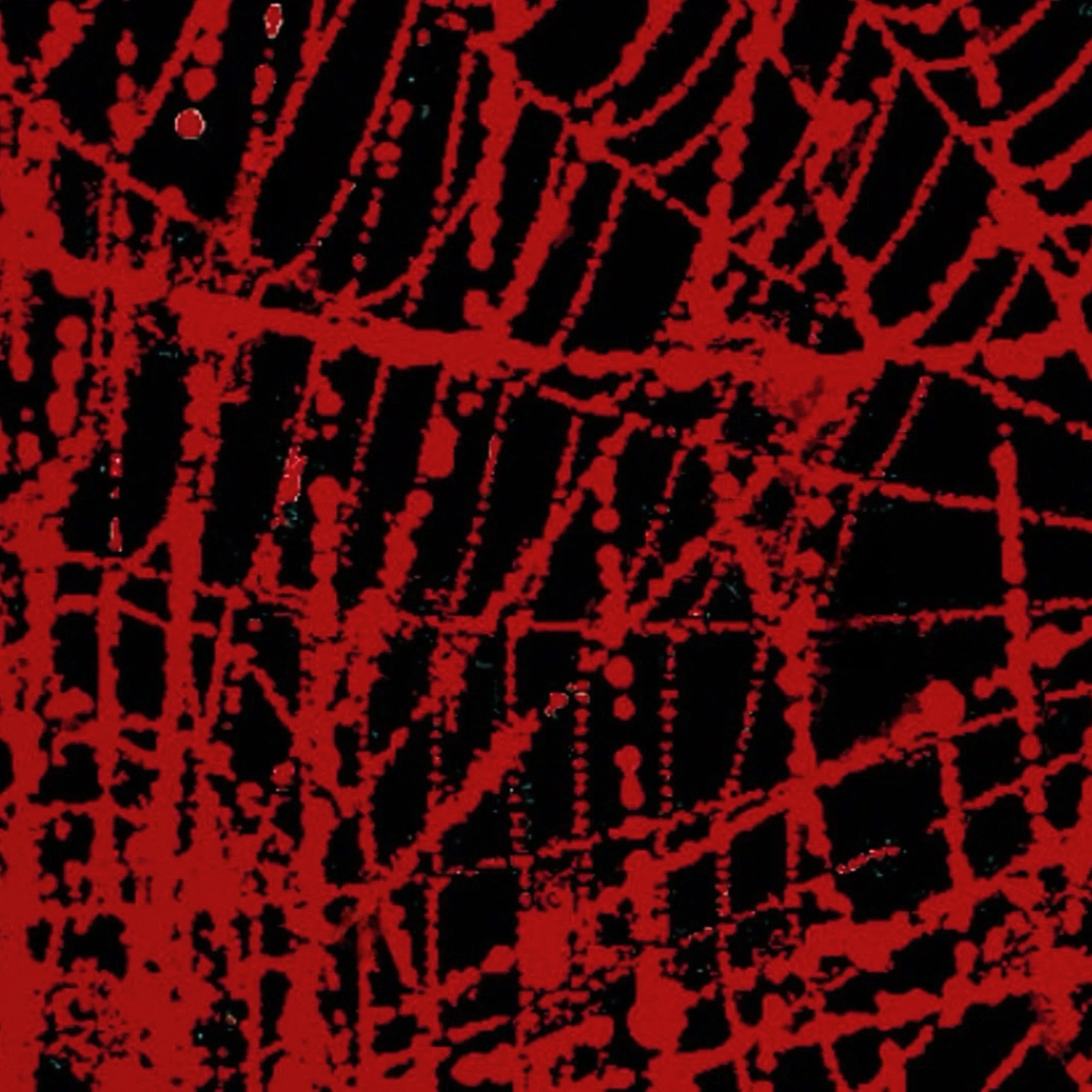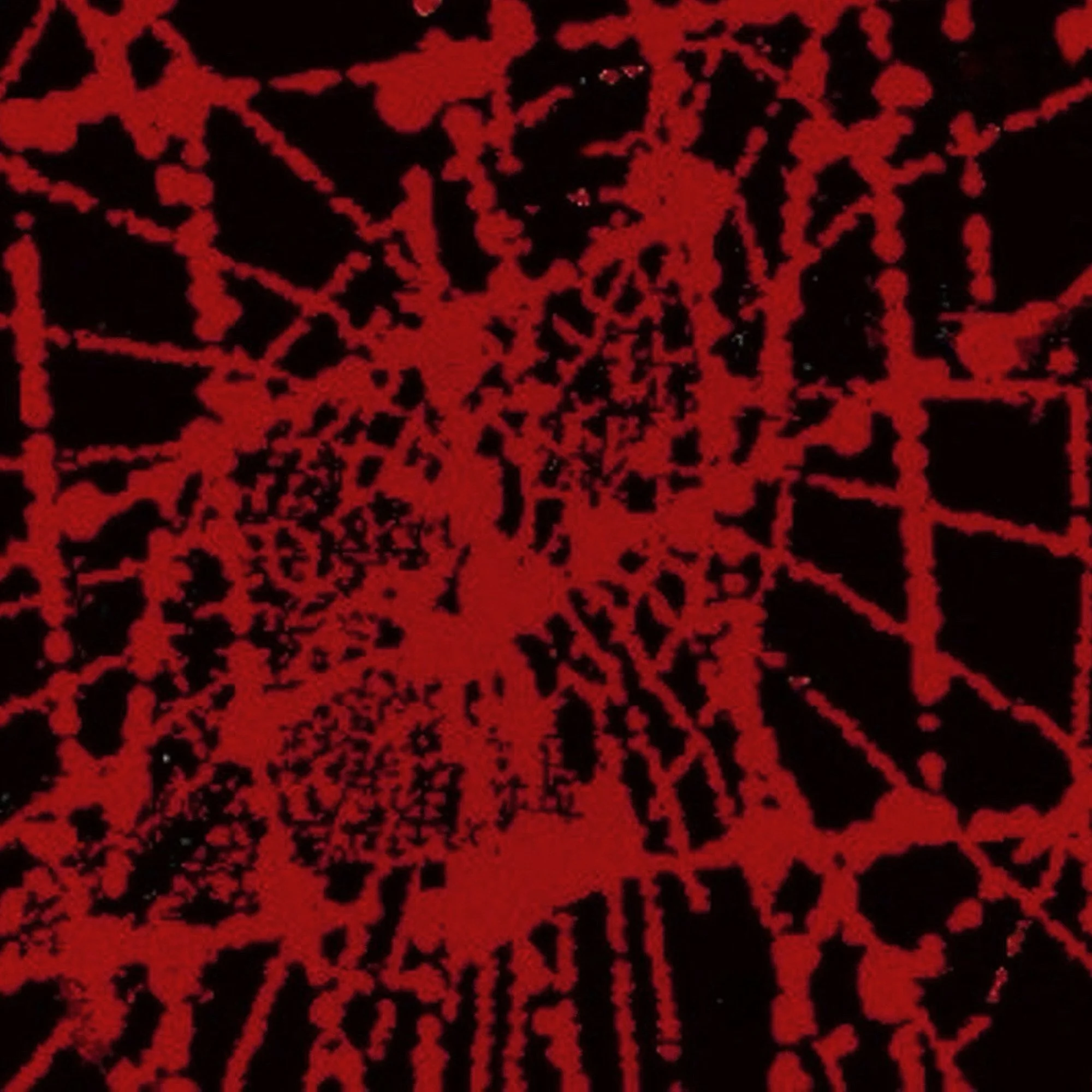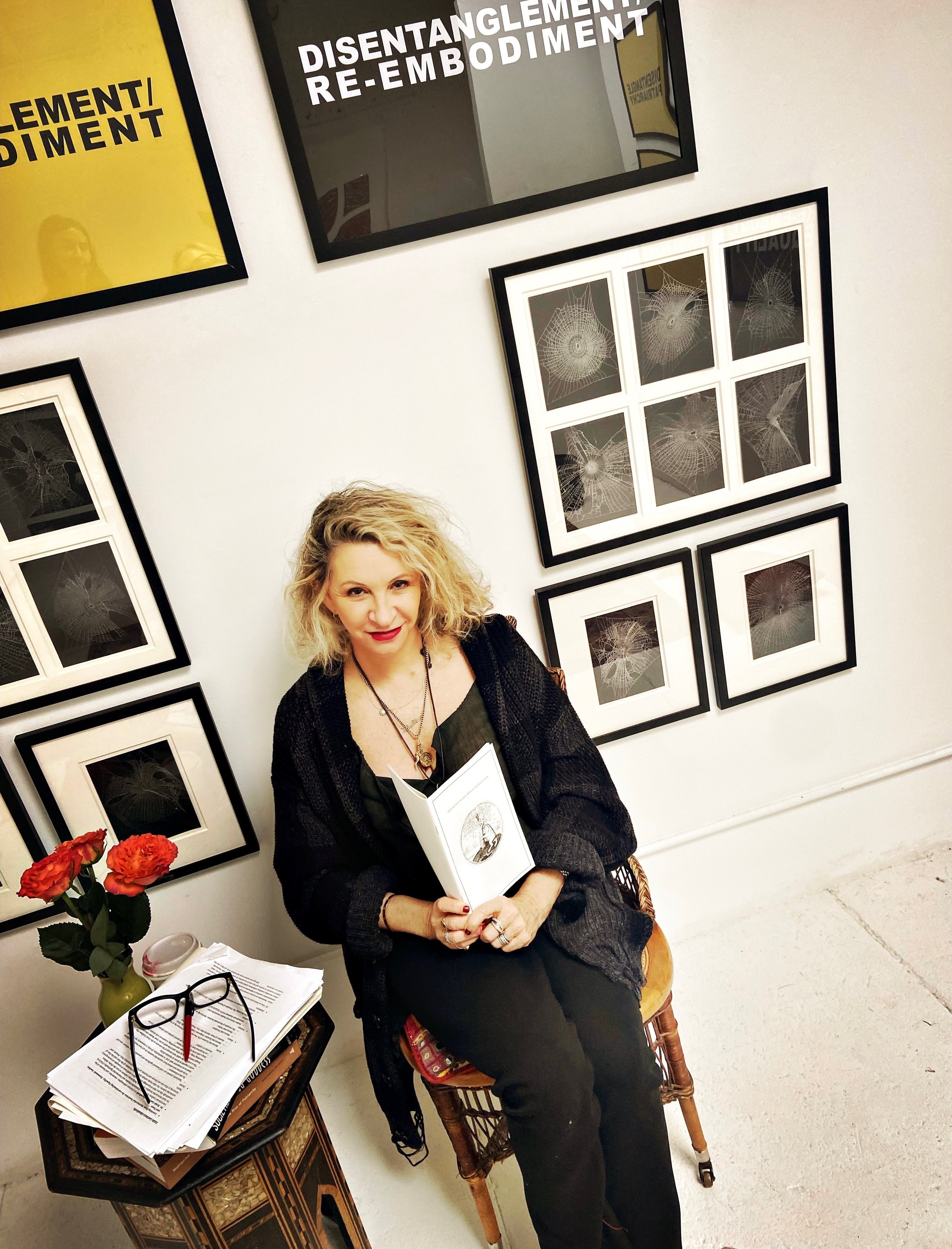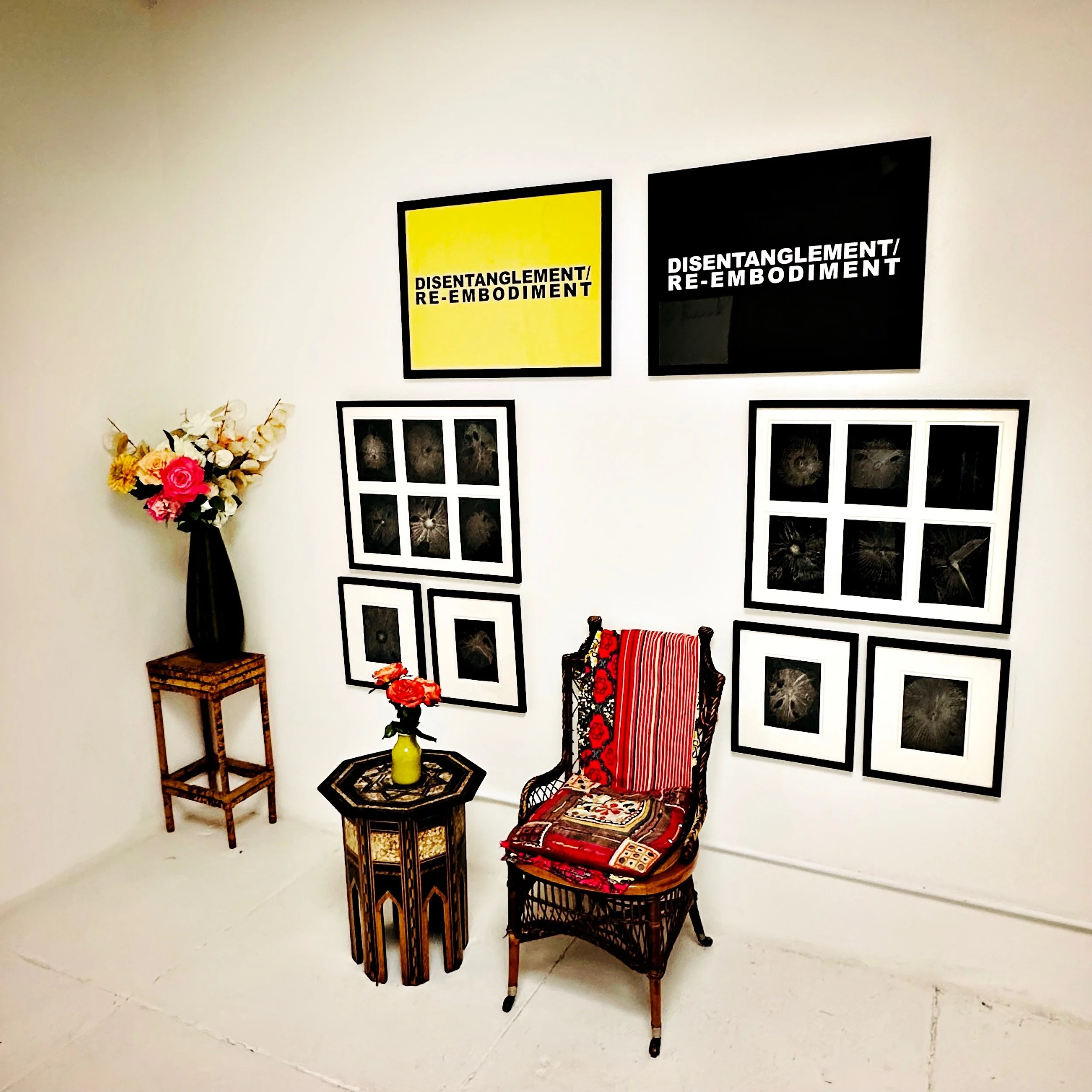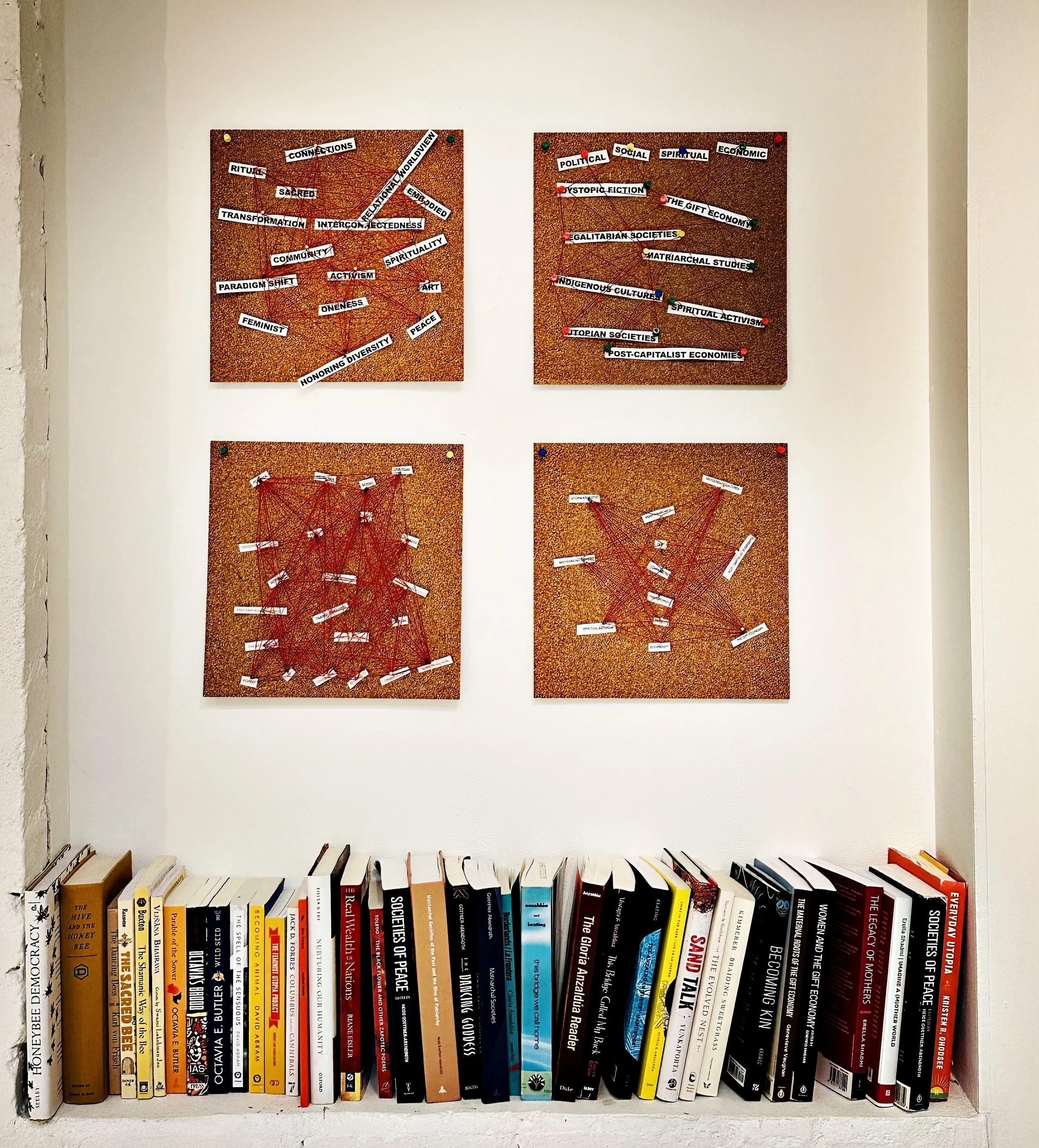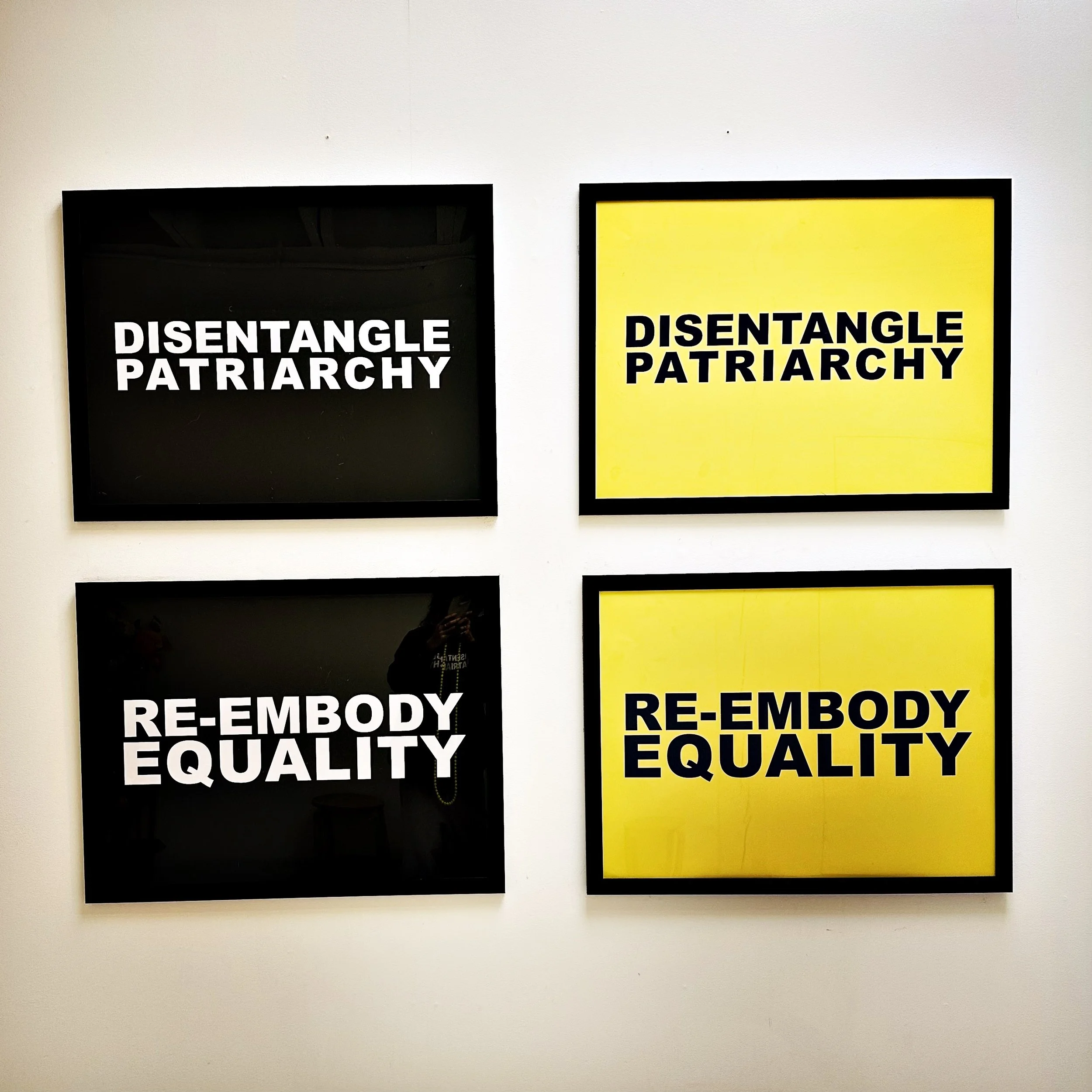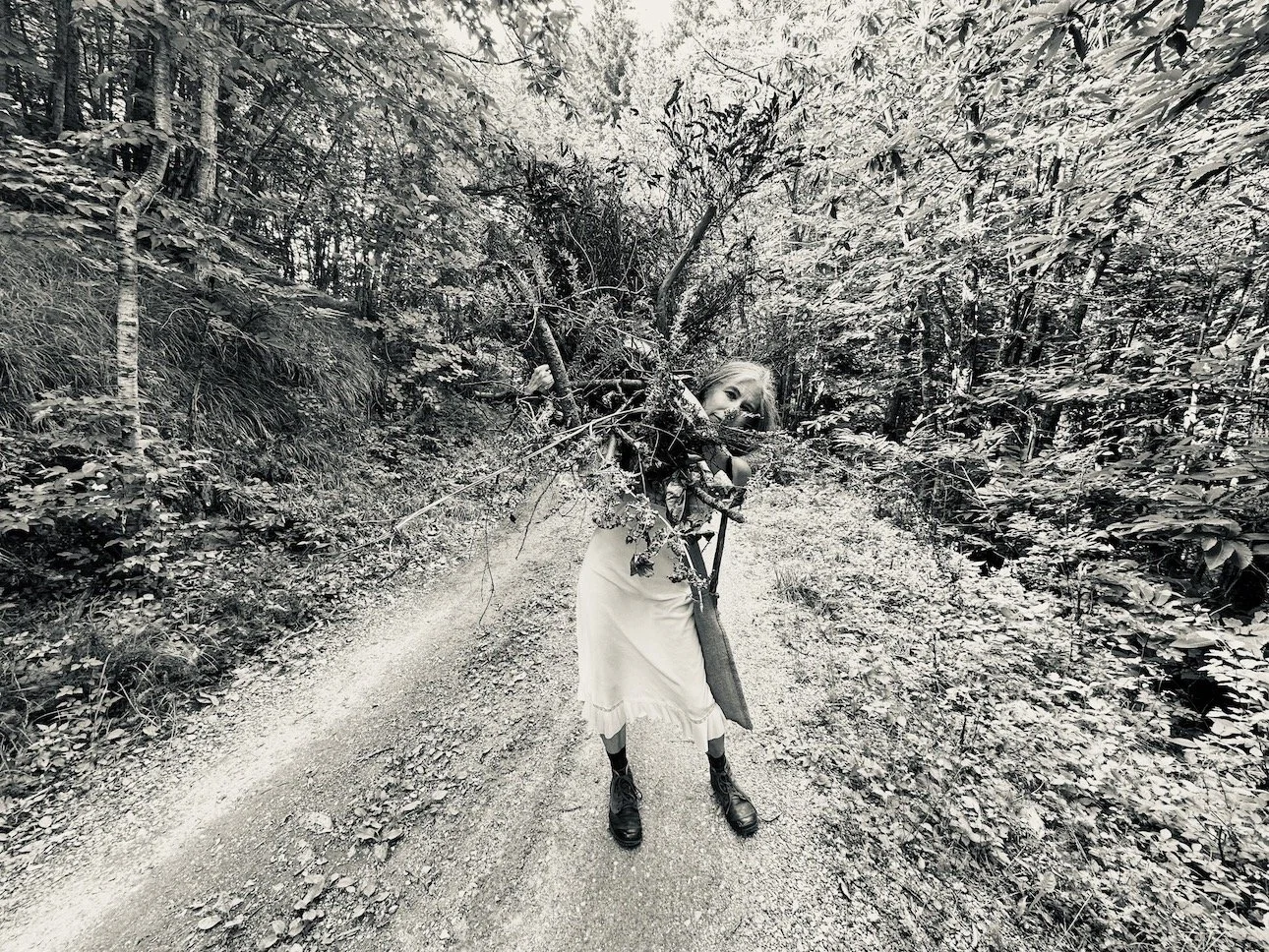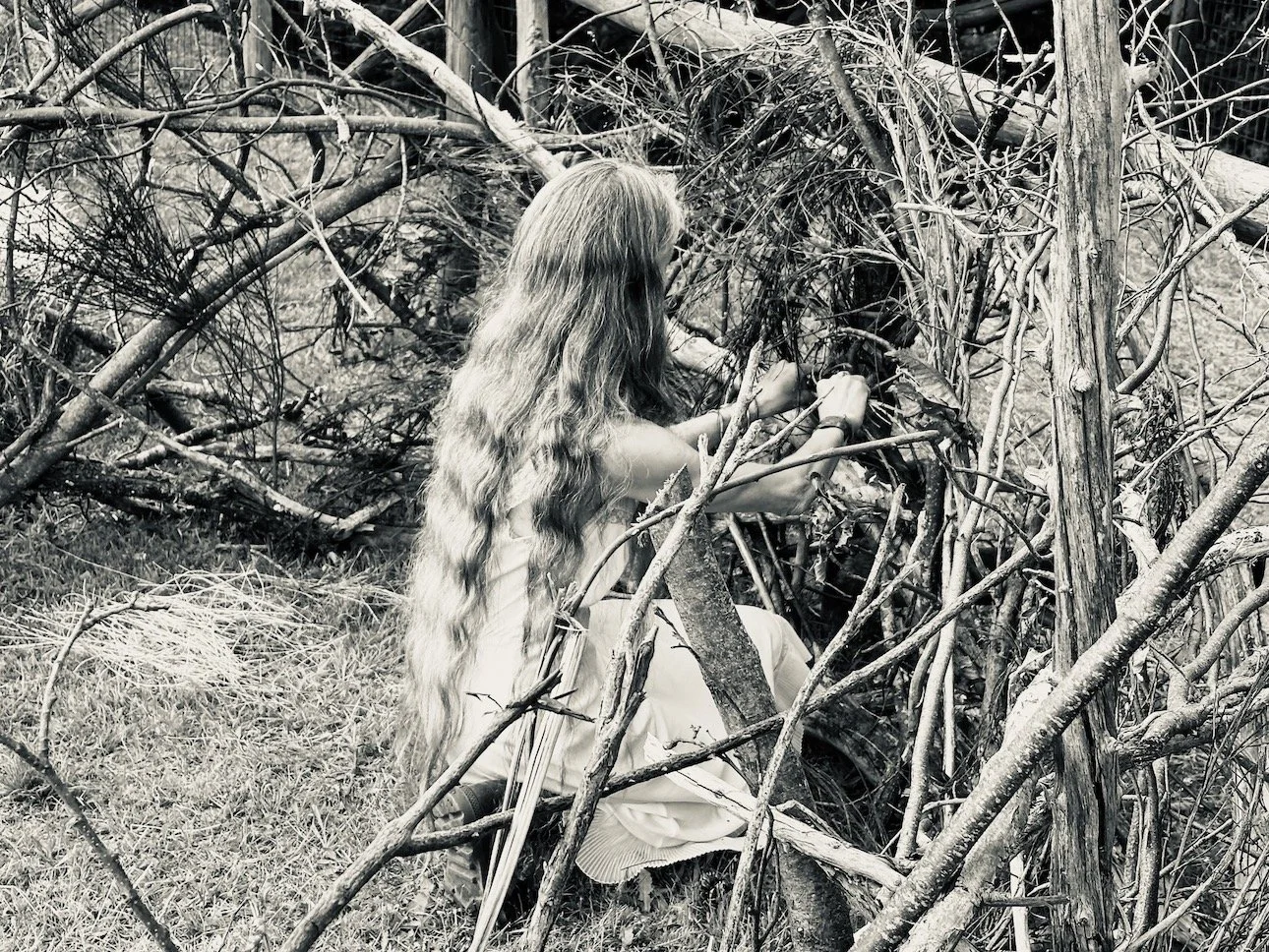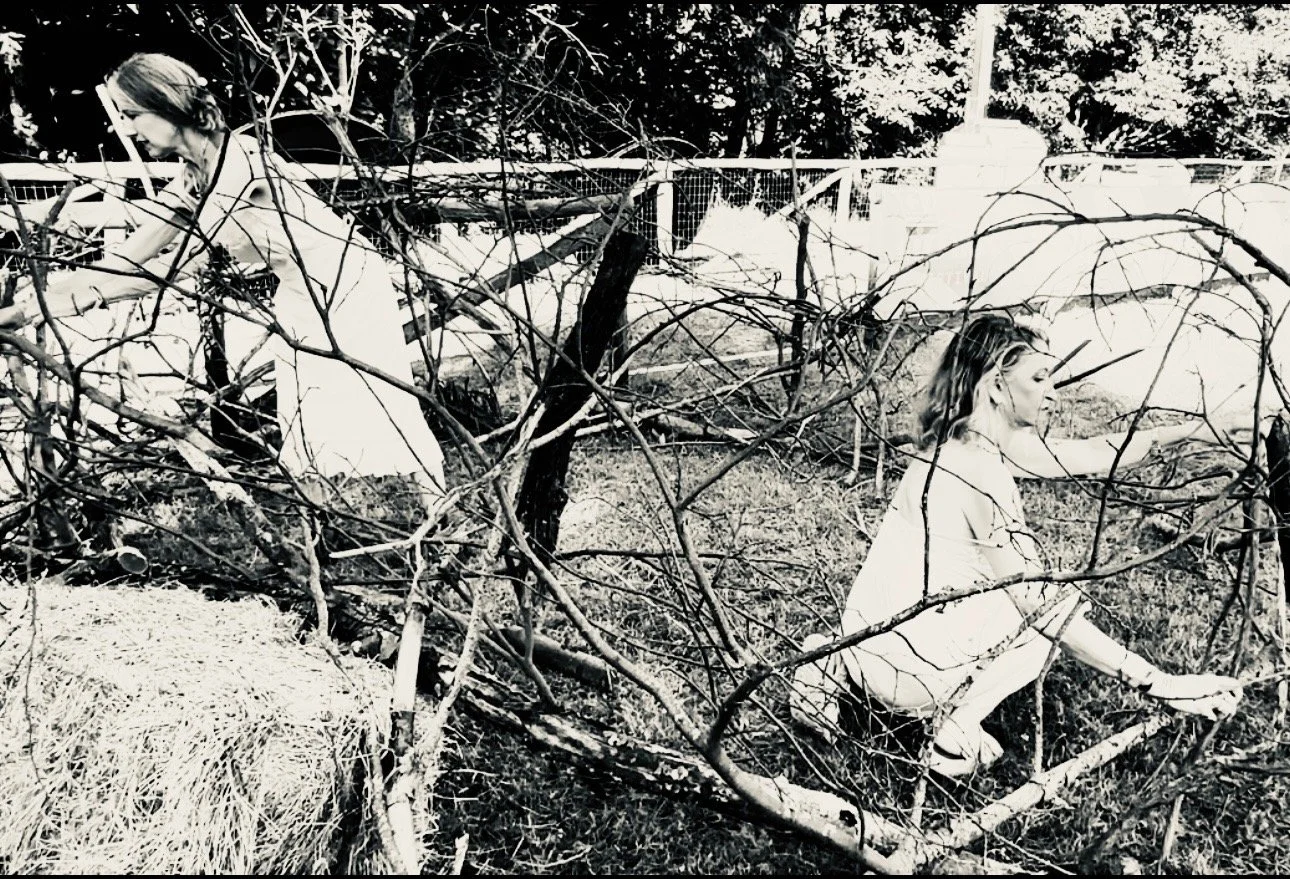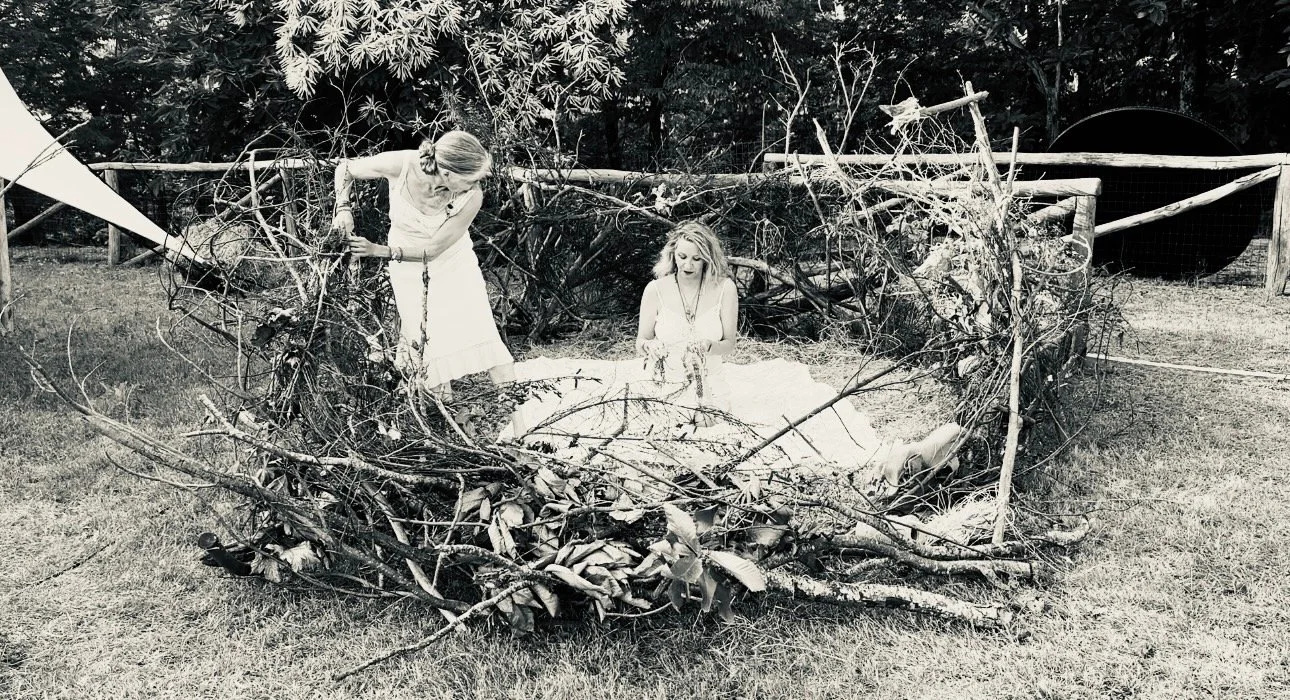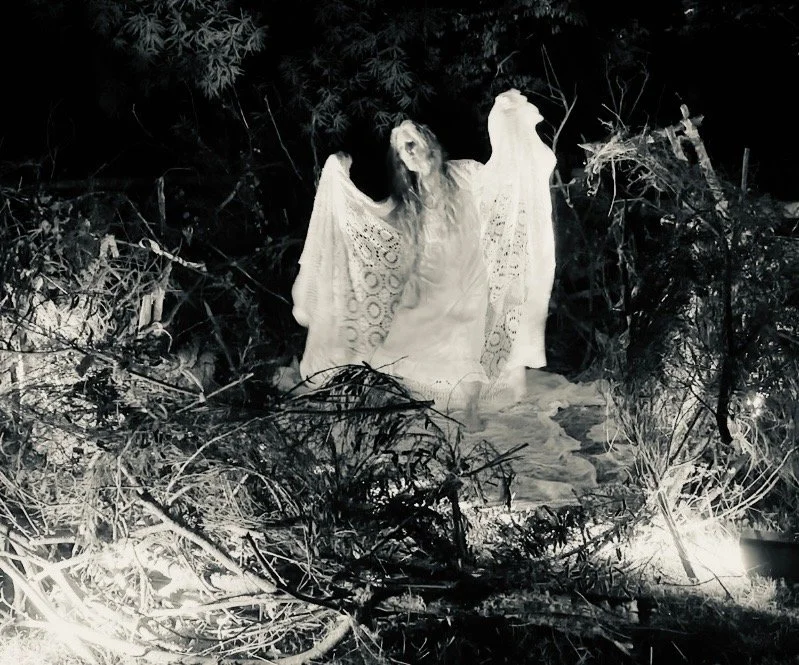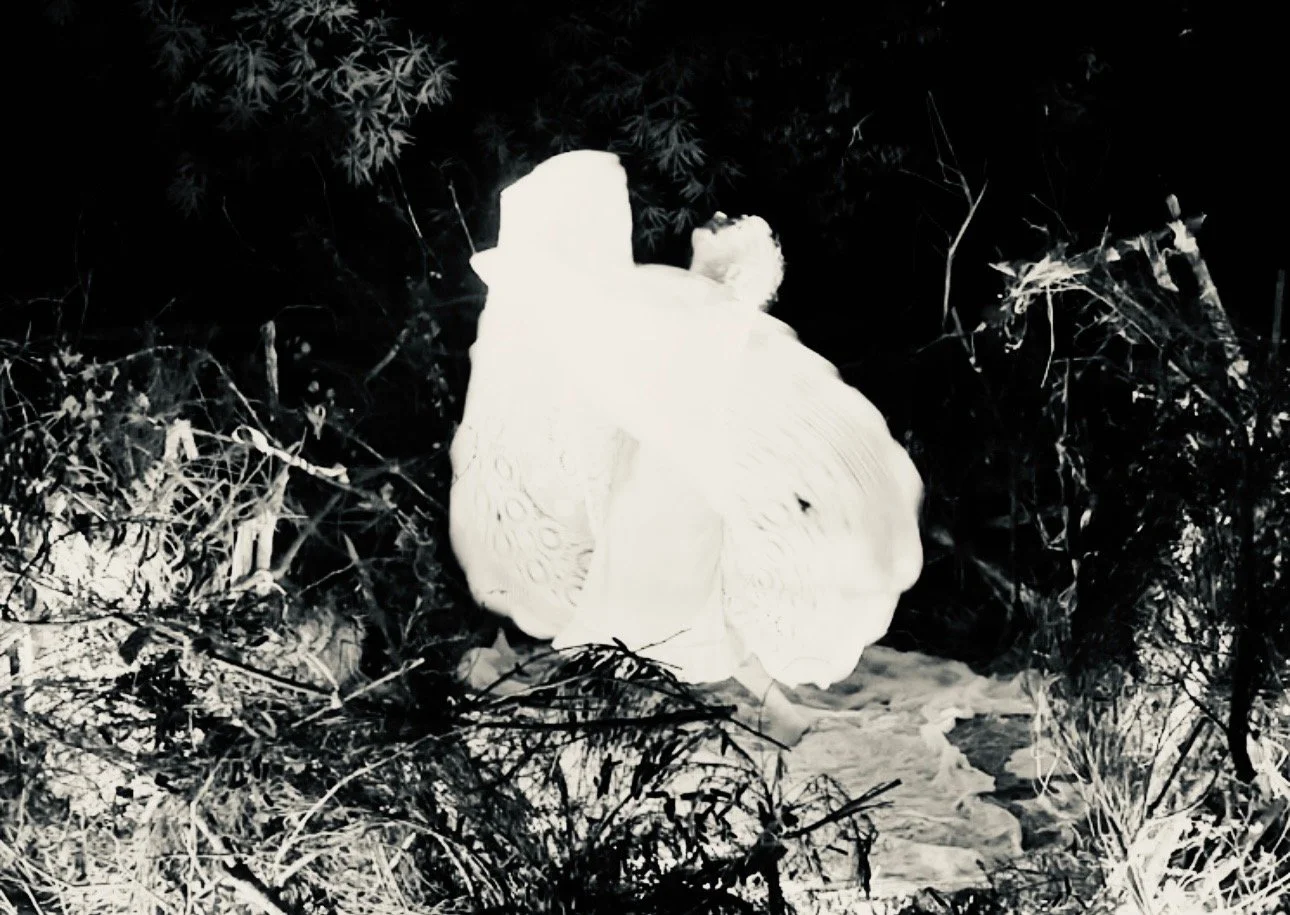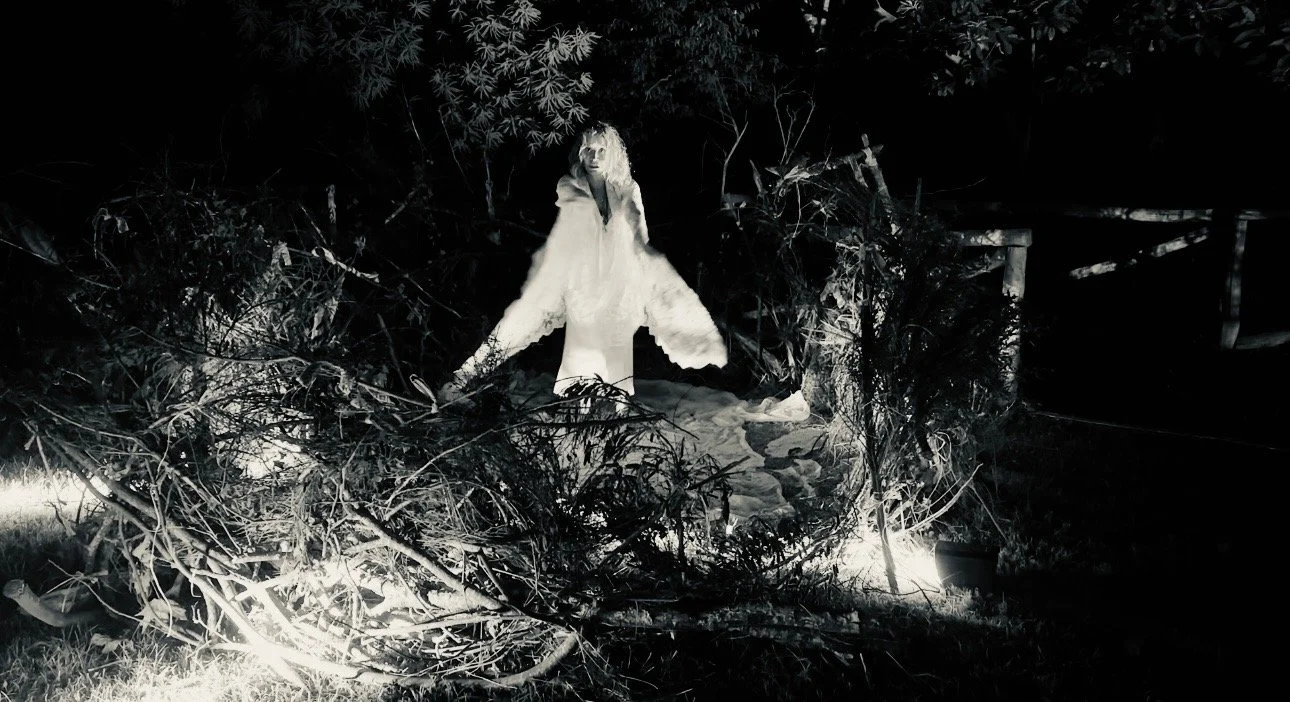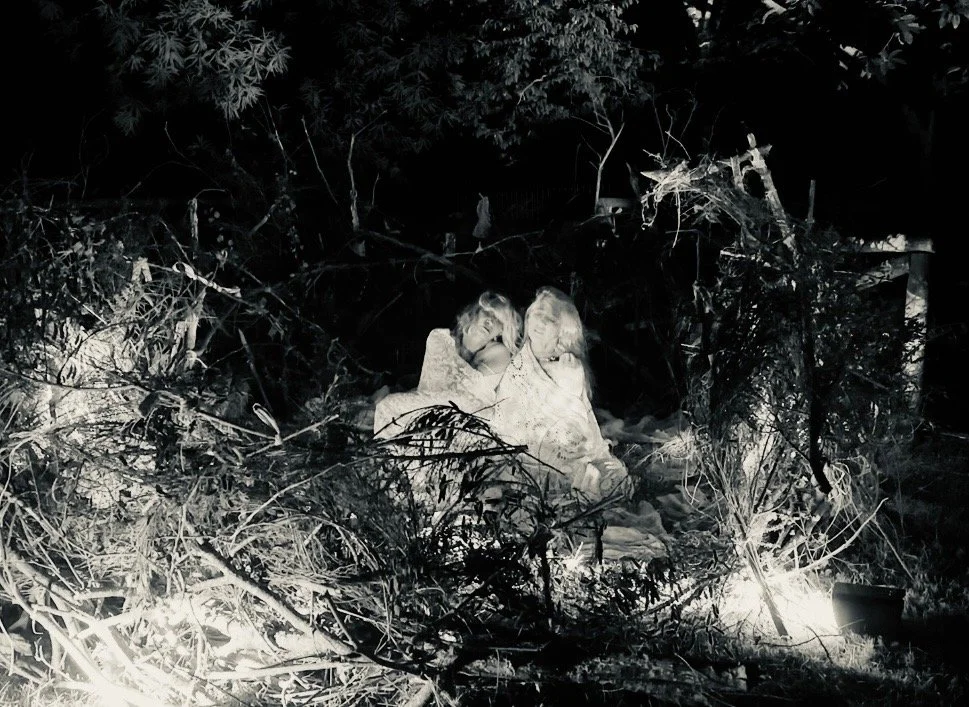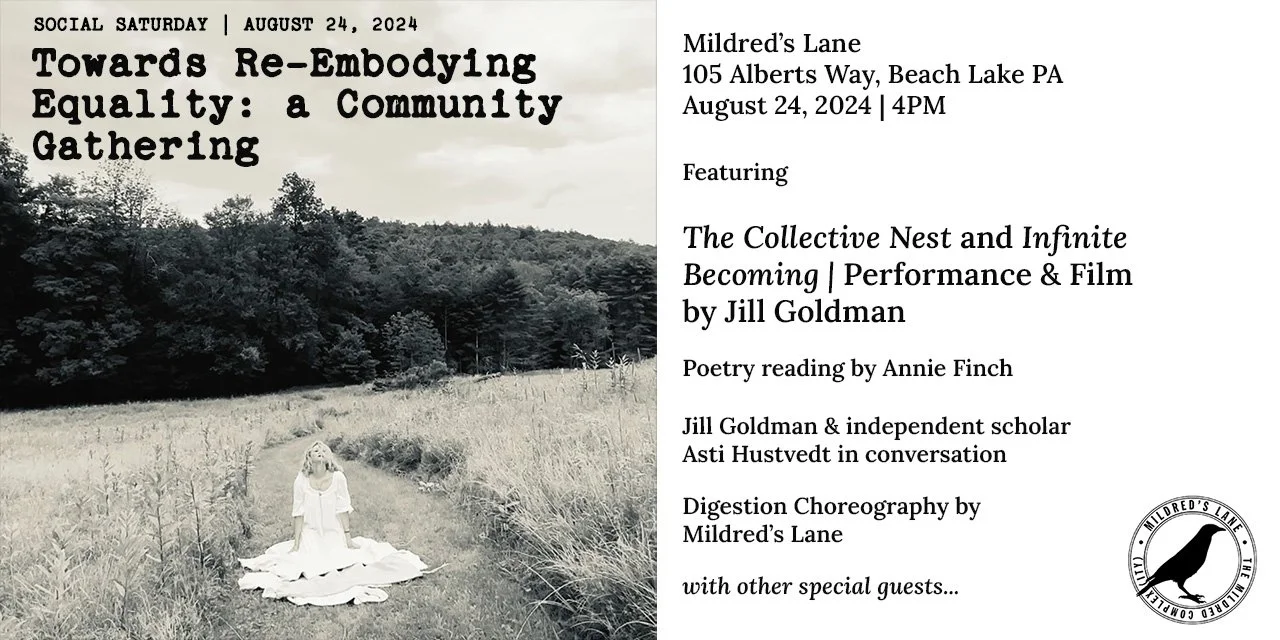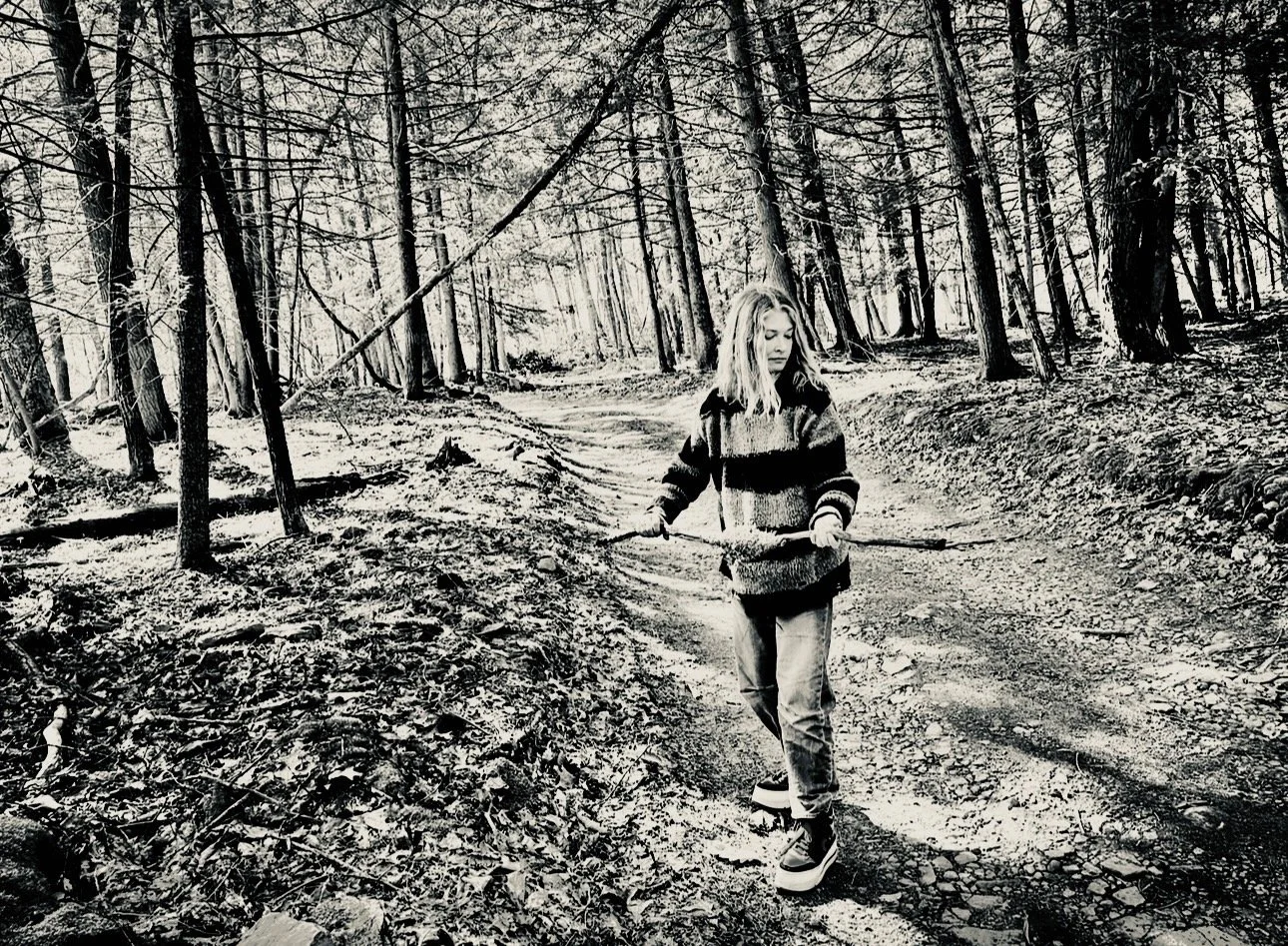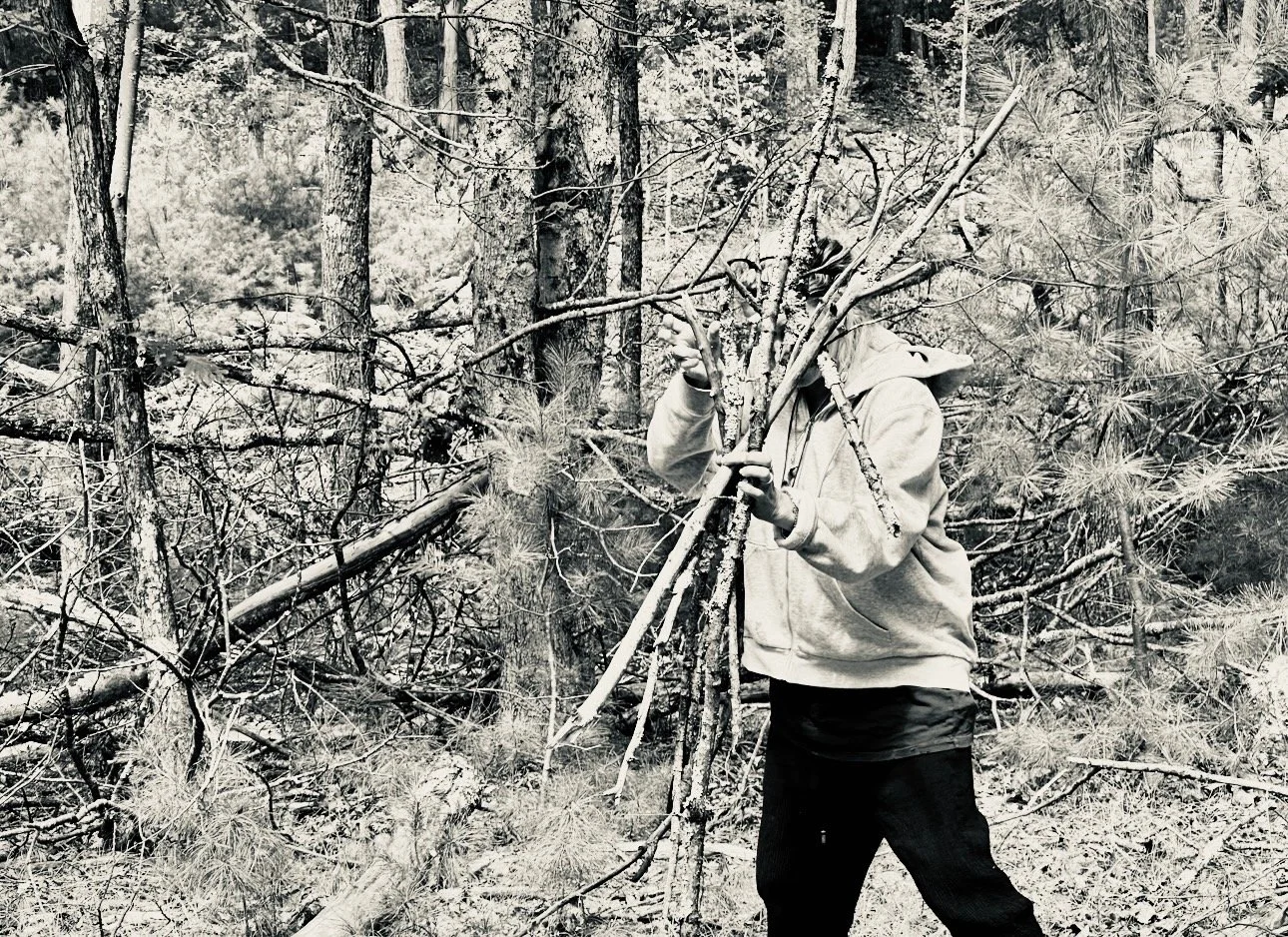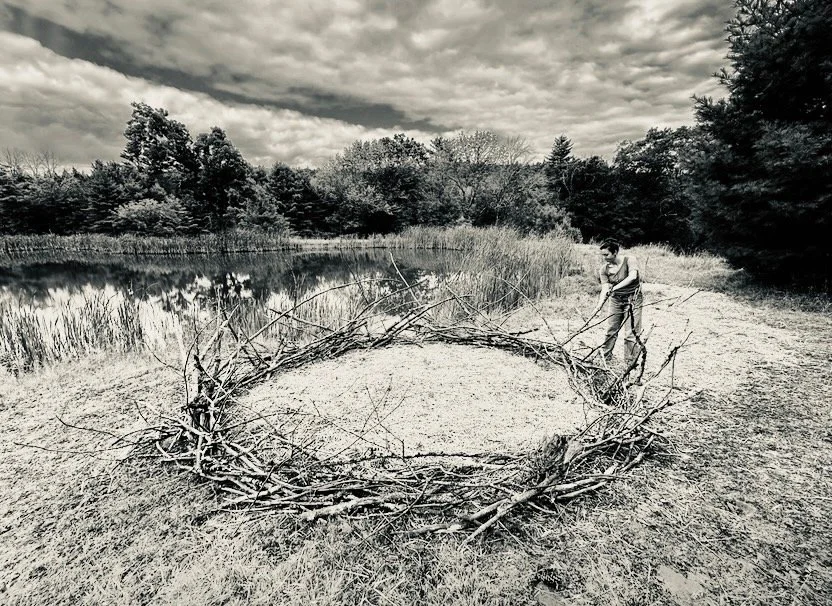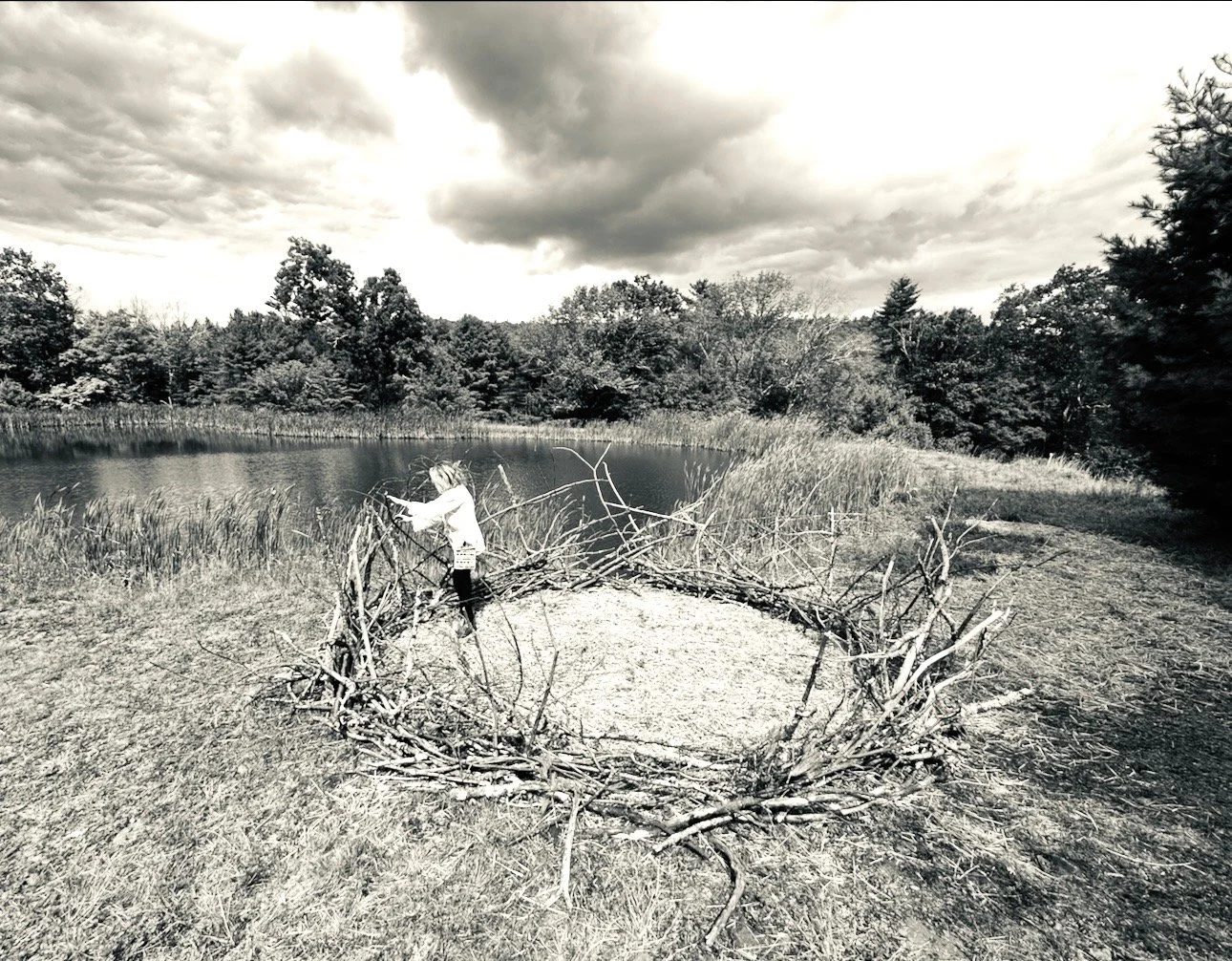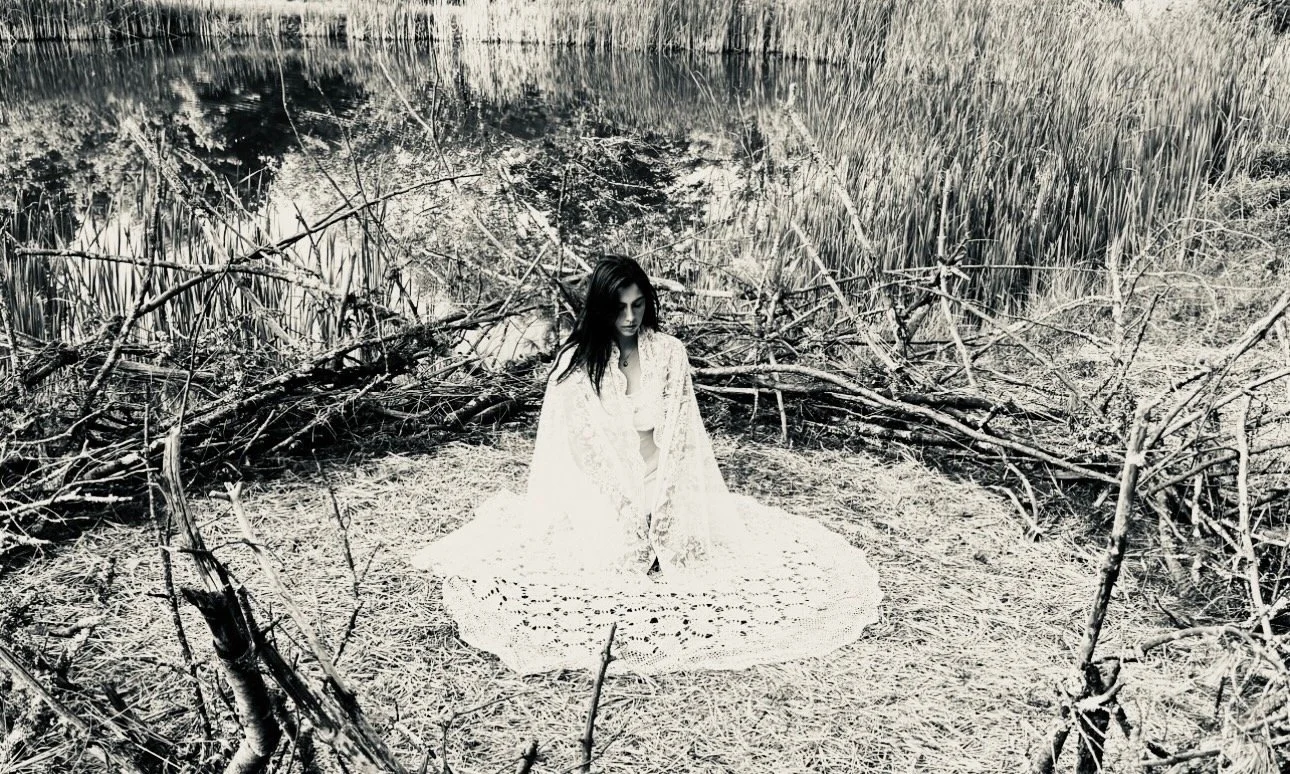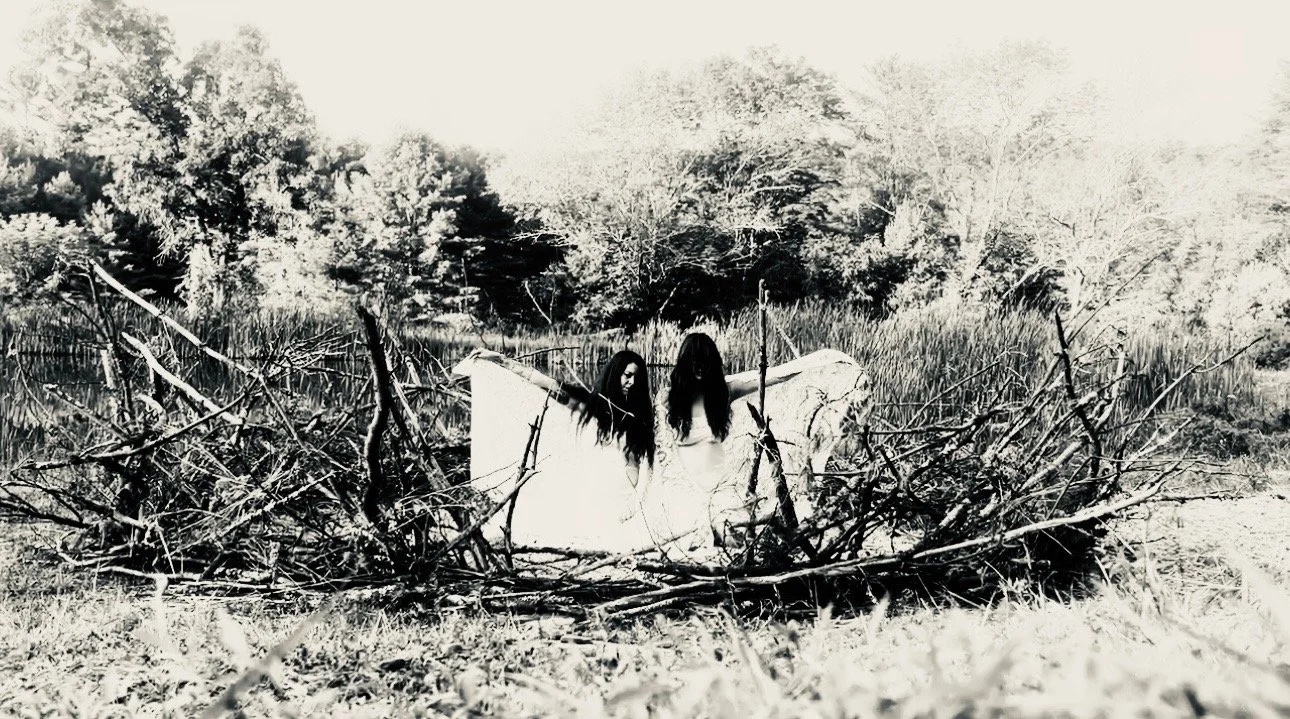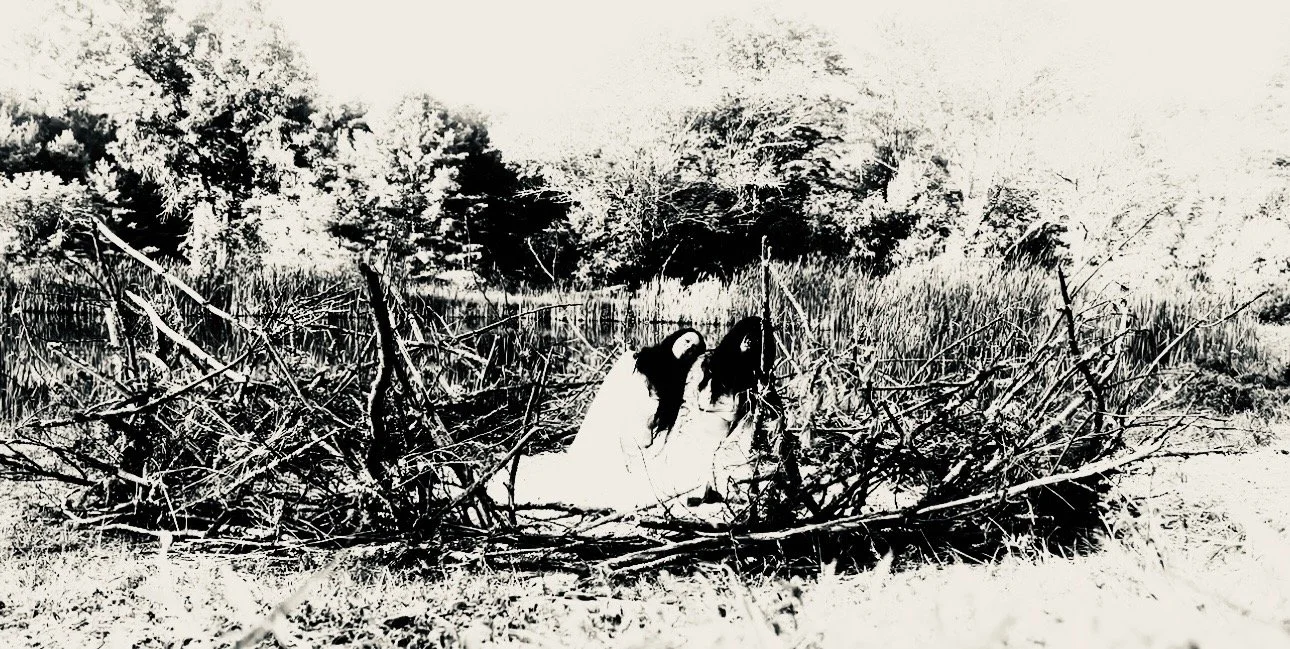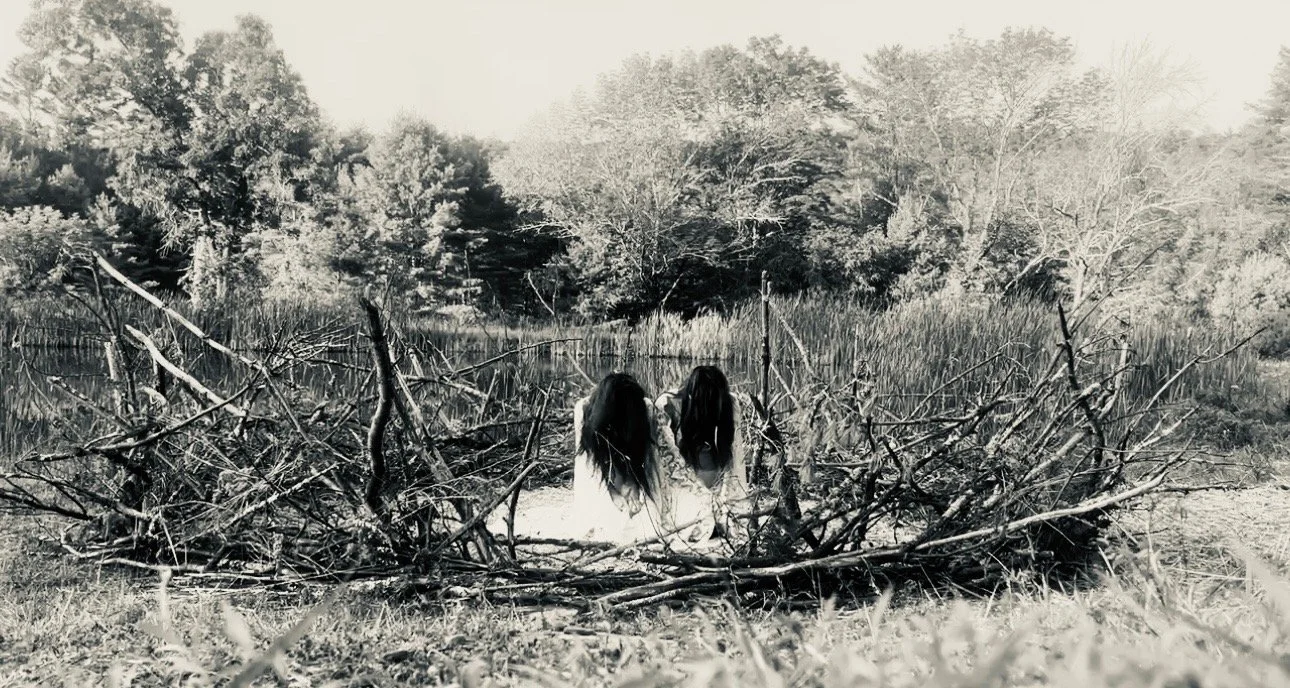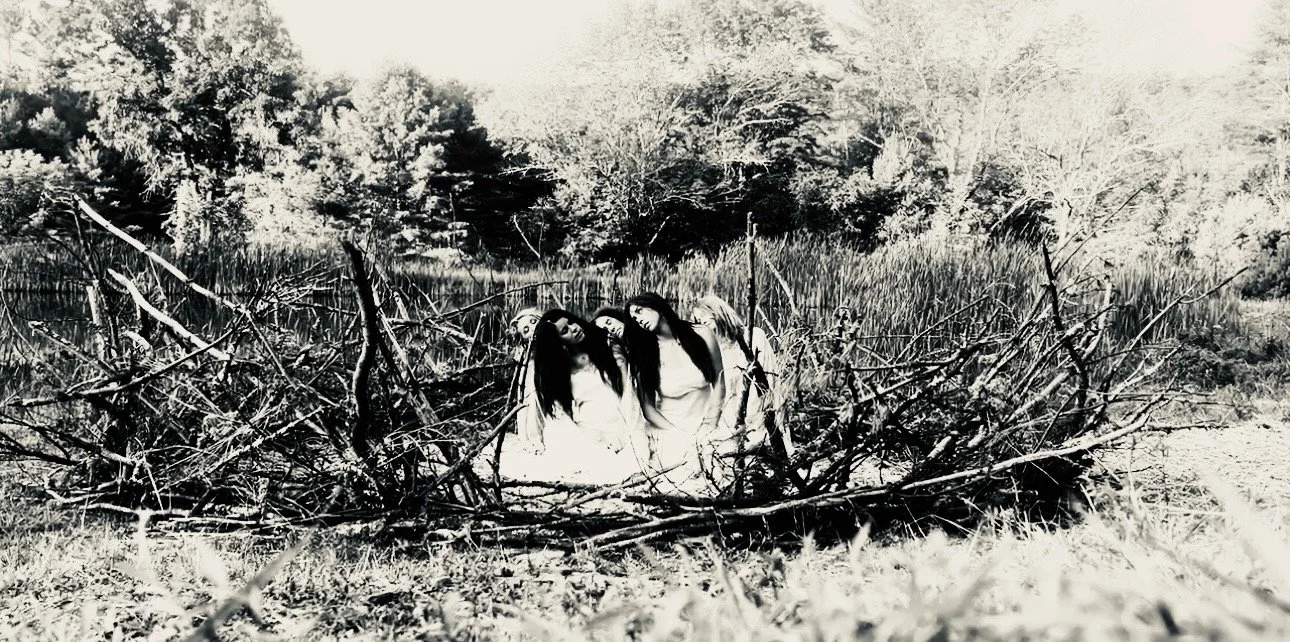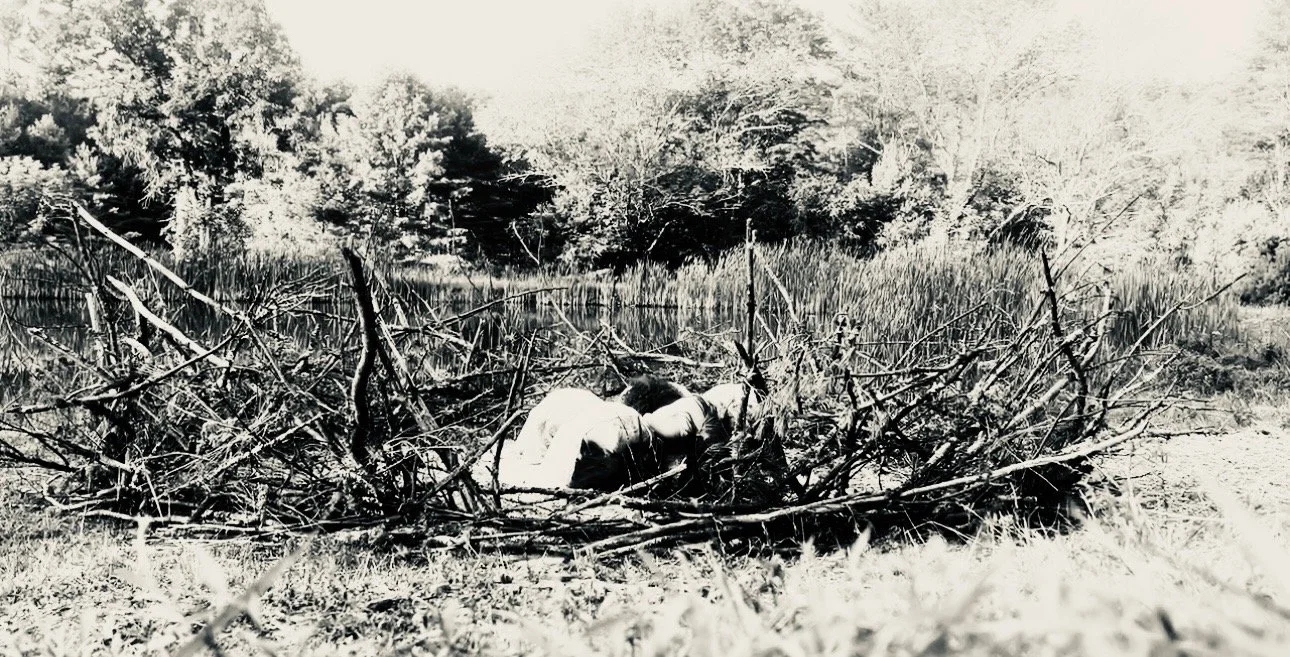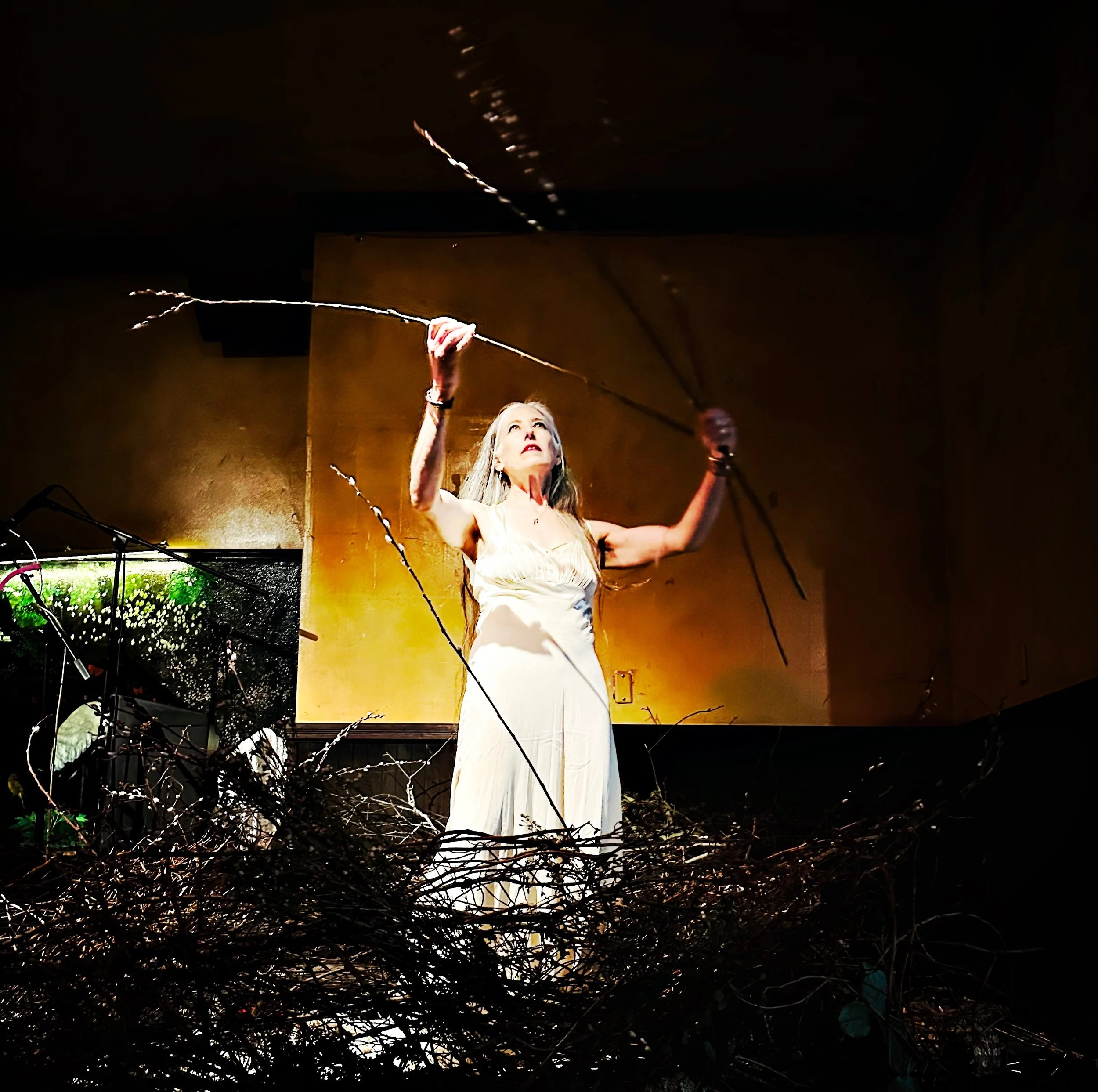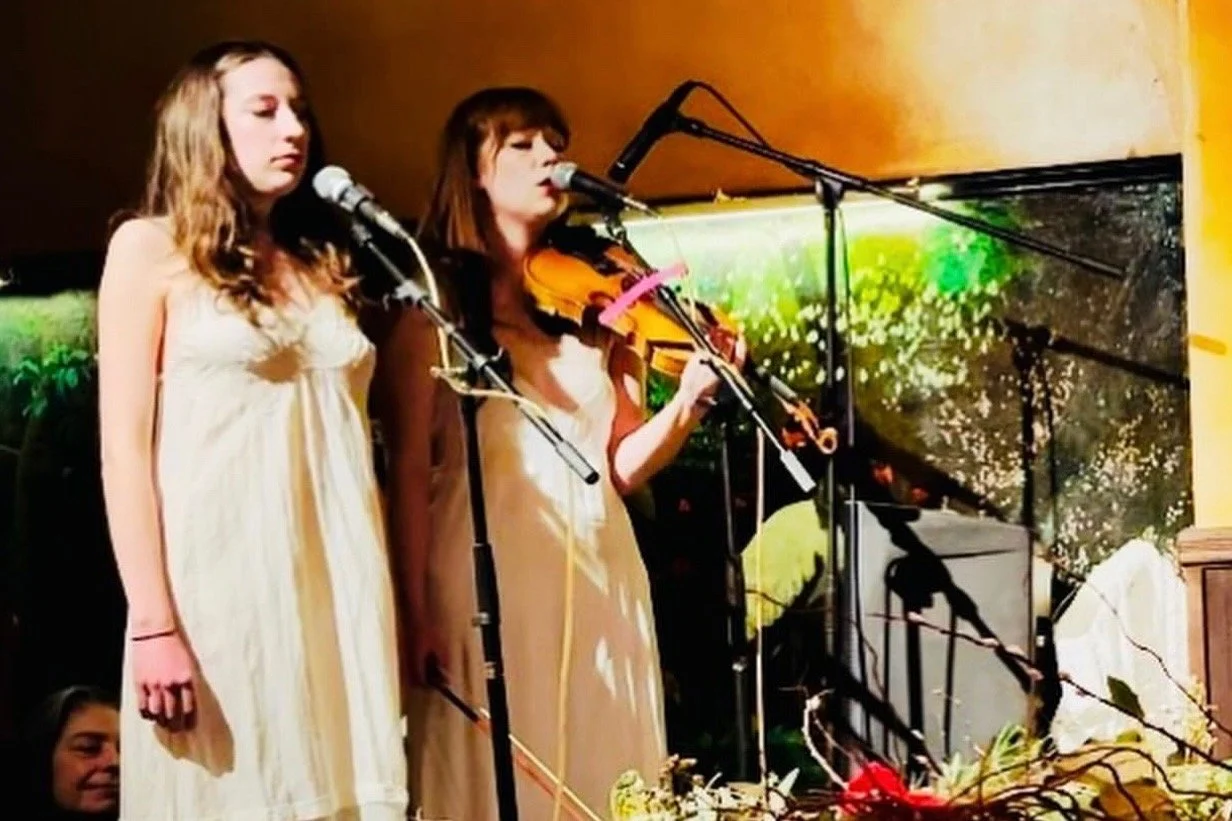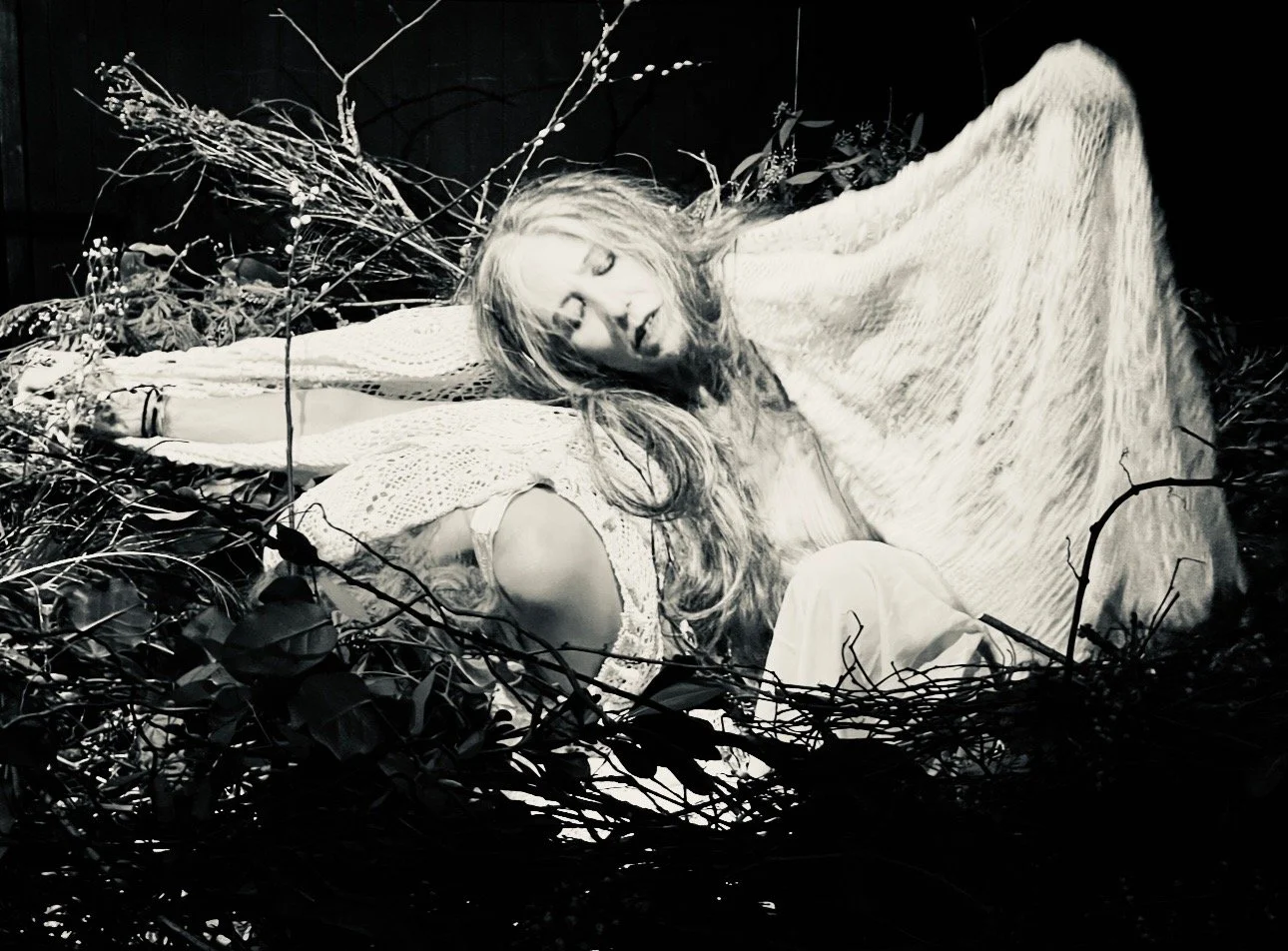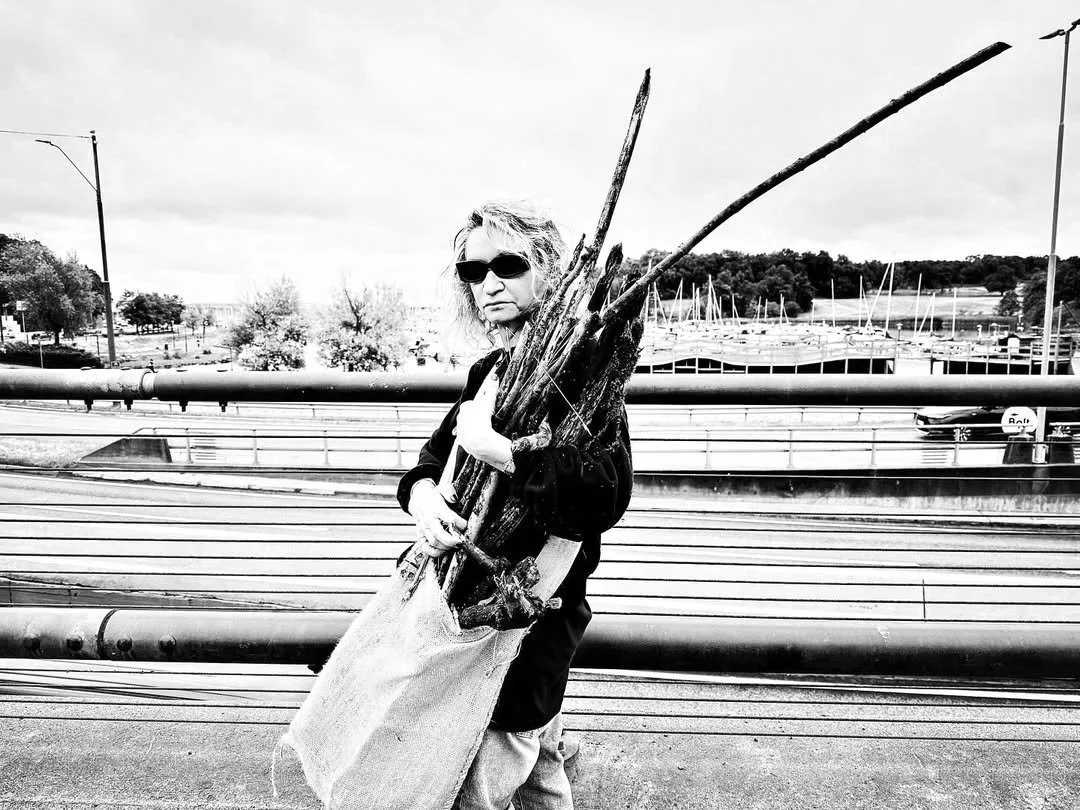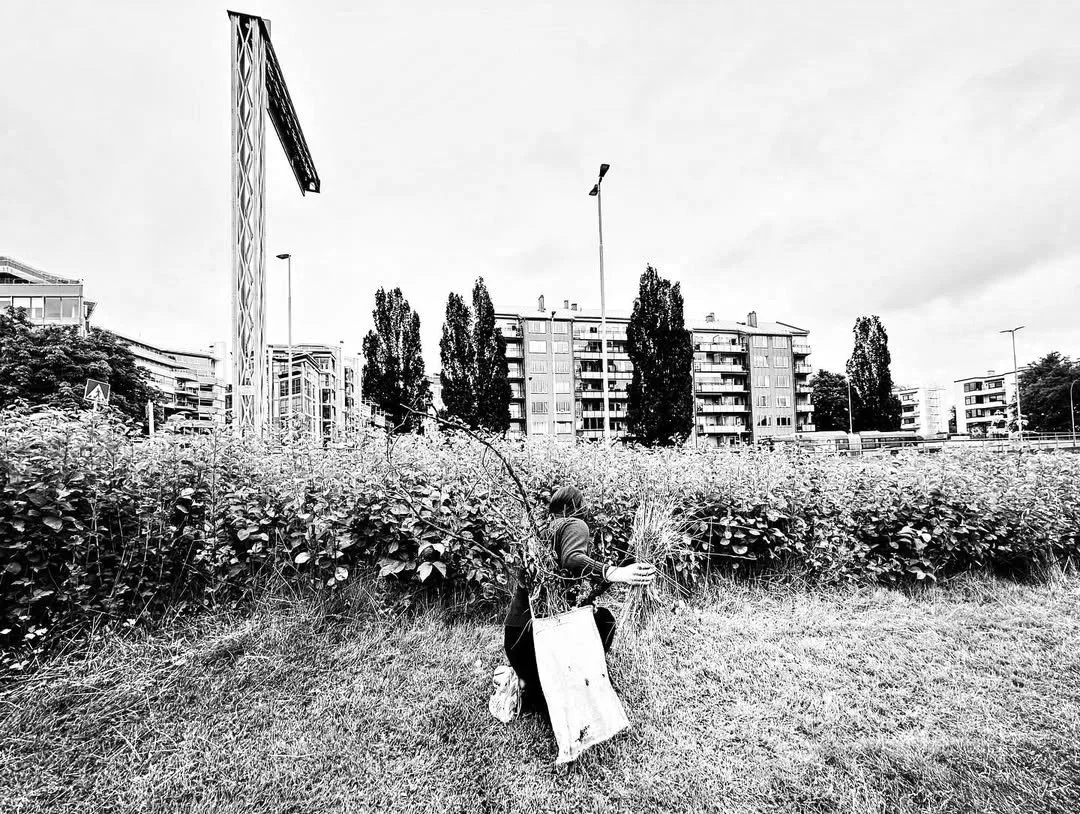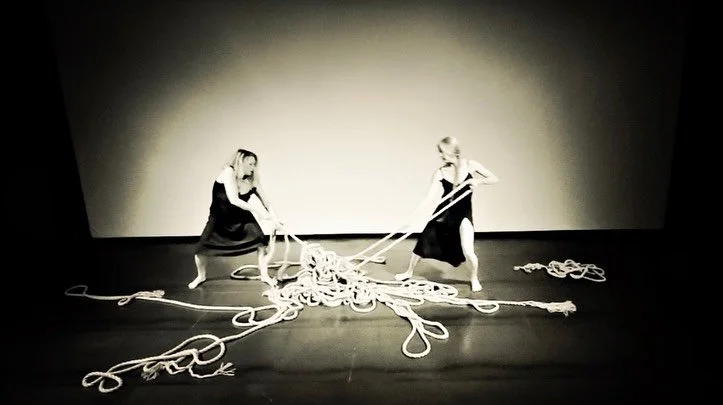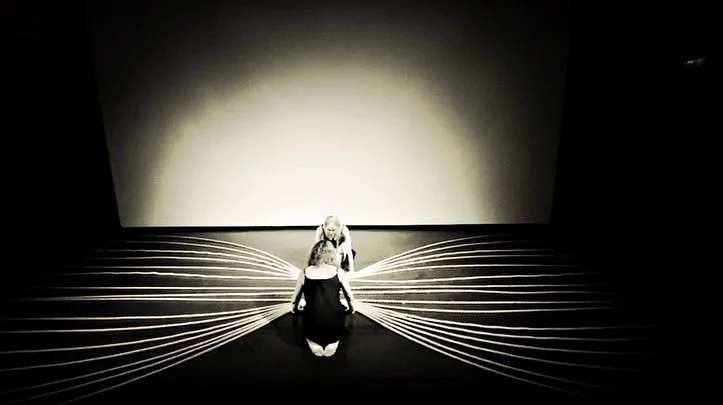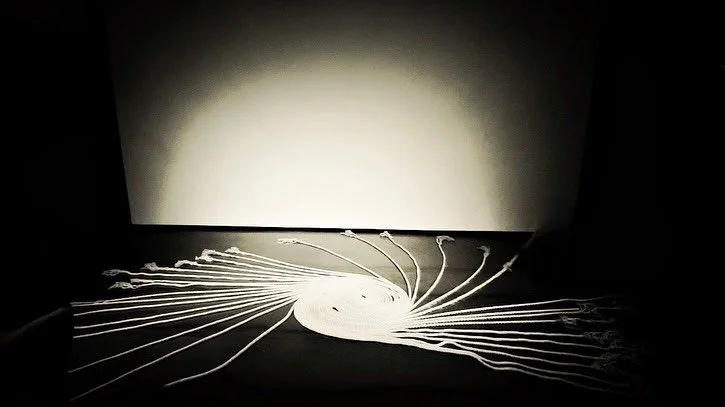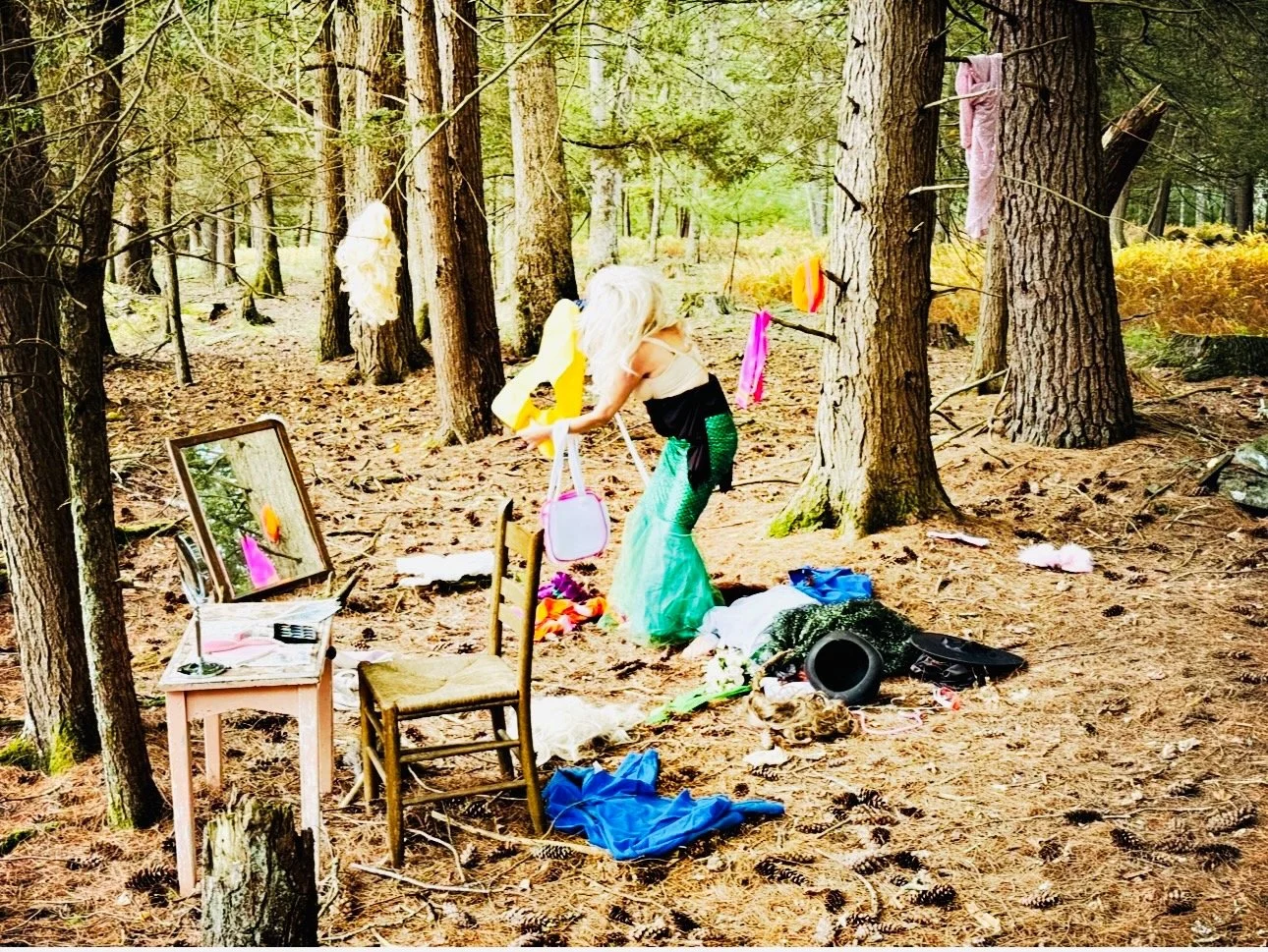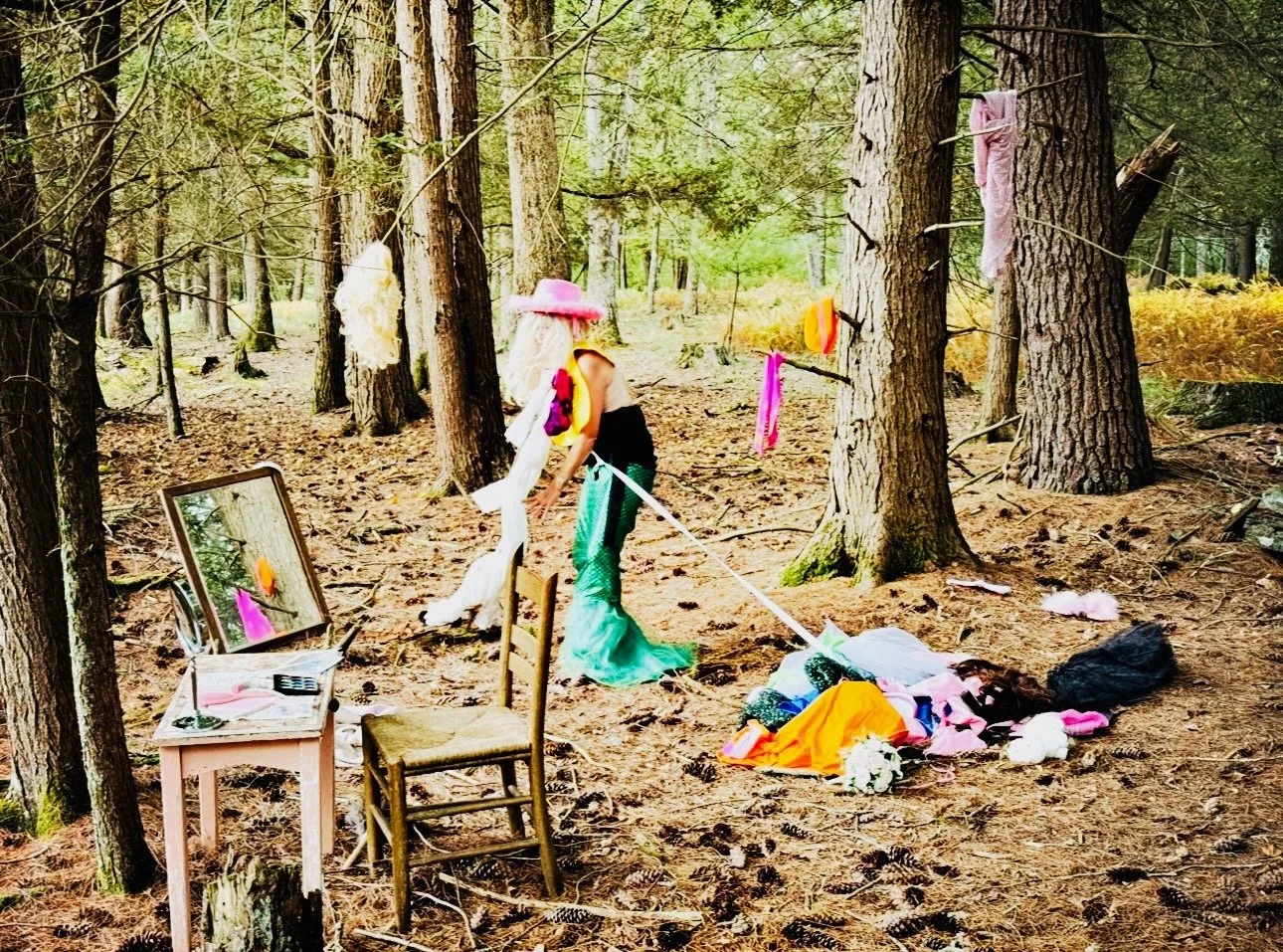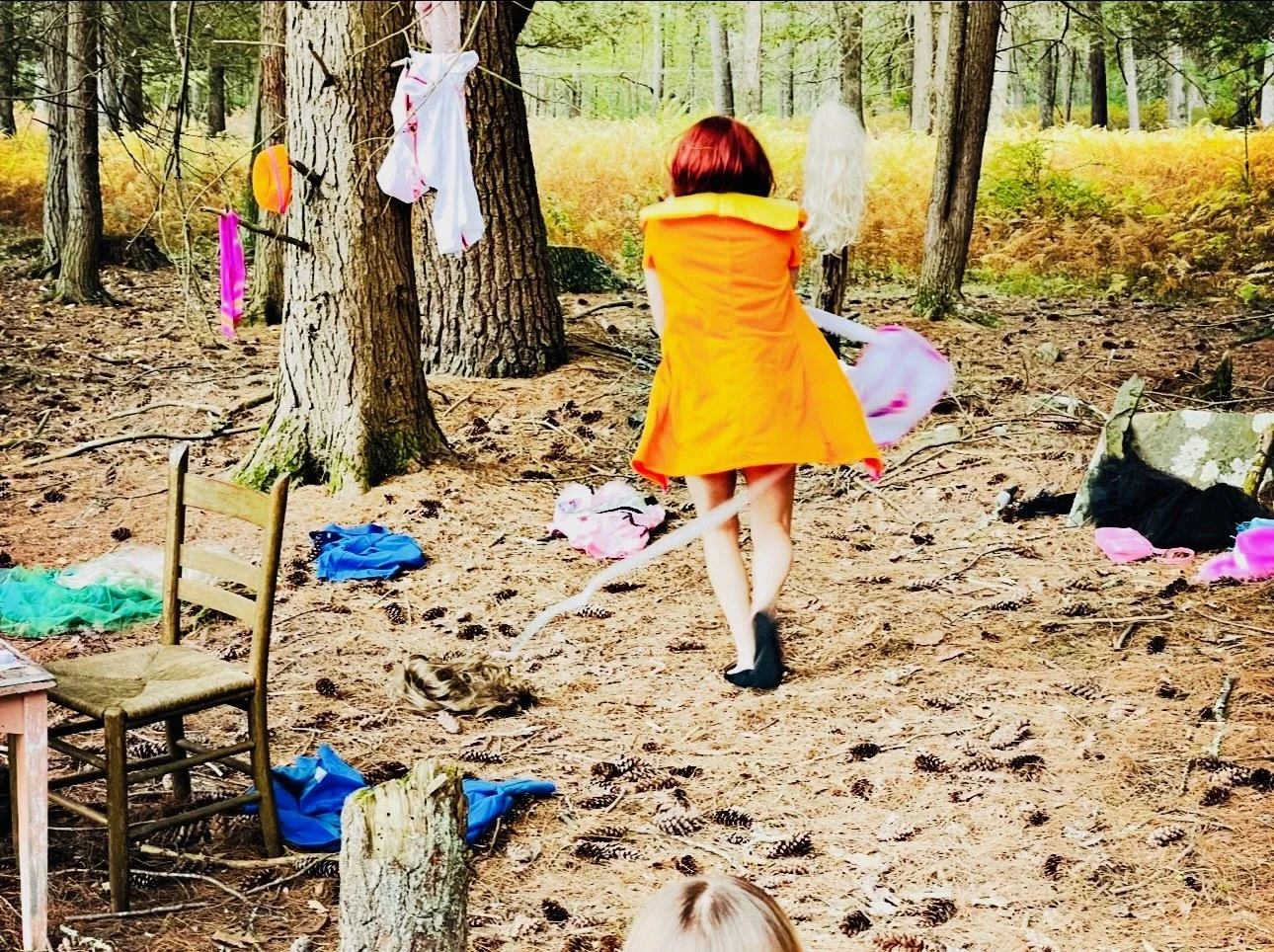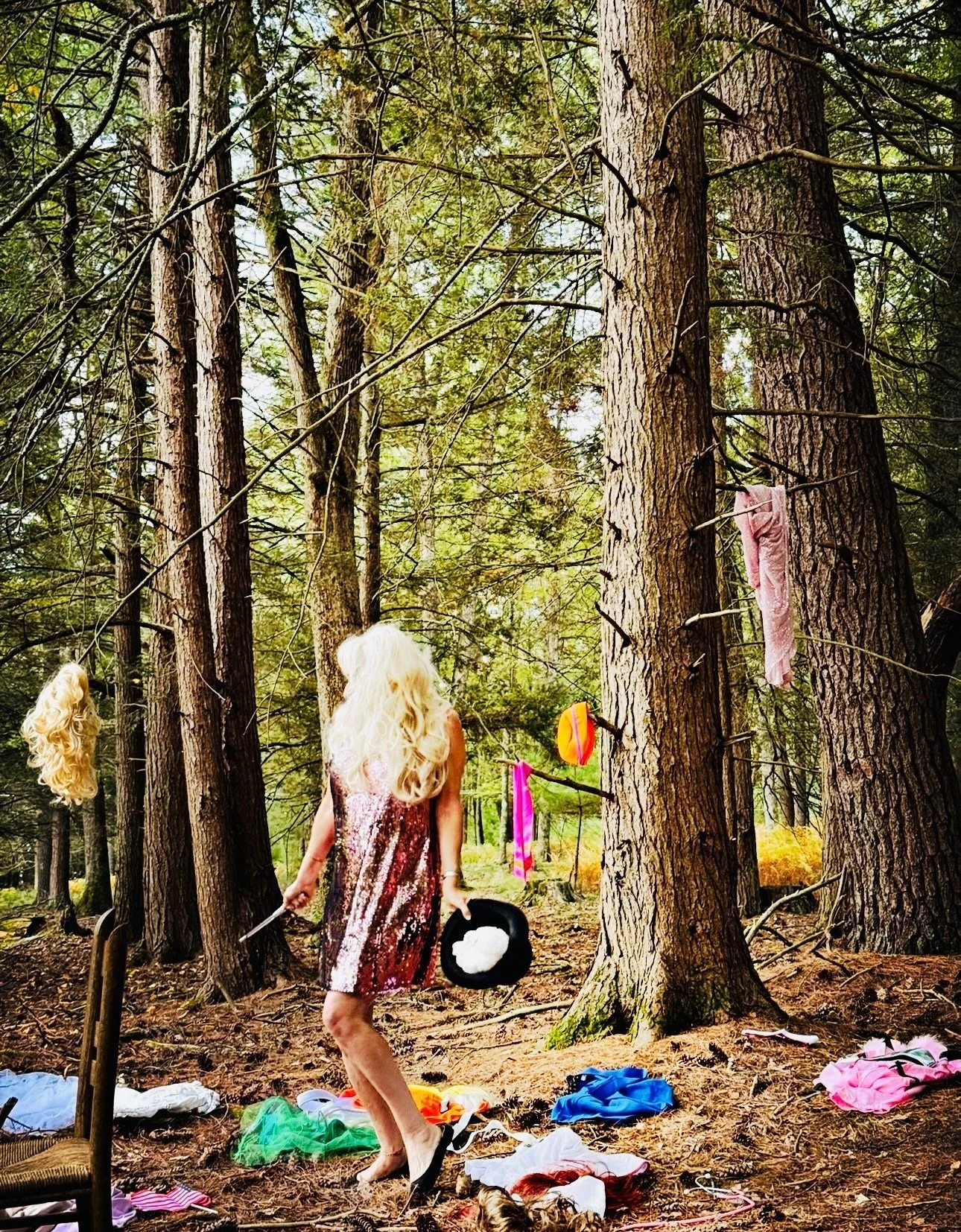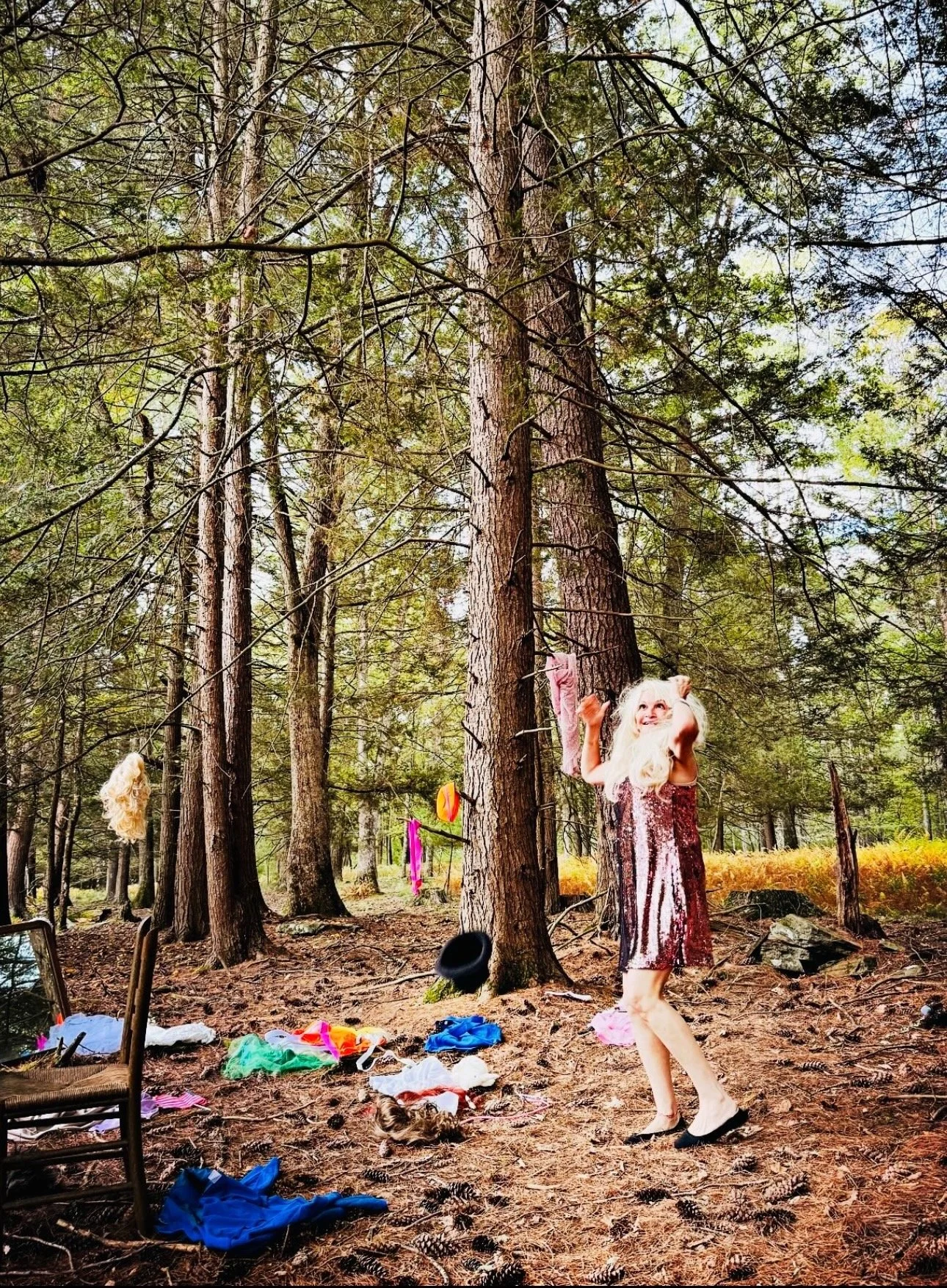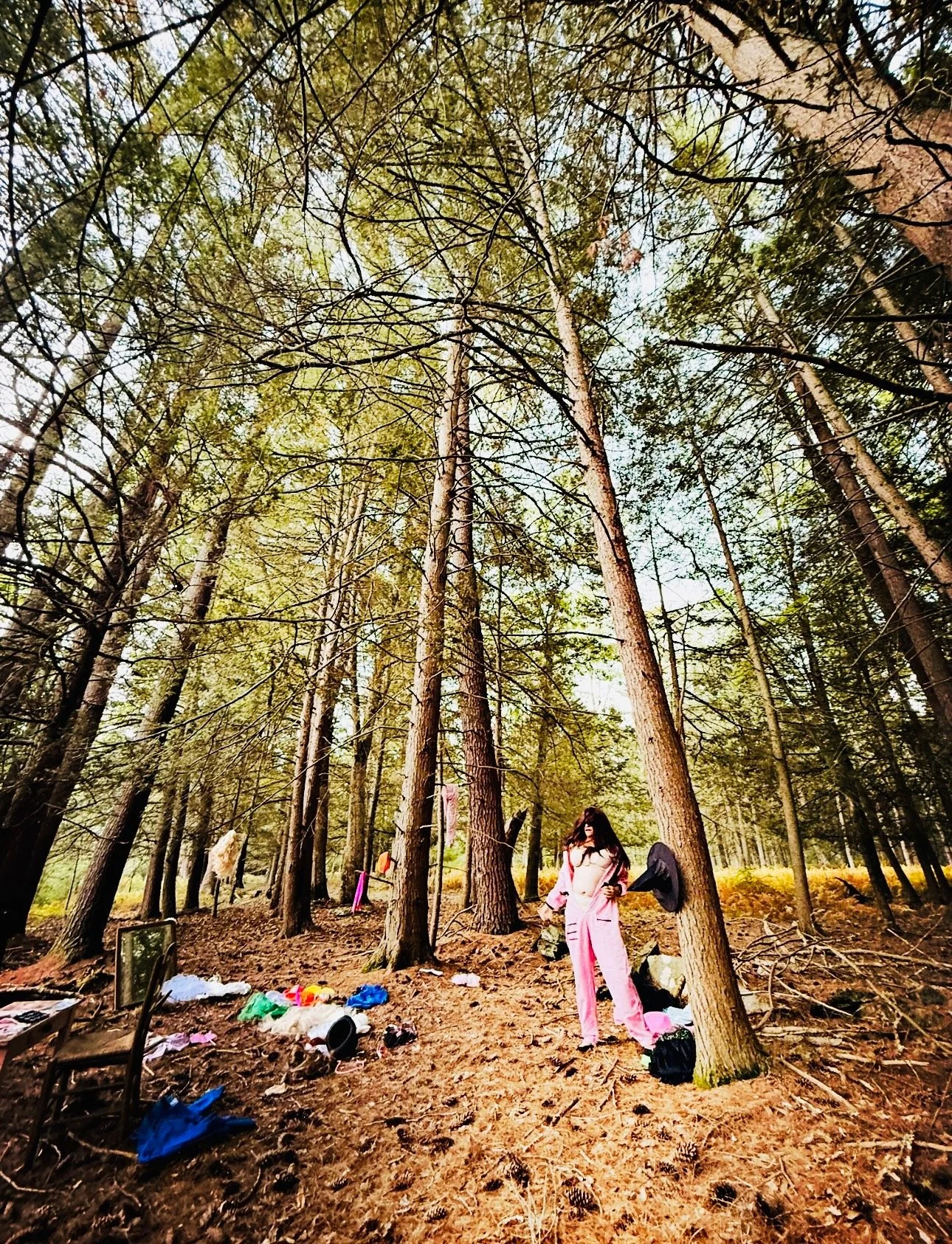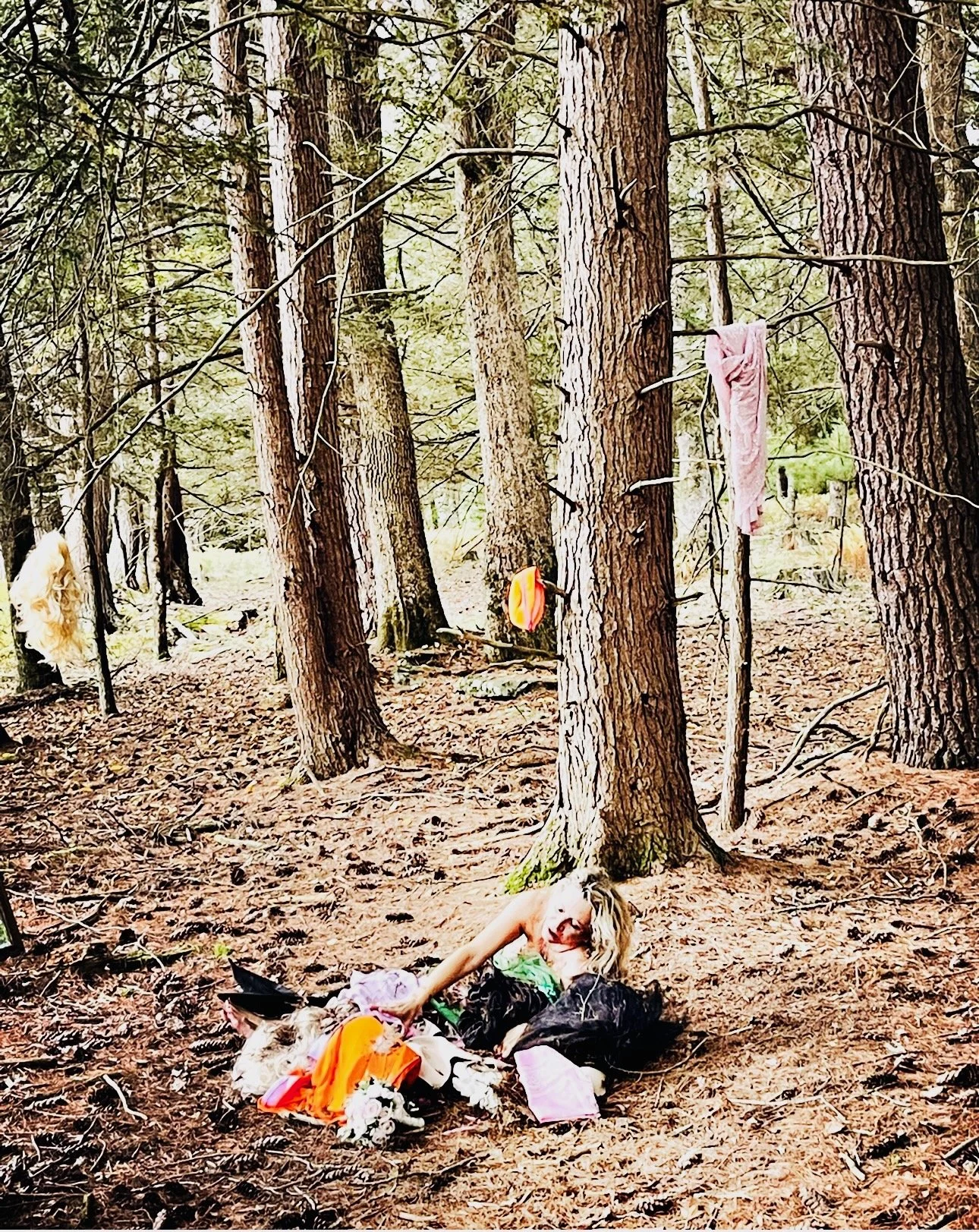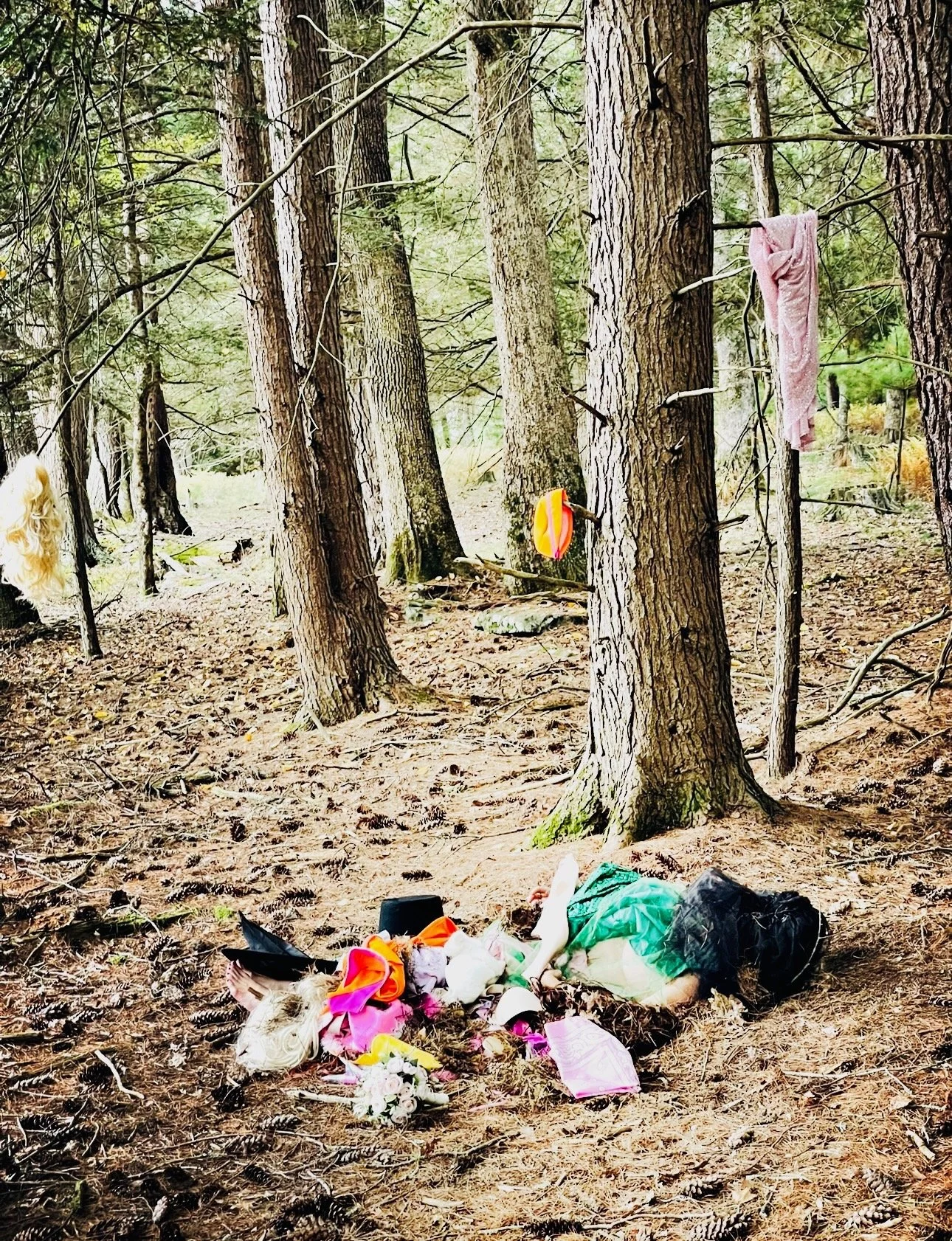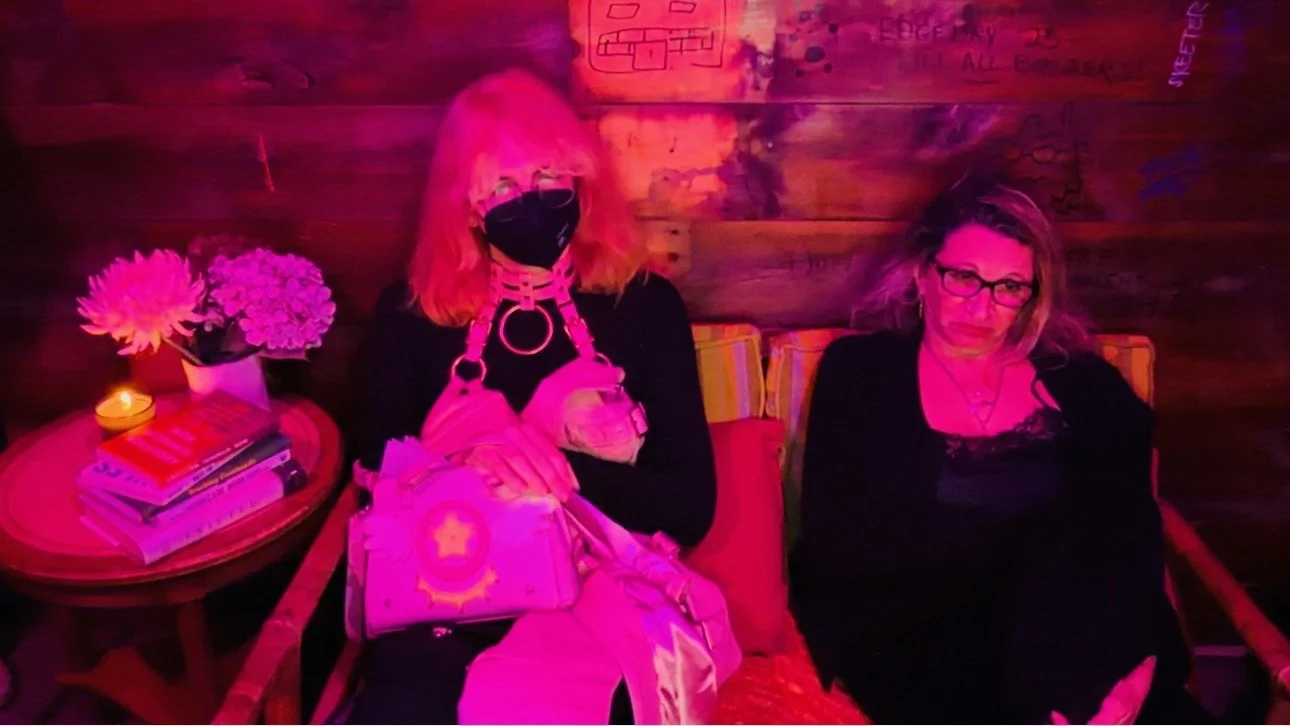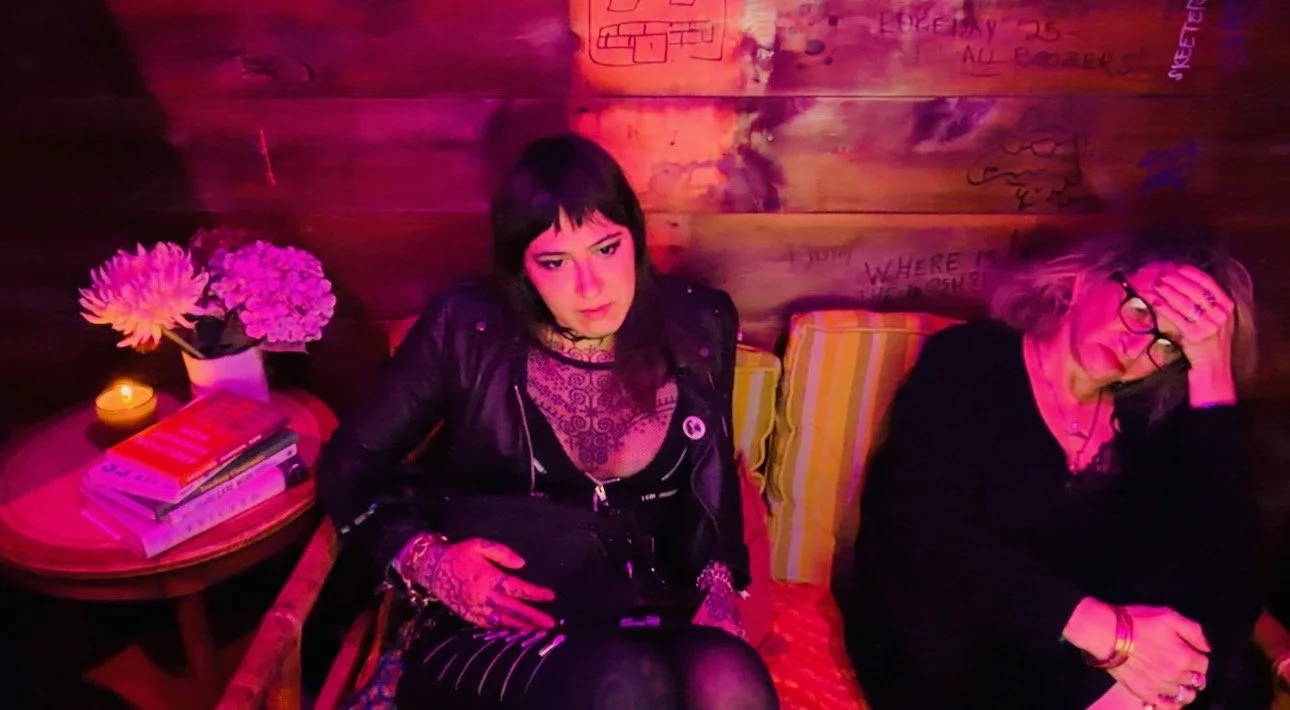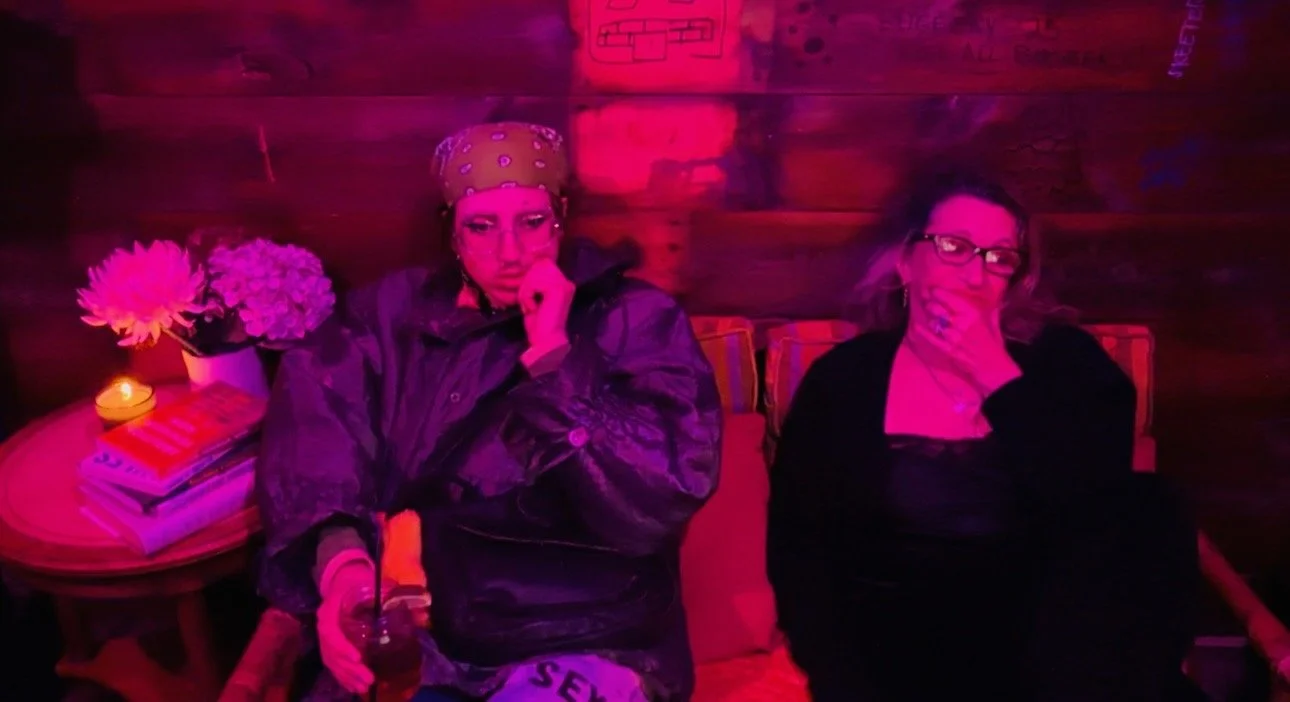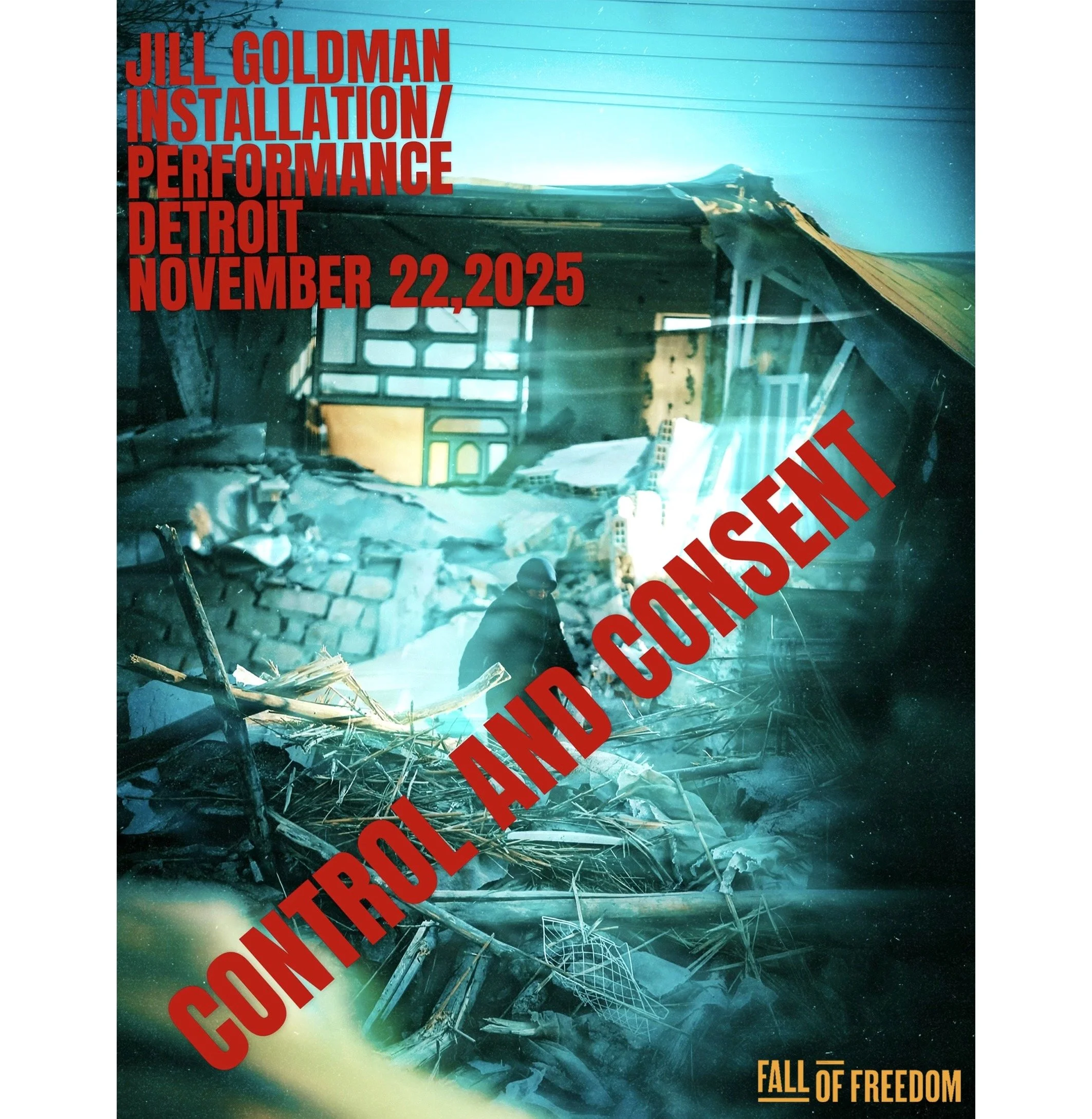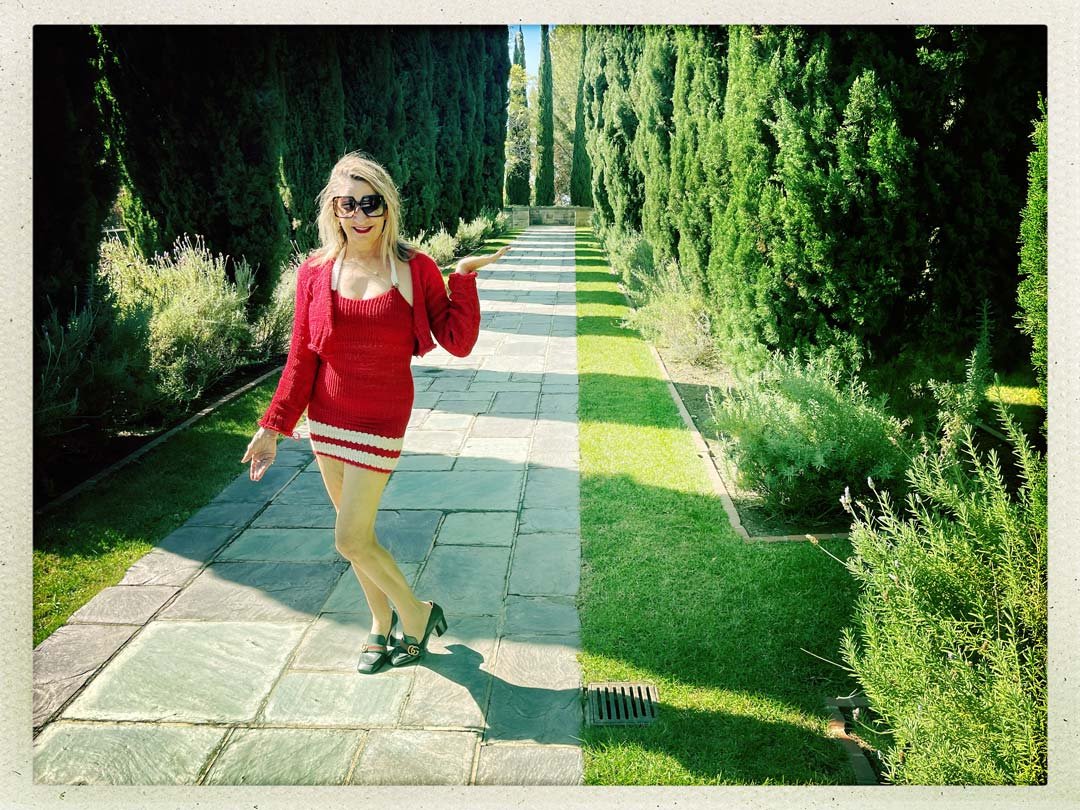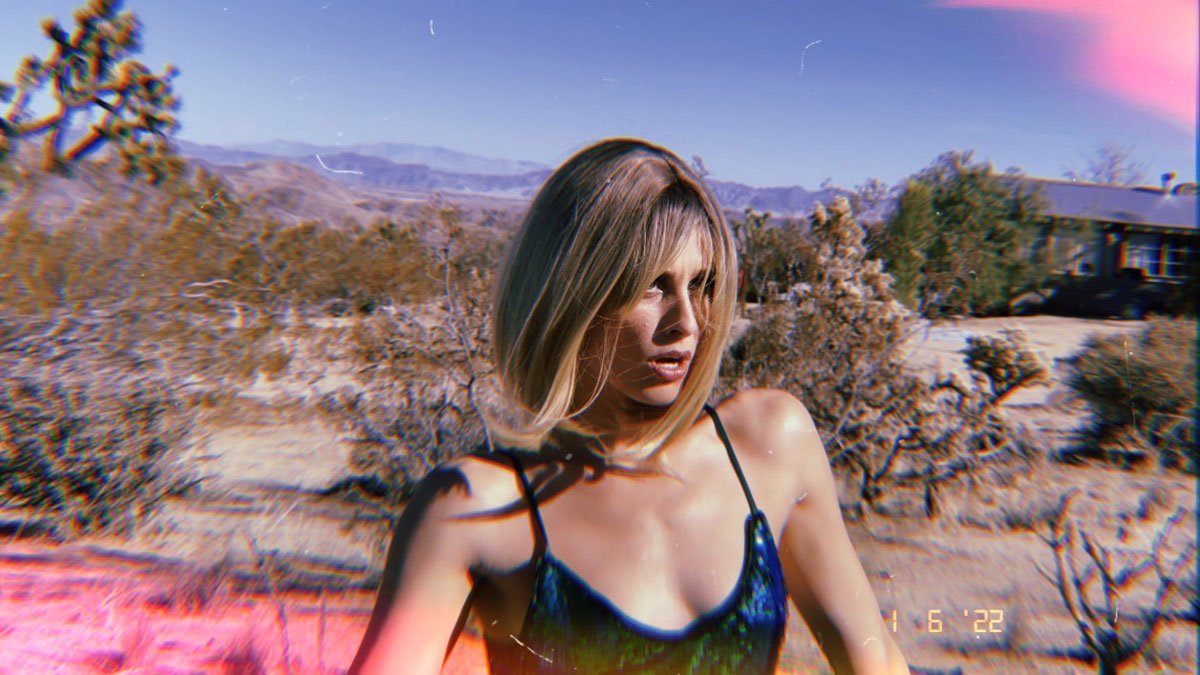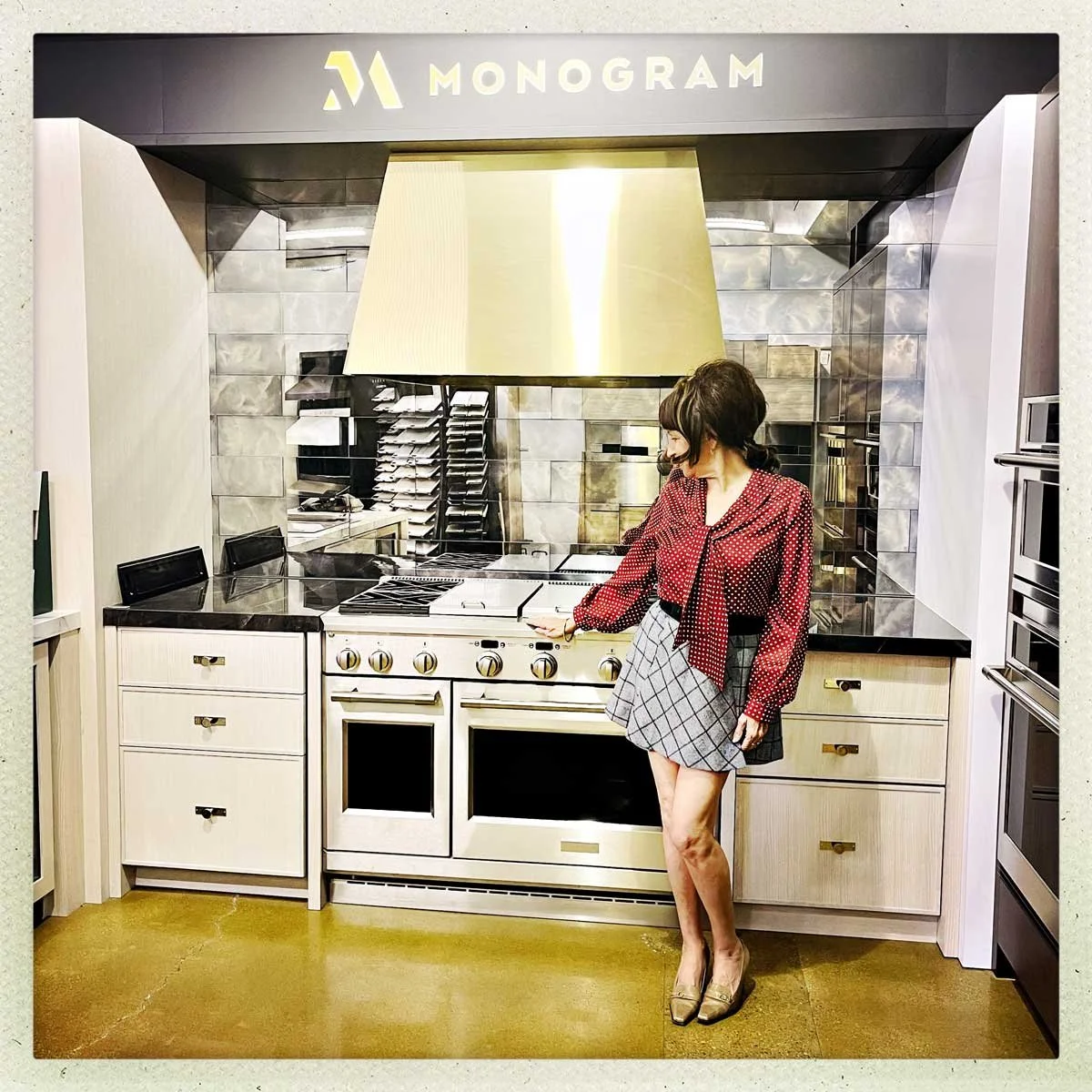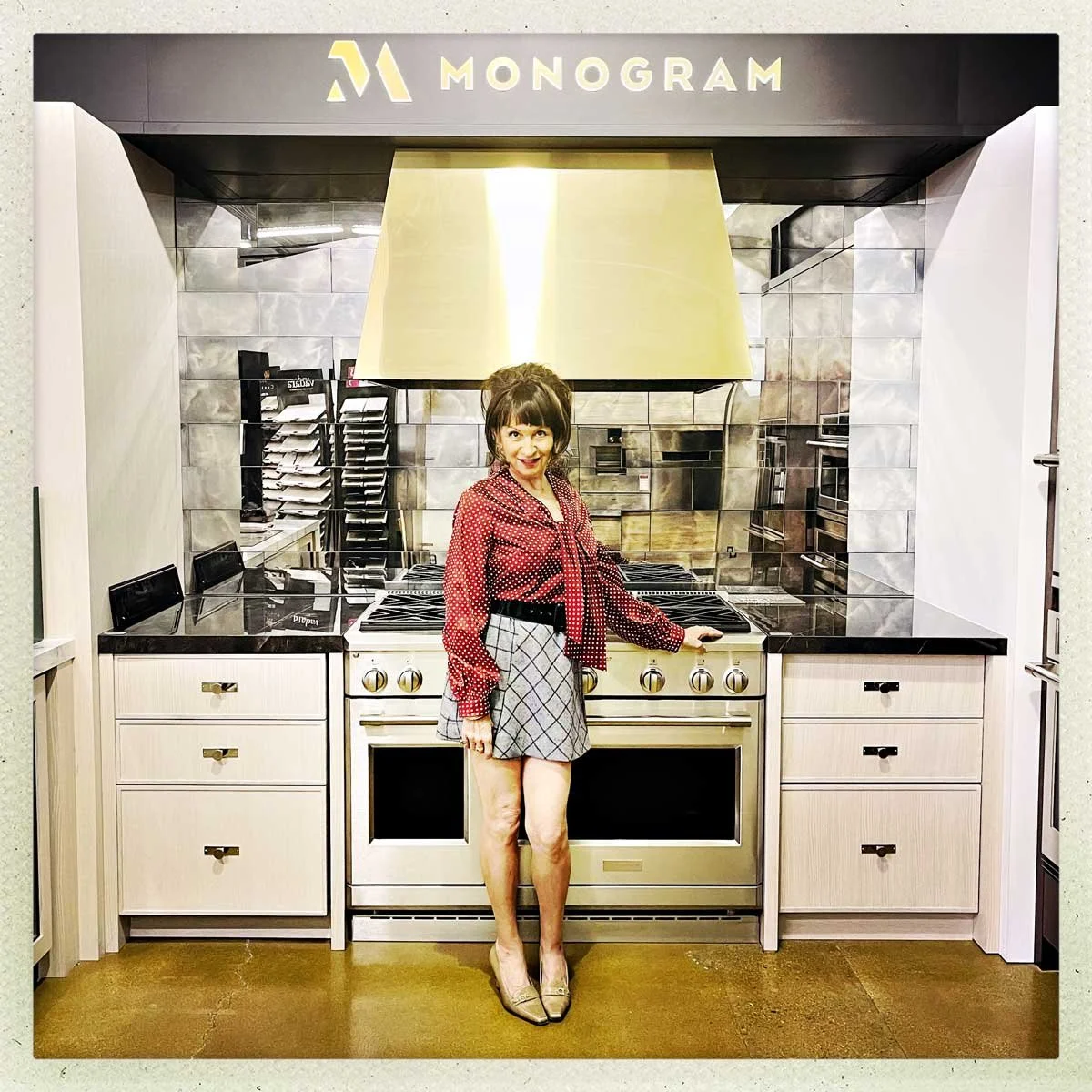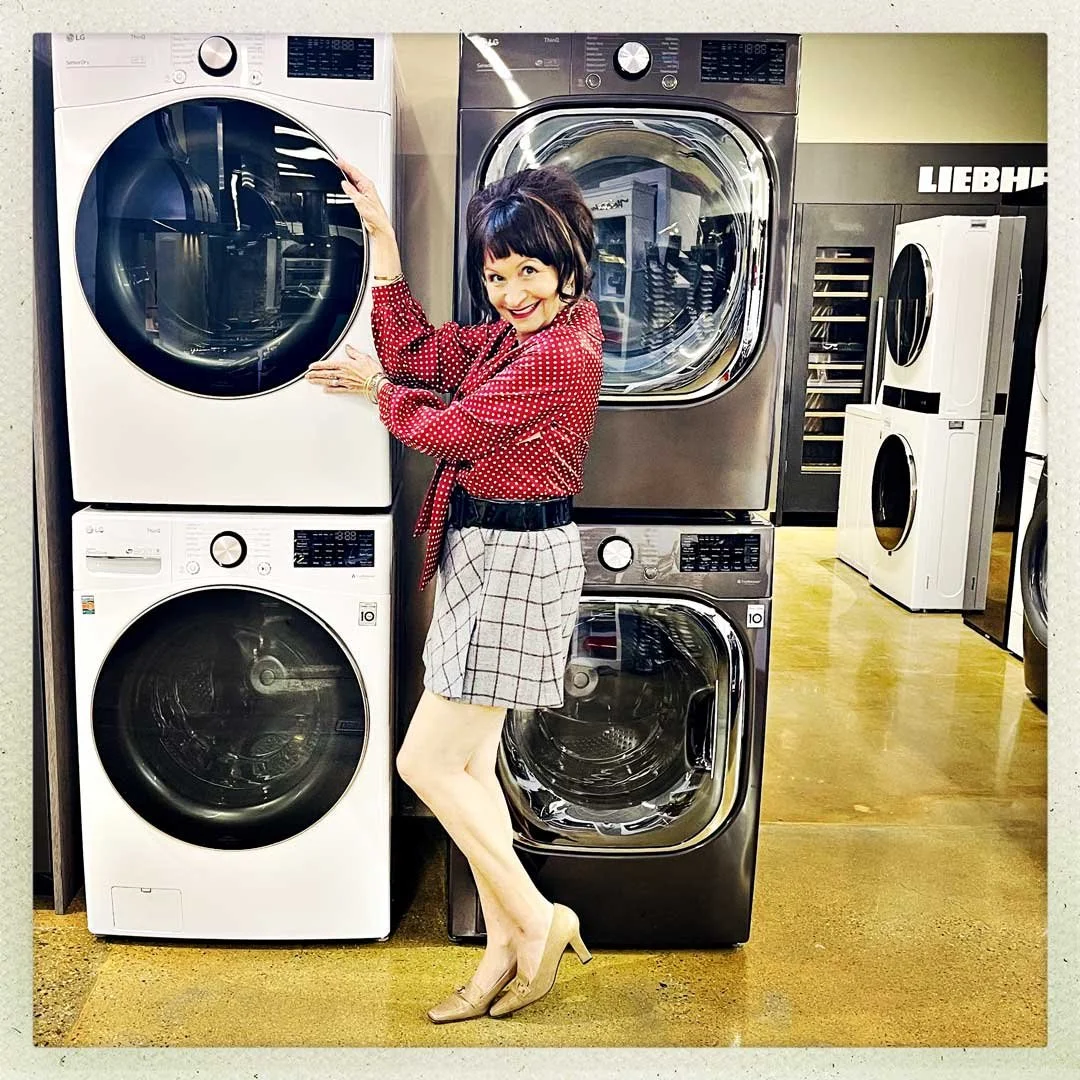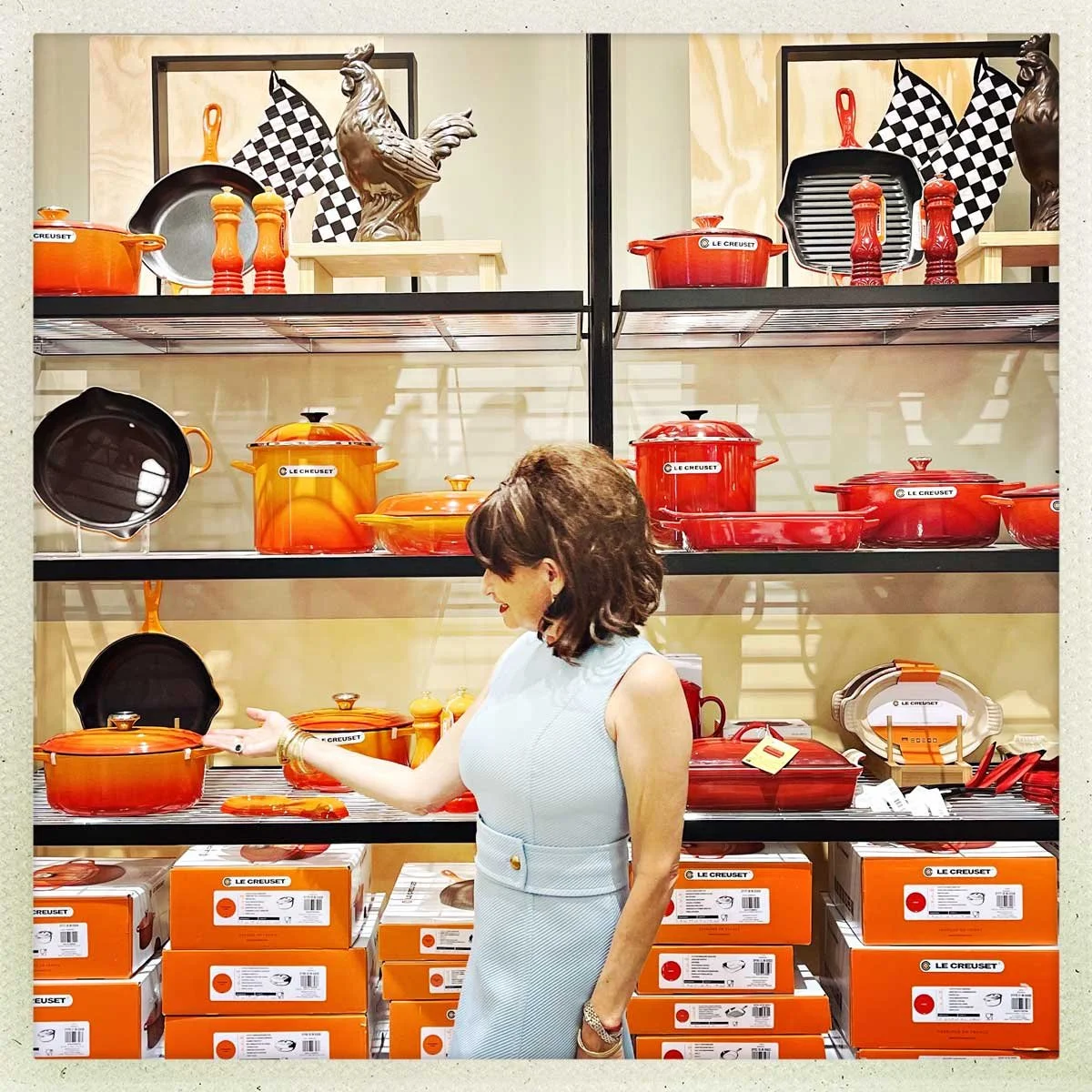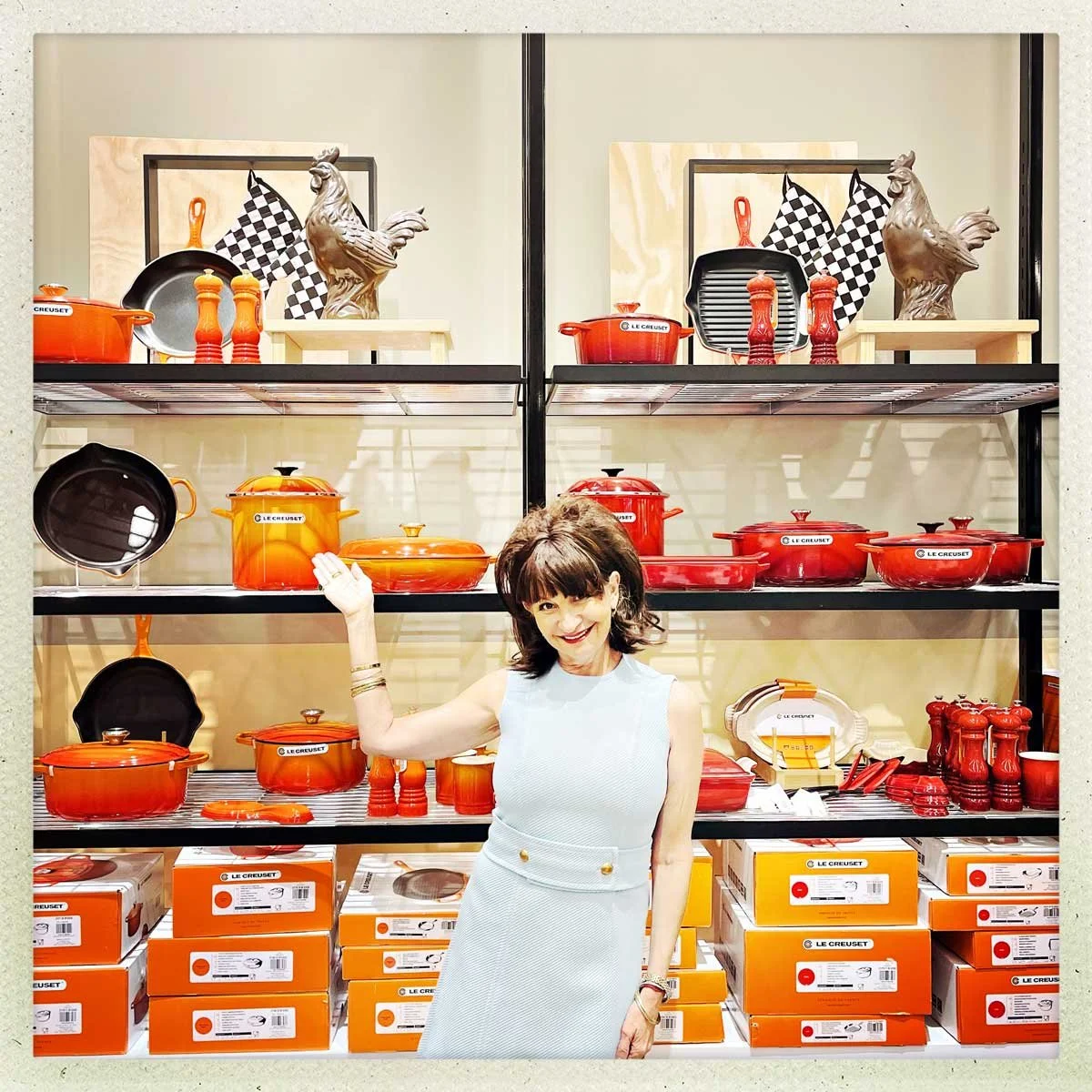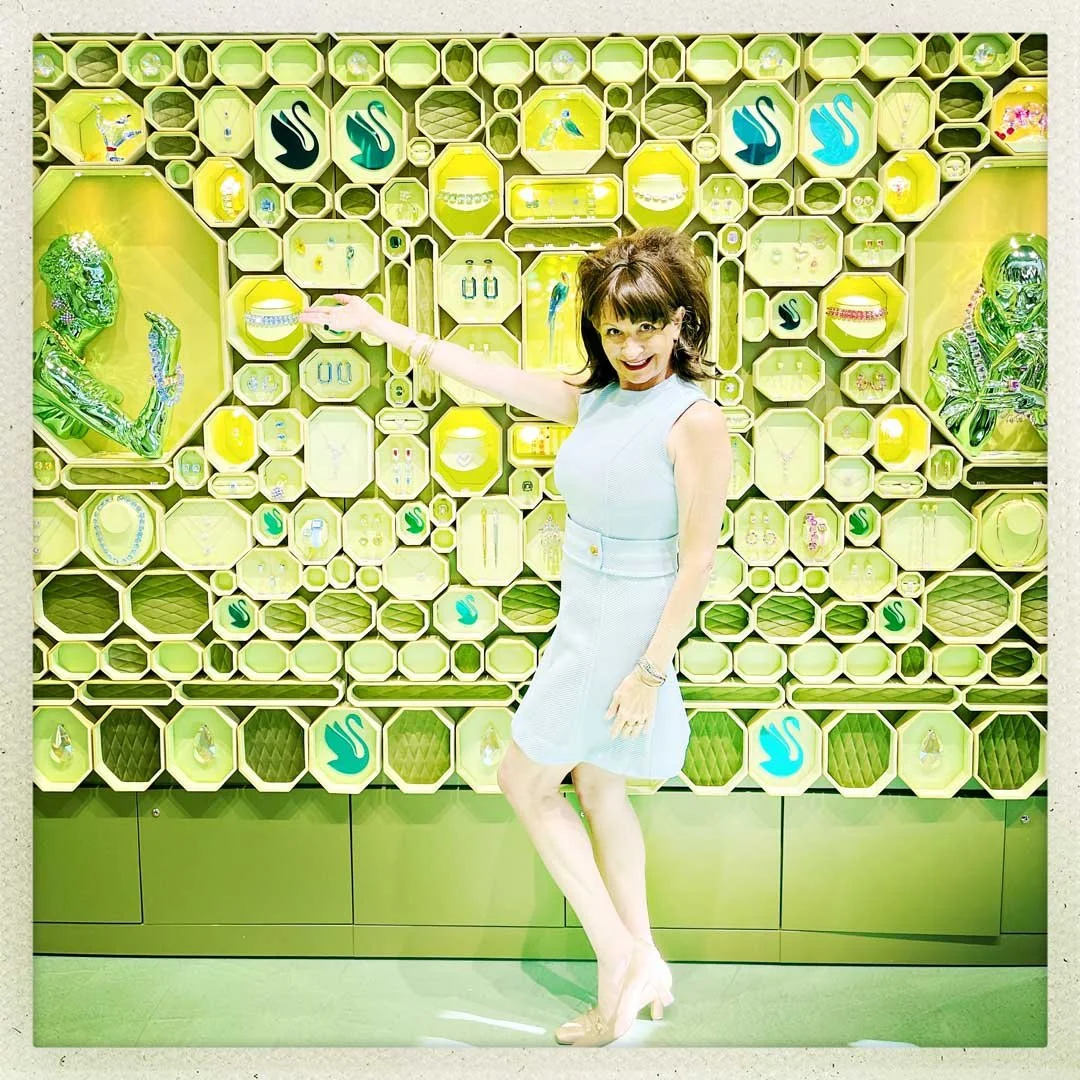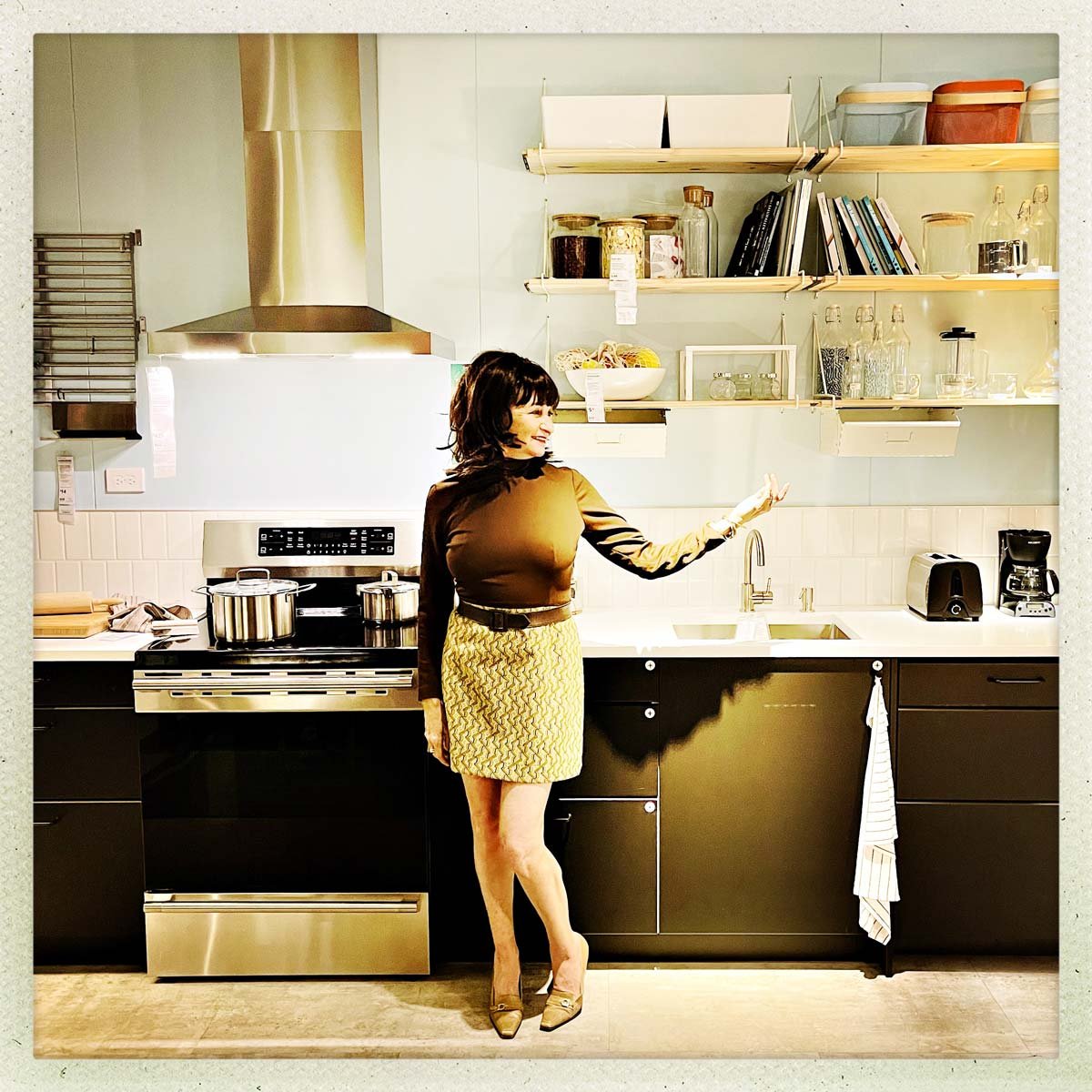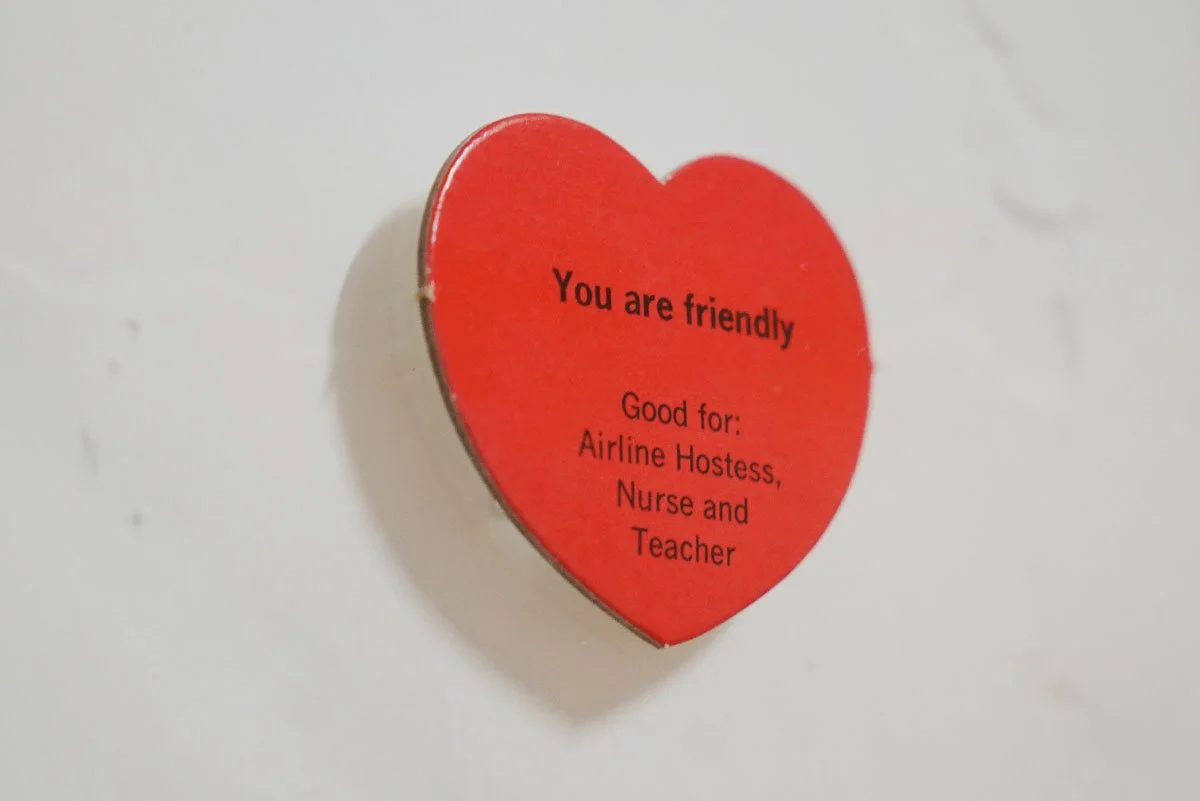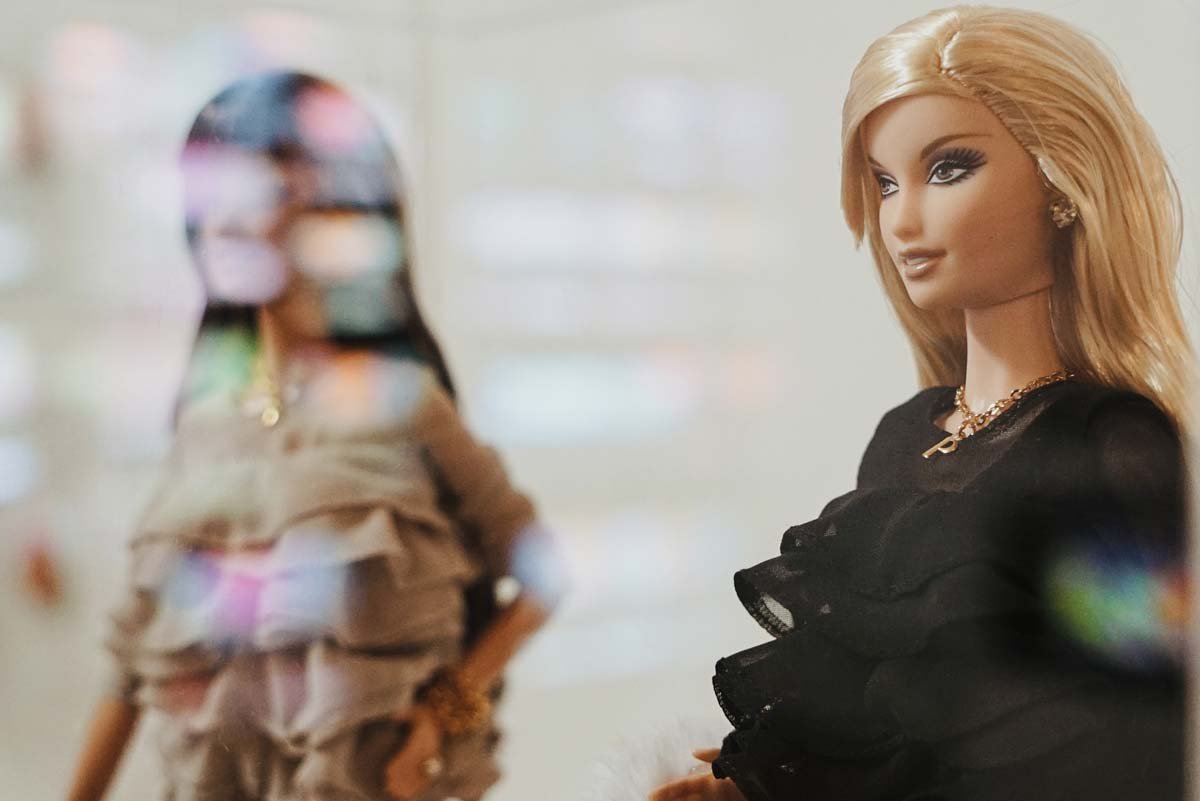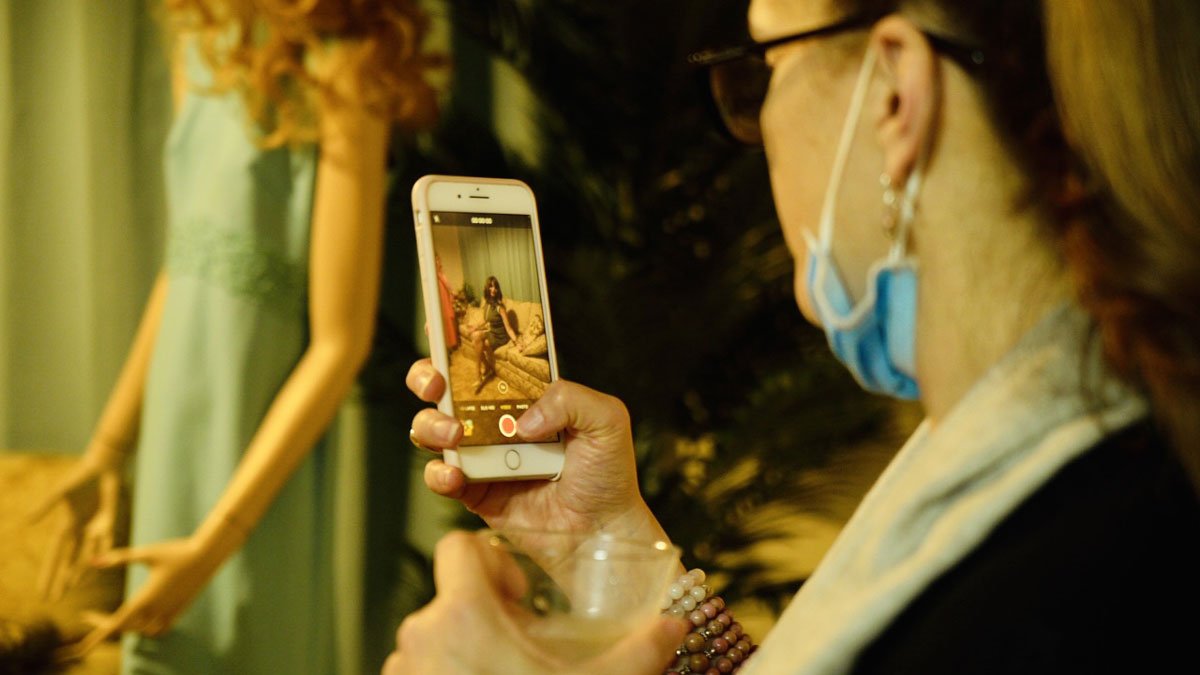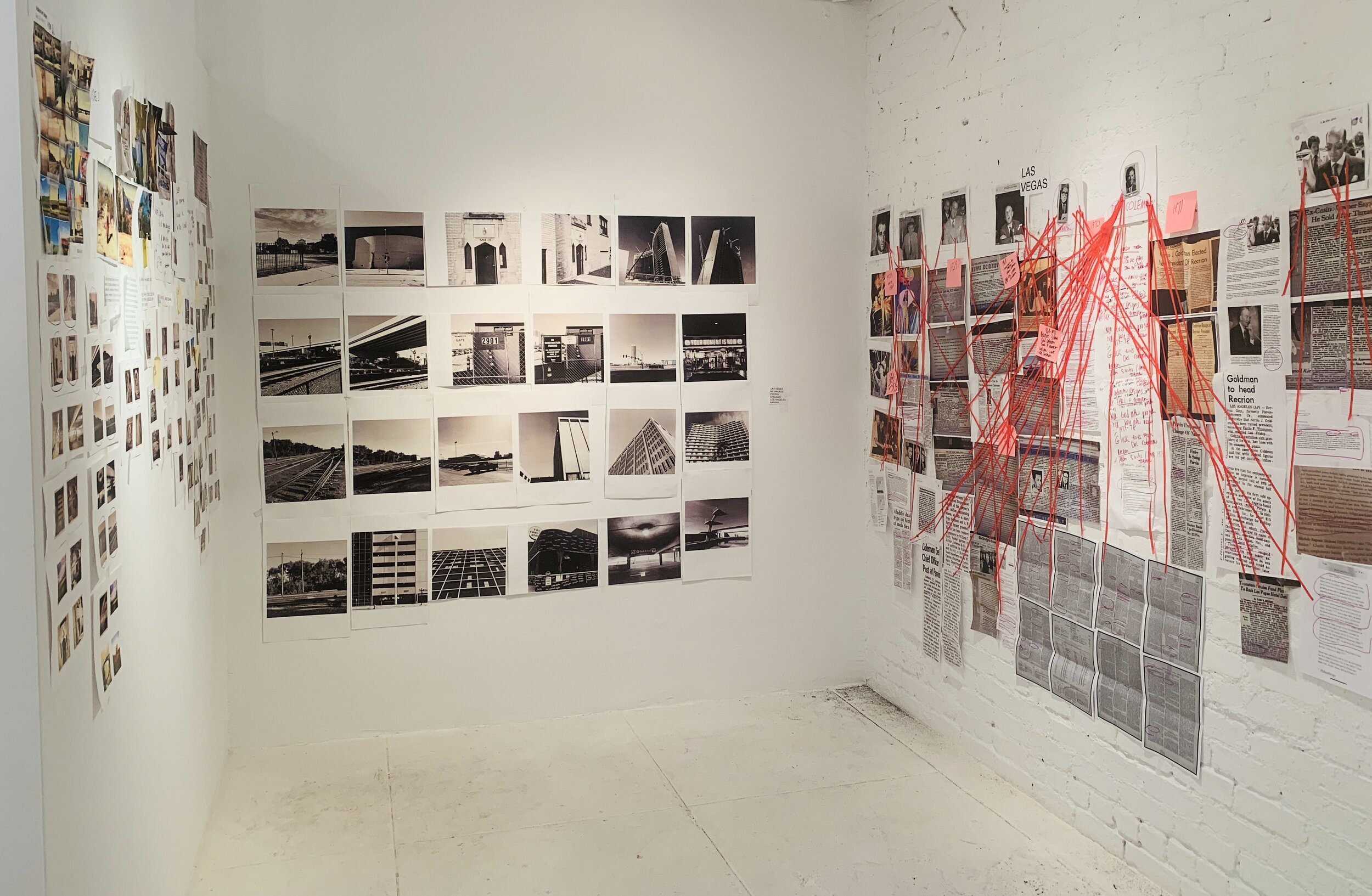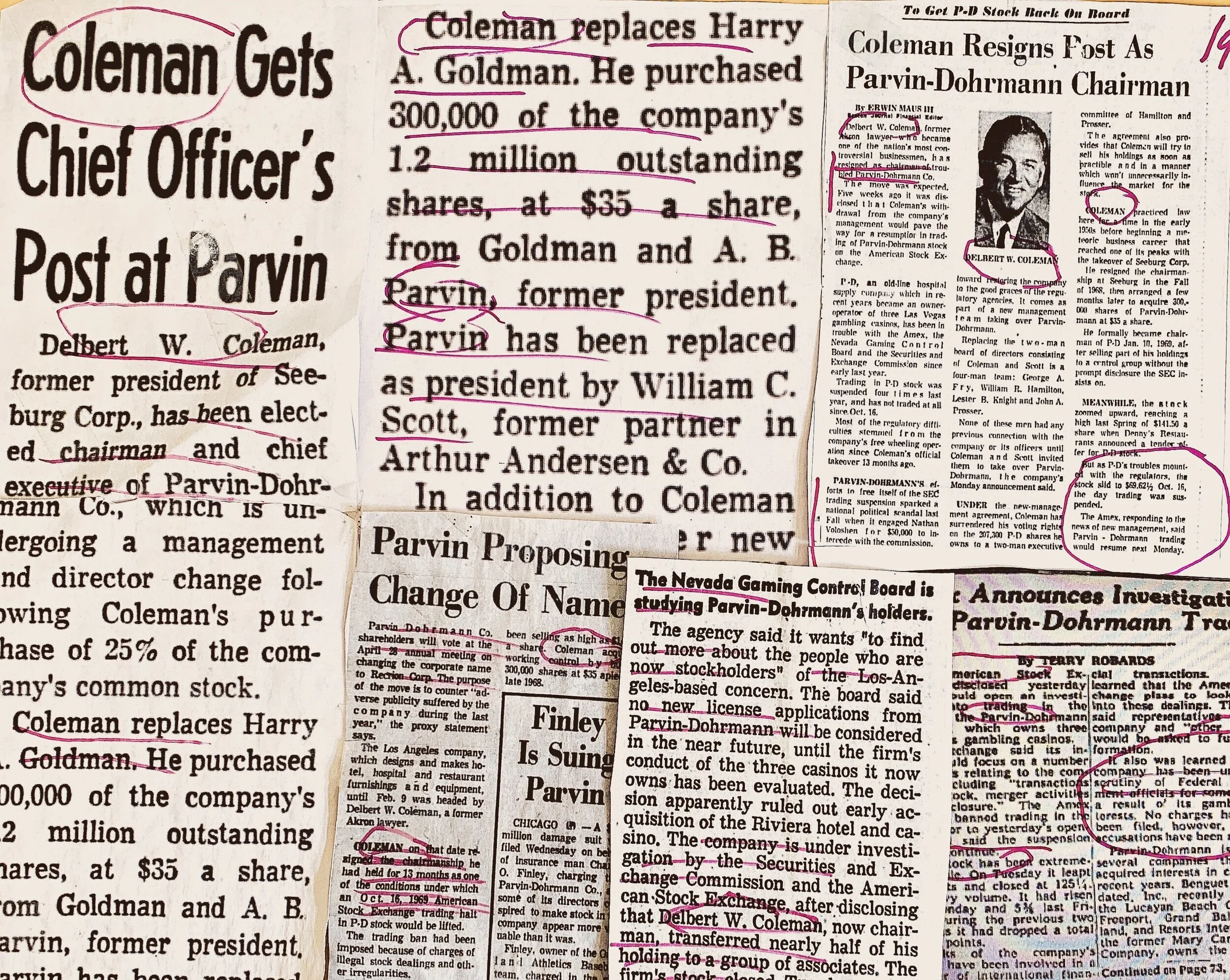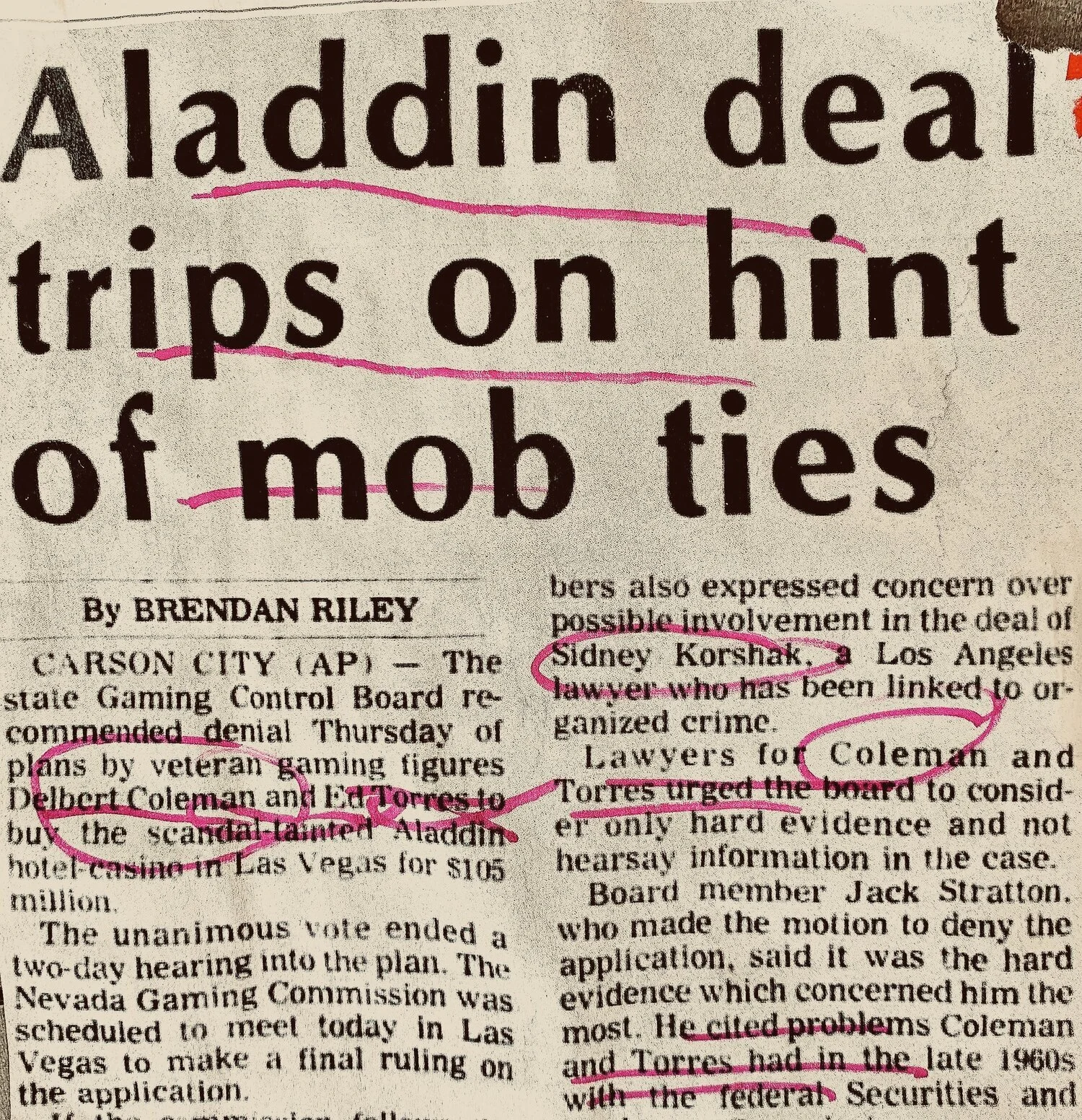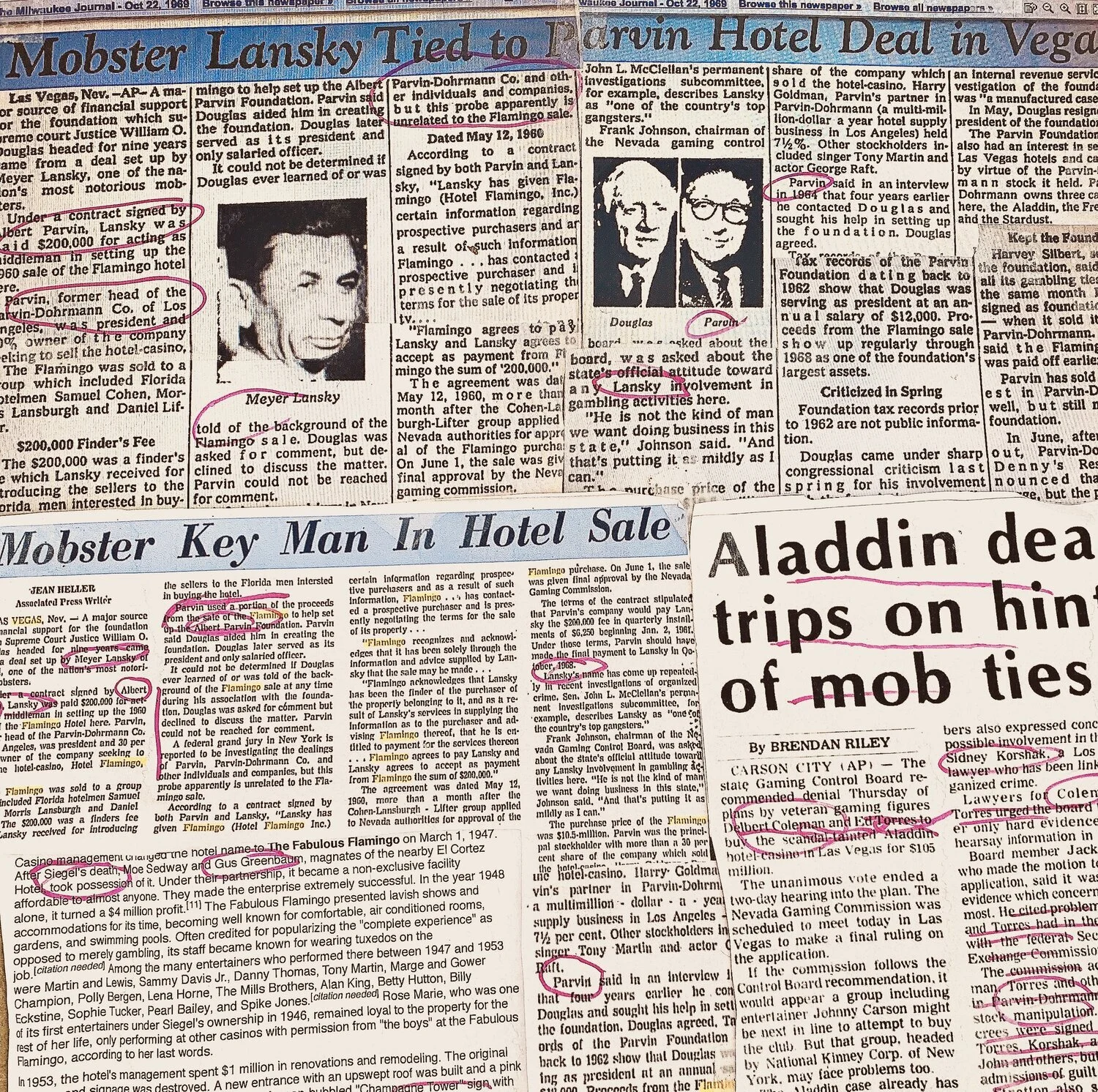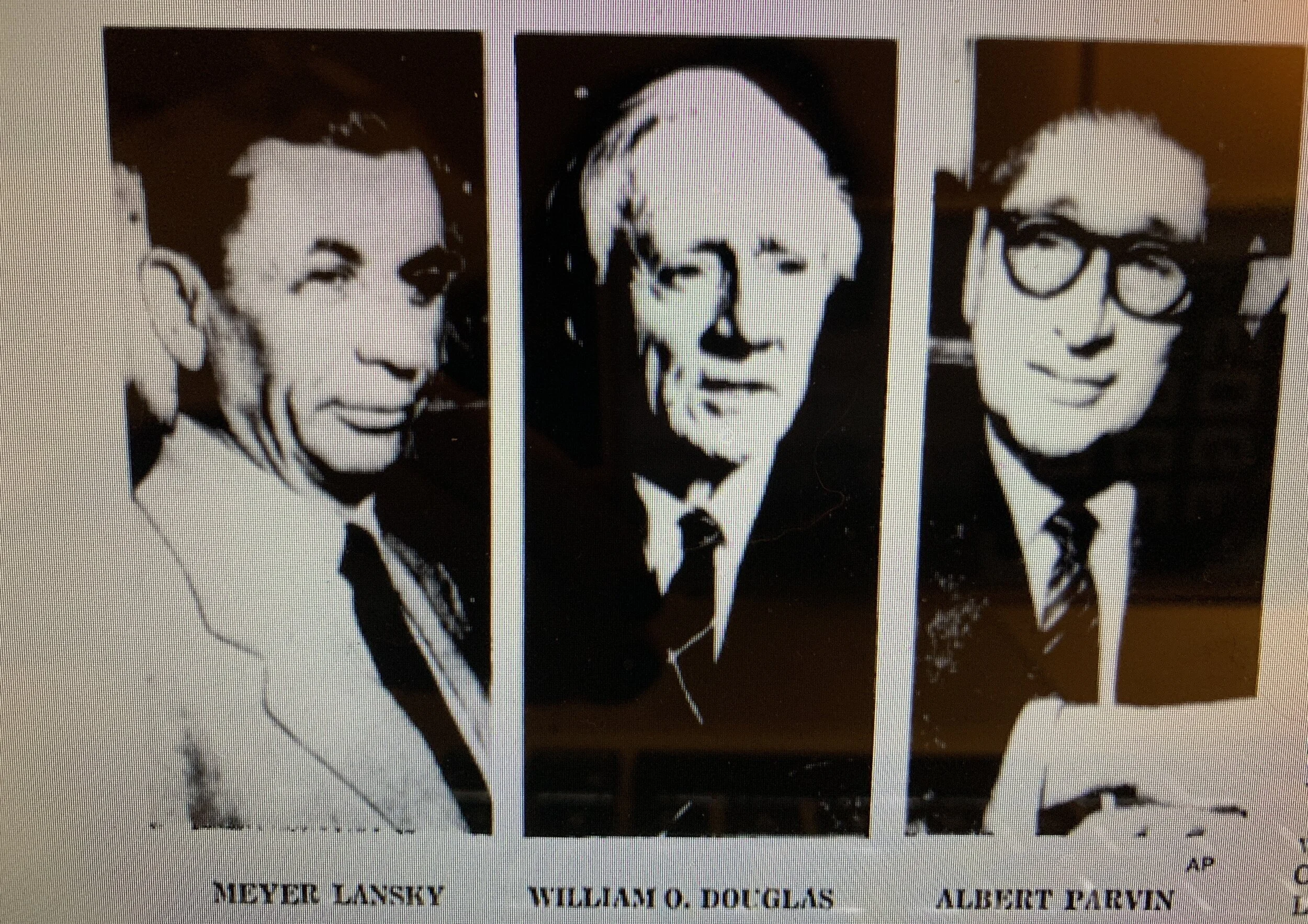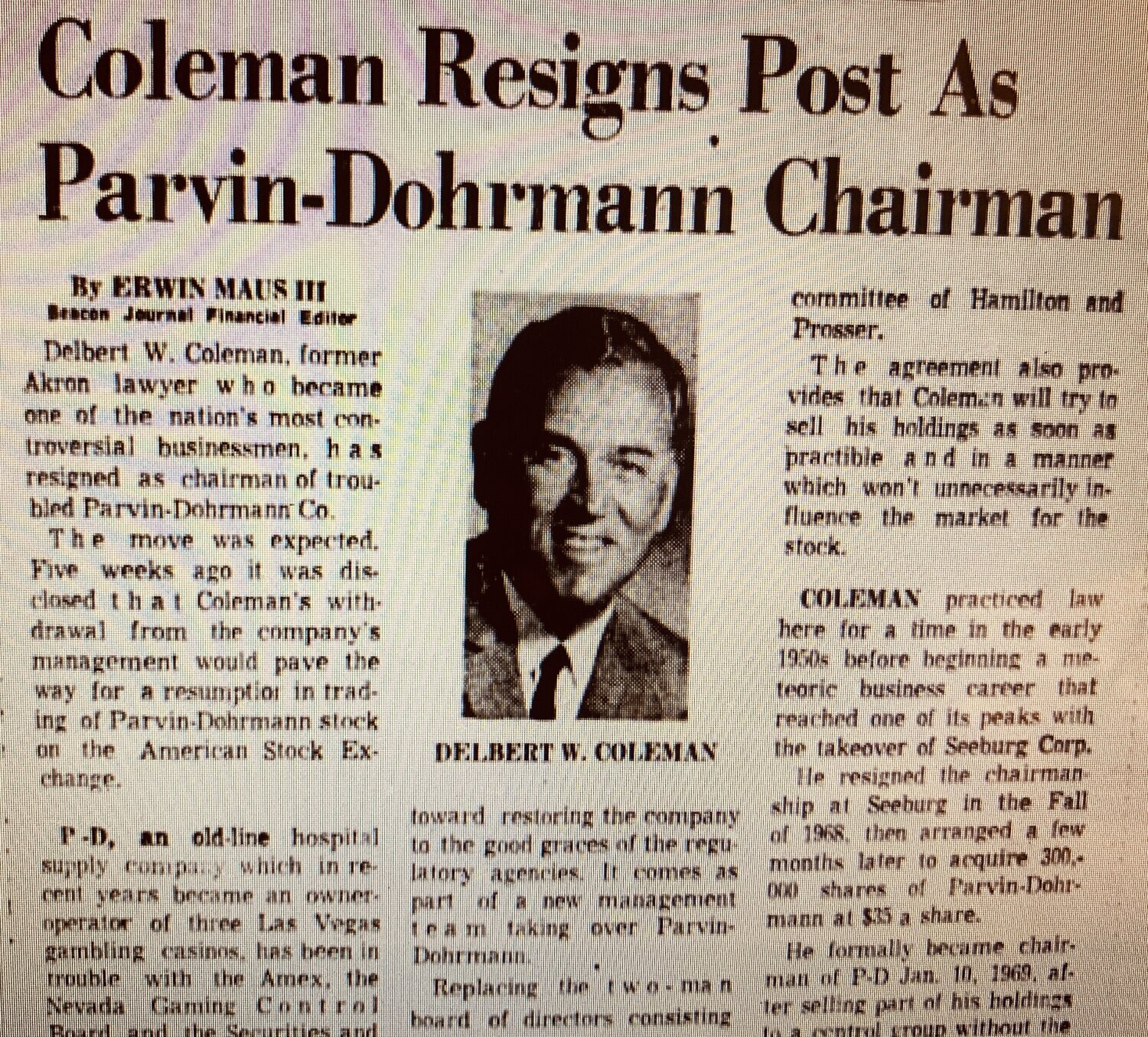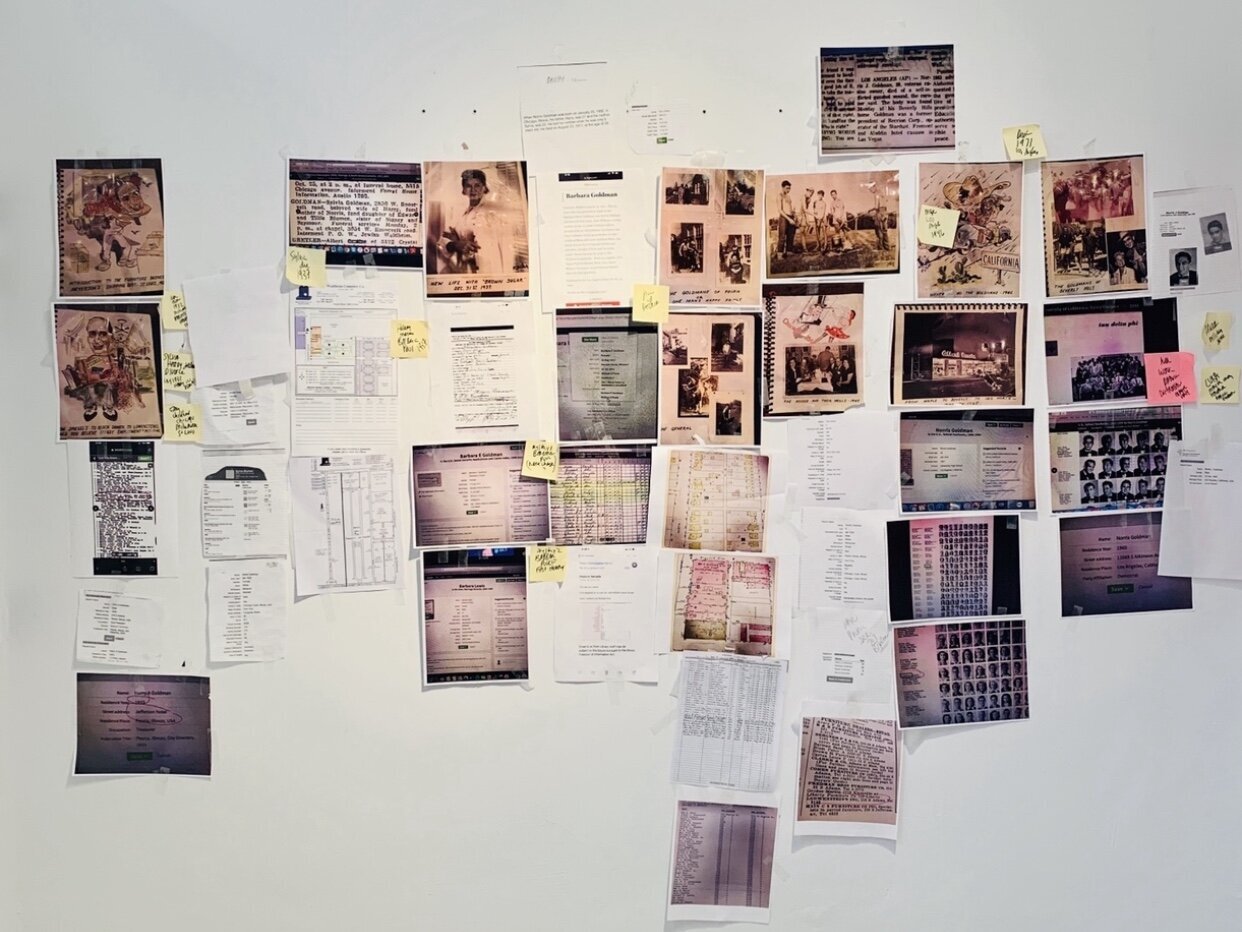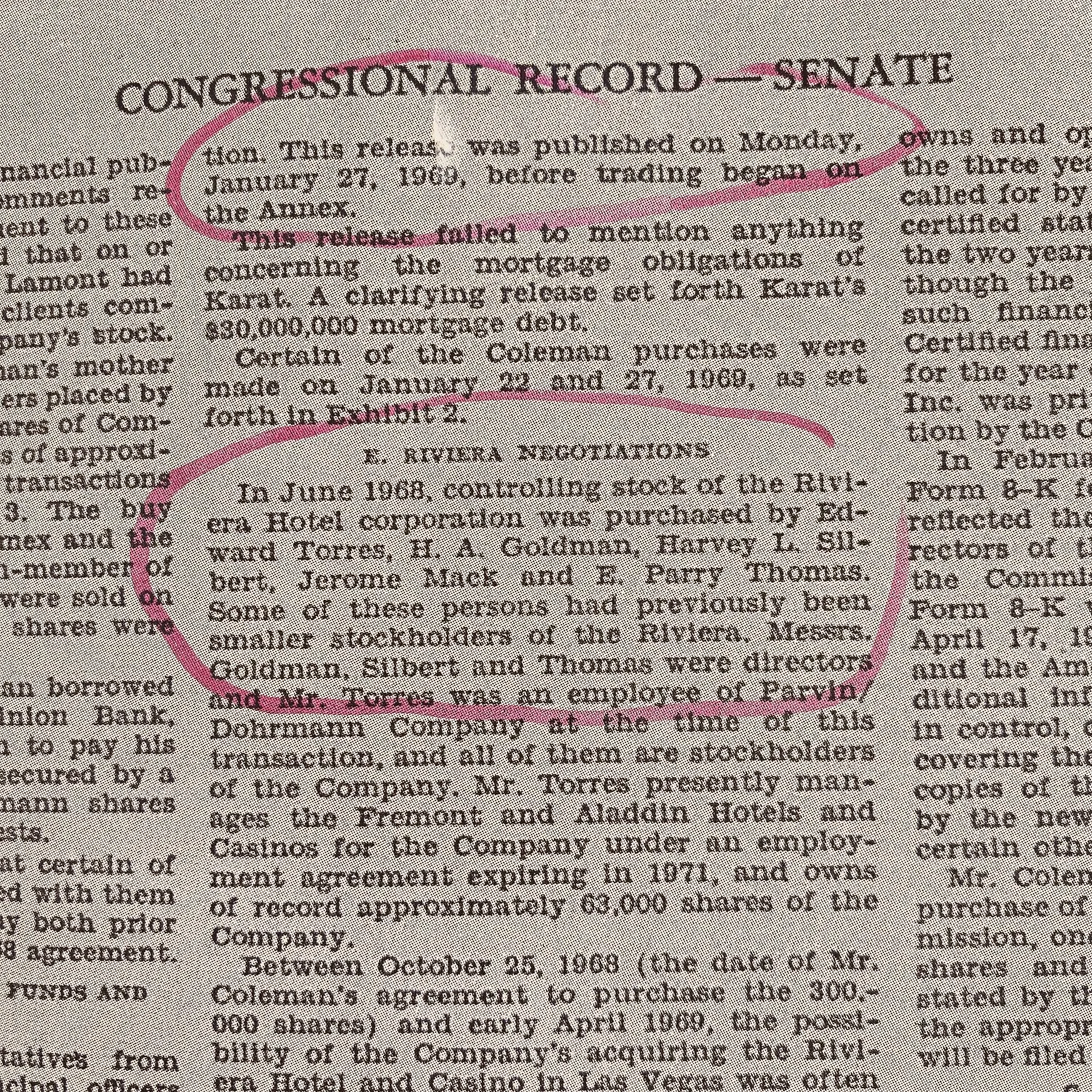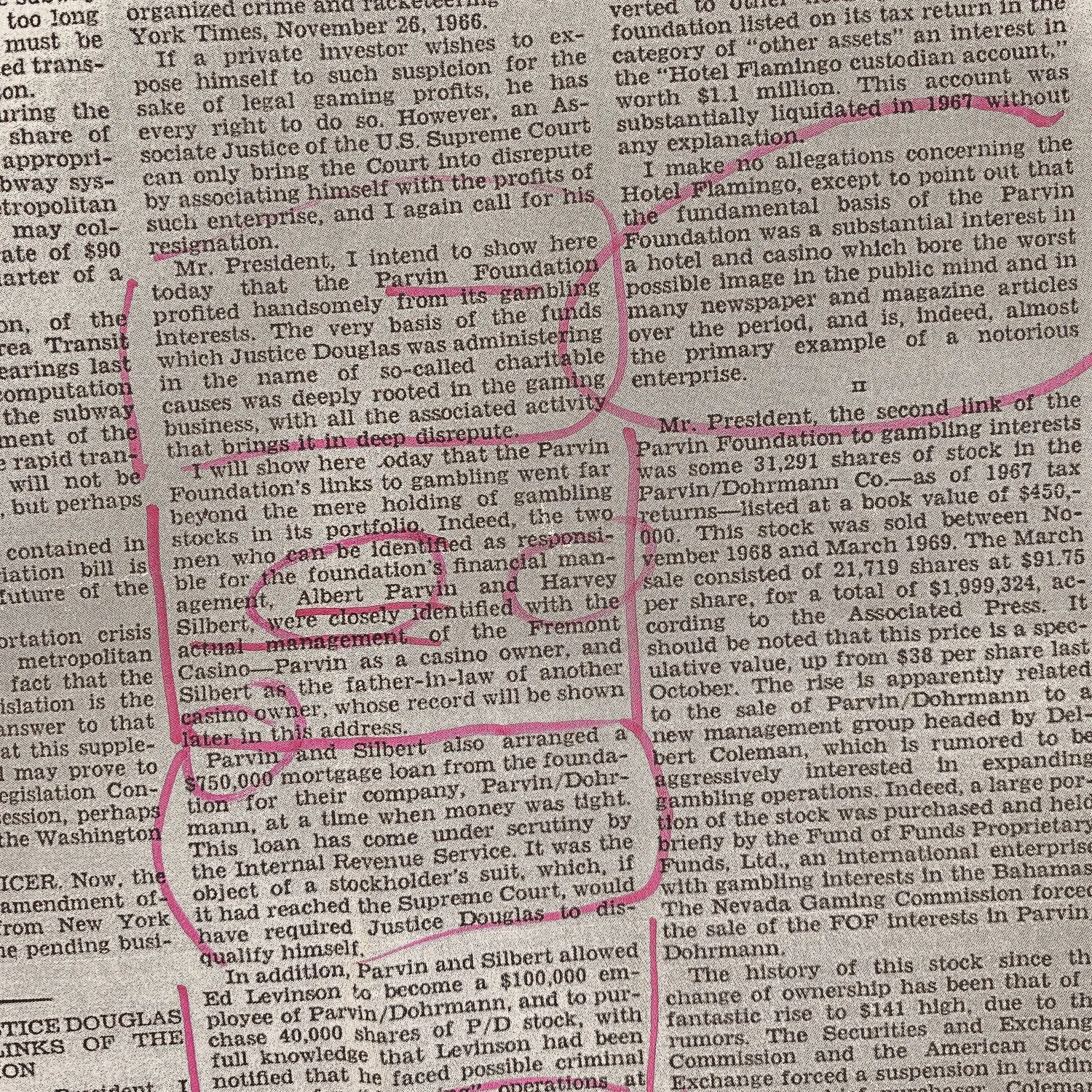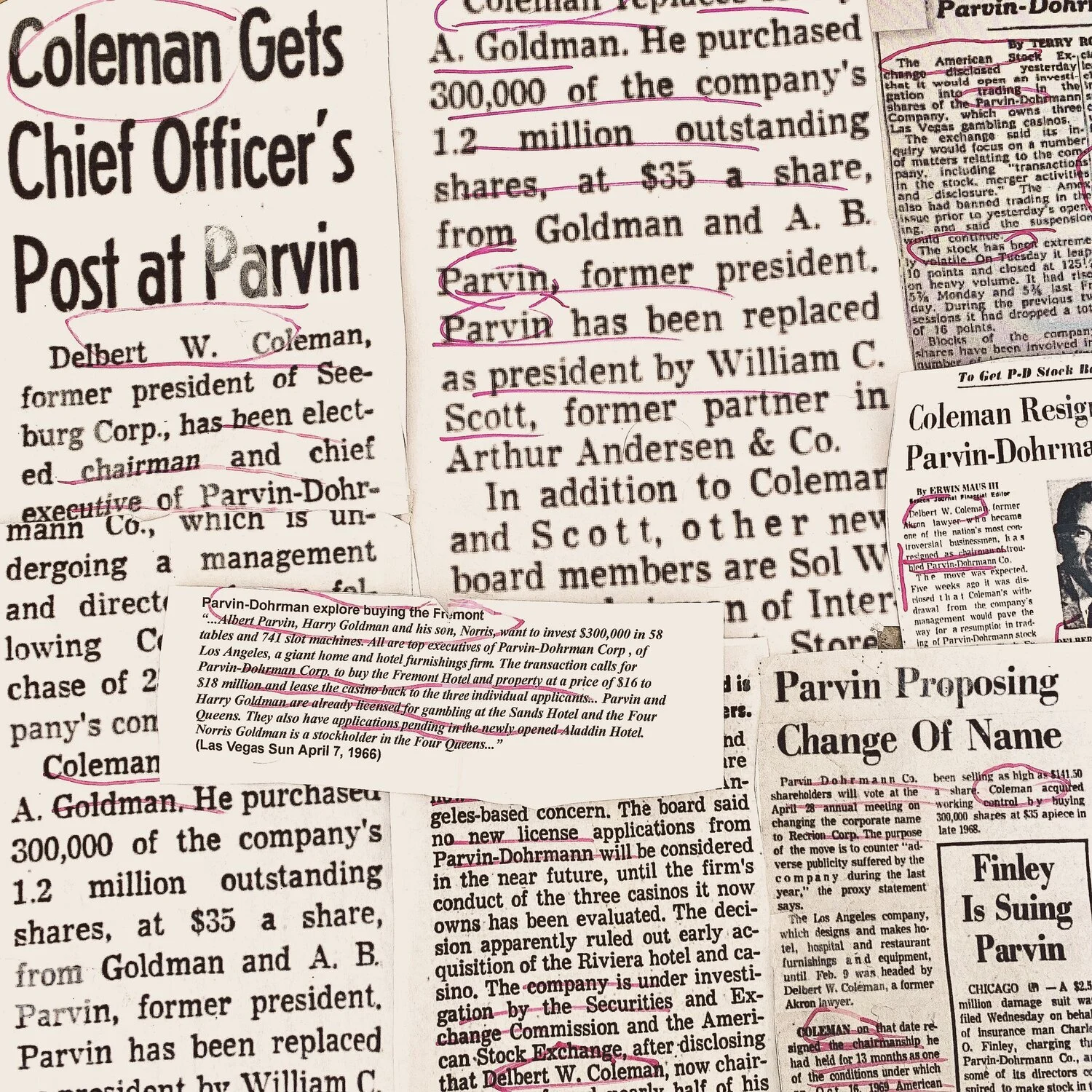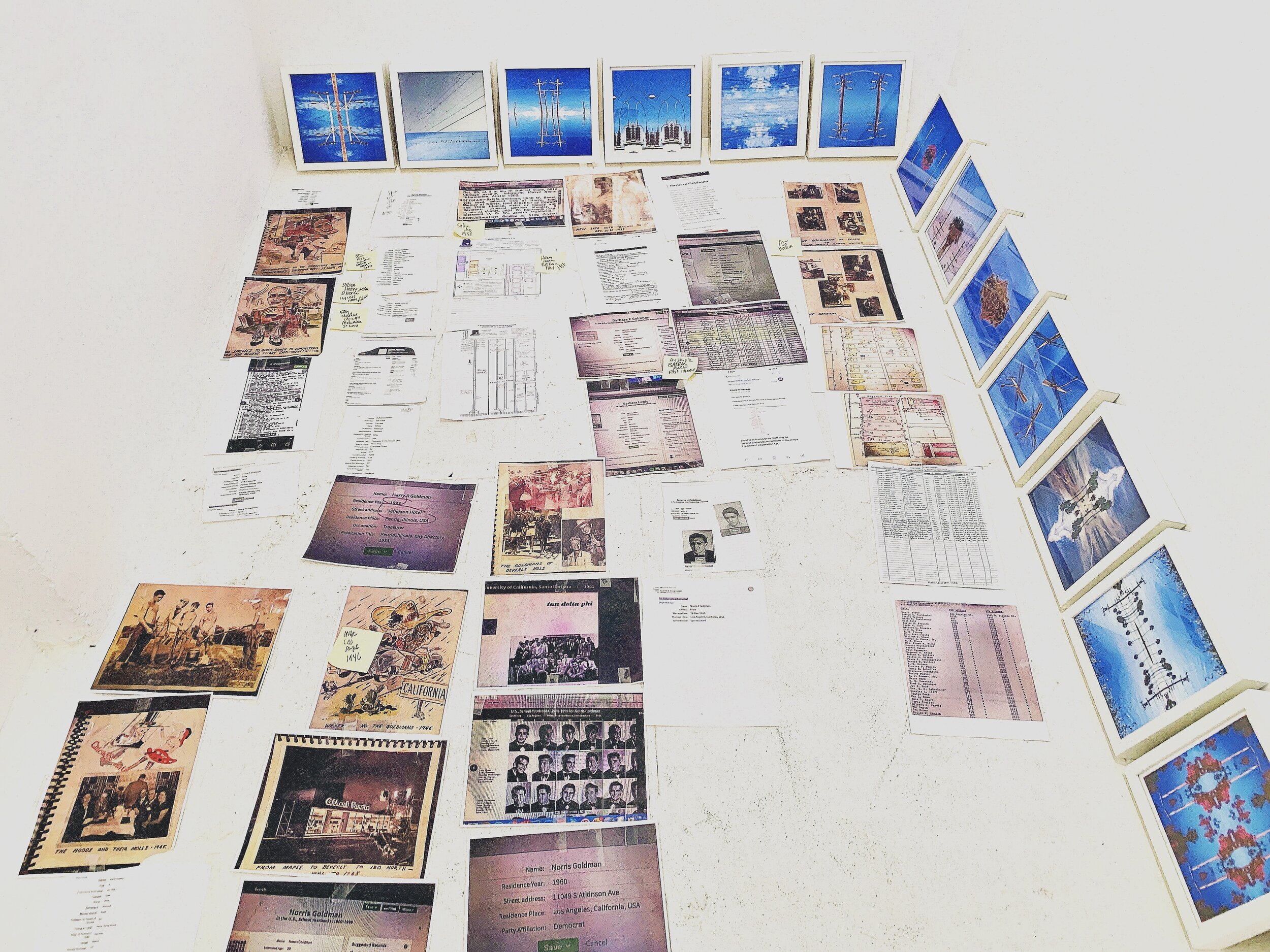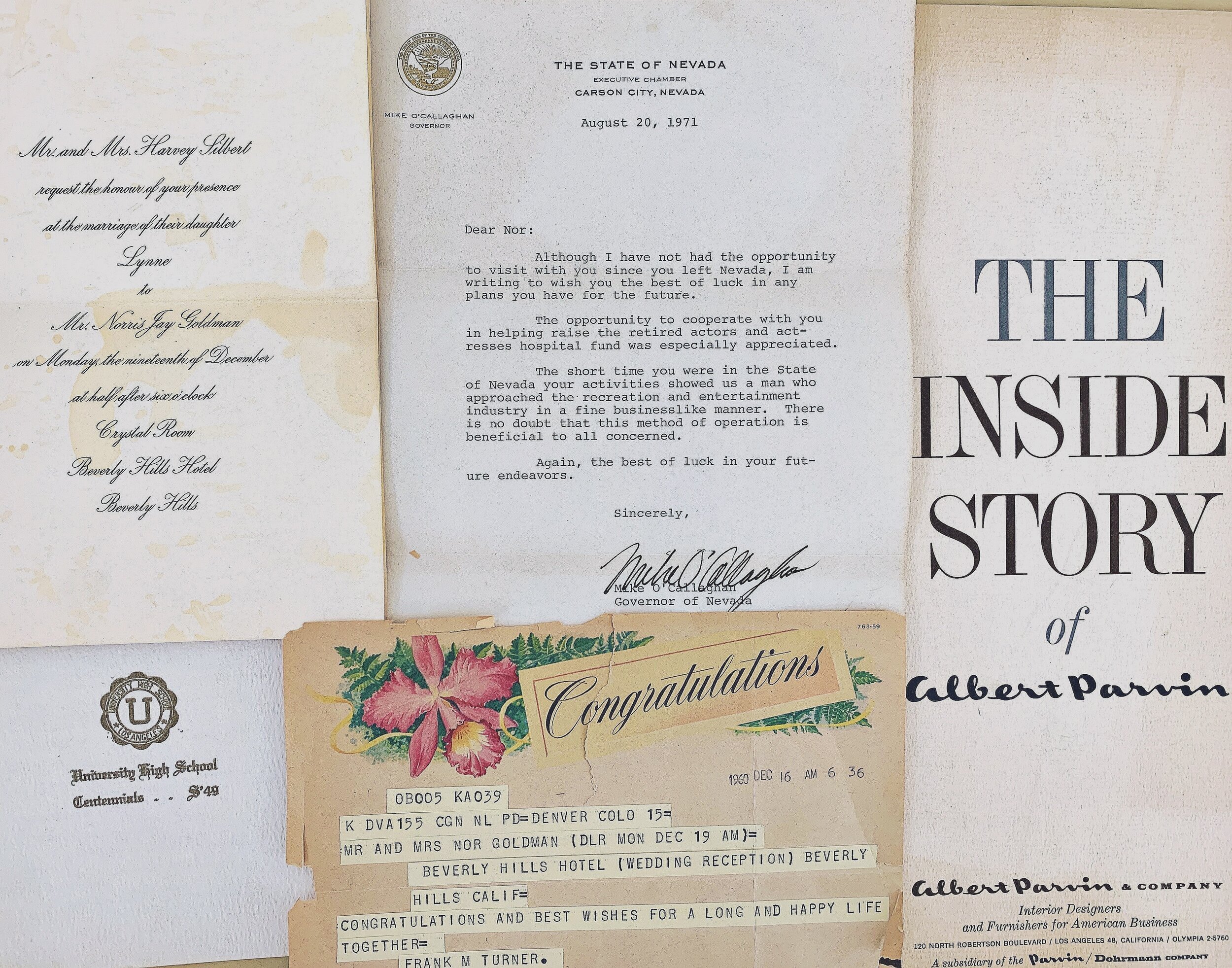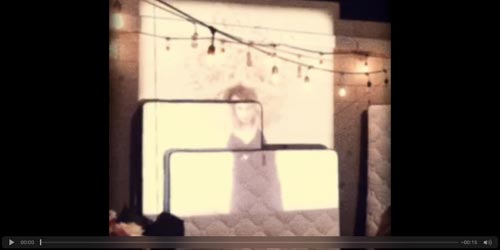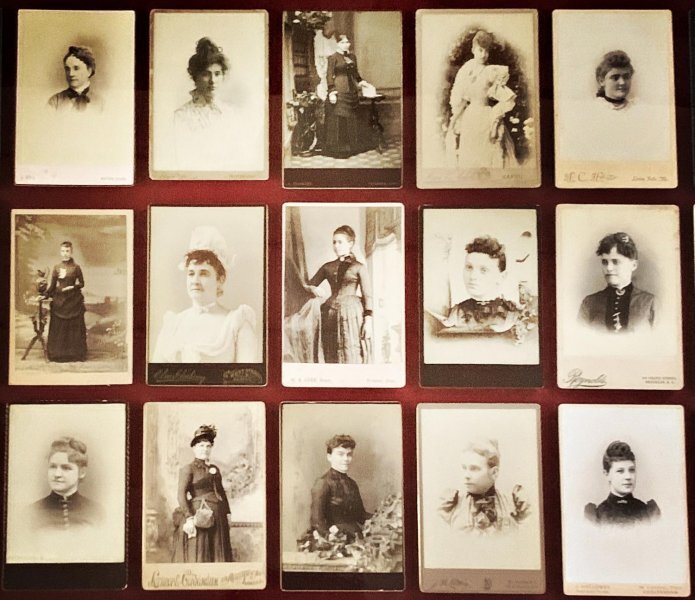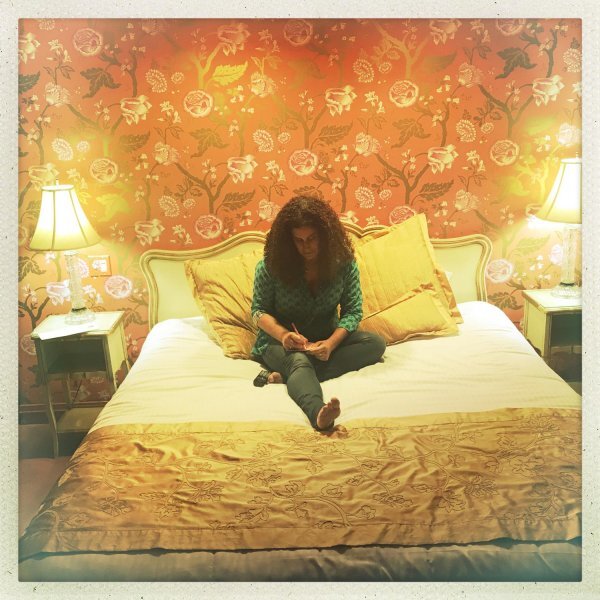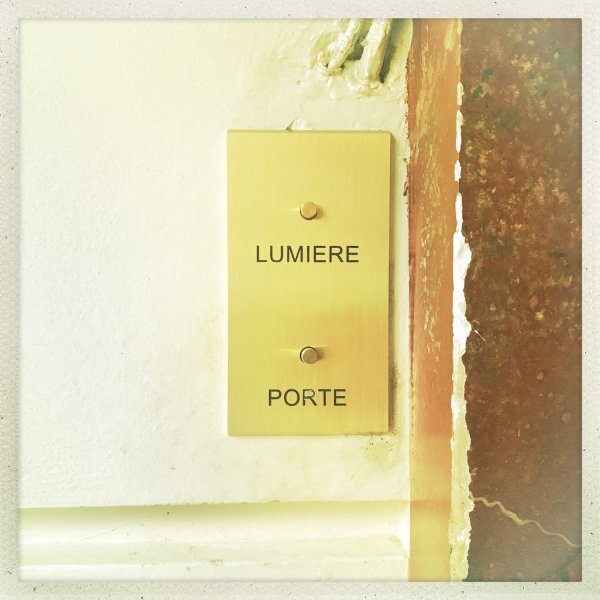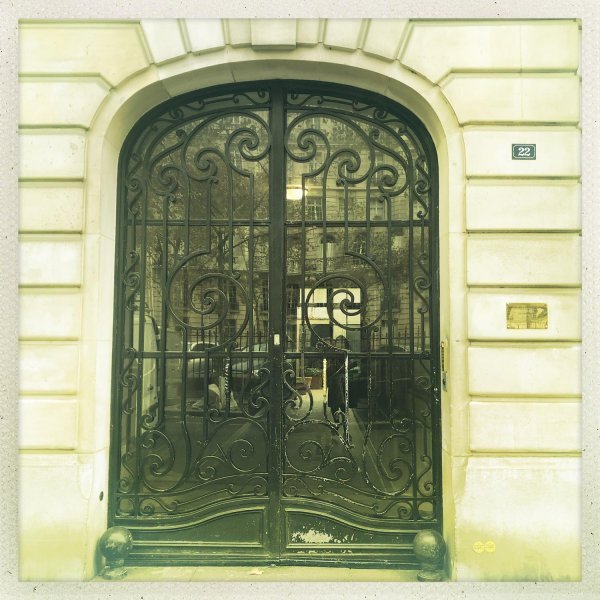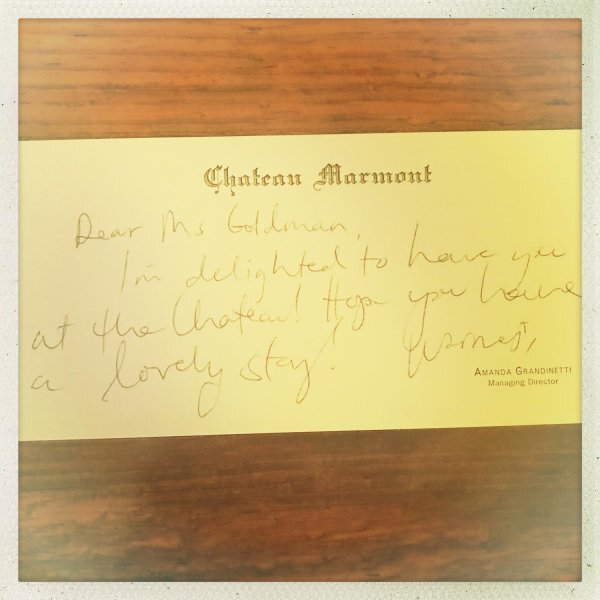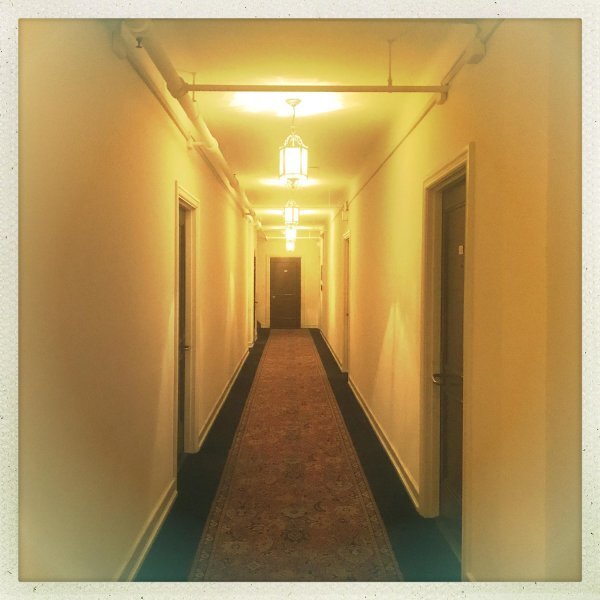DISENTANGLEMENT/RE-EMBODIMENT
DISENTANGLEMENT/RE-EMBODIMENT
Mildred's Lane
Saturday October 1, 2022
Mildred's Lane is proud to present Disentanglement/Re-embodiment by Los Angeles-based artist Jill Goldman. In this new body of work—a response to two years of research into patriarchy—Goldman continues her ongoing exploration of transformative ritual and the gendered body. Developed at Mildred’s Lane during a residency in 2021, Disentanglement/Re-embodiment is an ambitious attempt to disentangle the bonds of gender-based oppression and imagine a re-embodied self, unencumbered by patriarchal power and domination. In videos, photographs and performances Goldman interrogates the intangible ways that patriarchy creates fictions of the body and then insists that these fictions are natural, essentializing socially constructed traits as biologically and divinely determined, thereby simultaneously constructing and compelling gendered realities.
While it's impossible to know if we can ever fully experience our bodies outside of the linguistic and patriarchal social institutions that not only regulate them but define them, Disentanglement/Re-embodiment challenges the viewer to take seriously the possibility of a self independent of a system based on power relations. In performances that use ropes and women's hair, music and dance, Goldman makes visible the invisible structures of patriarchy and attempts to untangle them, extricating female bodies from their insidious and subjugating webs. Goldman, a long-time activist who advocates for the rights of those marginalized by patriarchy is skilled at pragmatic resistance, fighting injustice from a position inside our political and social systems. In her art and Tantric meditation practice, however, she explores a more radical form of resistance, a resistance that is founded on an expansive consciousness that demolishes the oppressive structures the political right is so hellbent on solidifying.
The Sanskrit word Tantra derives from the verbal root tan, meaning to weave, and while Goldman attempts to unravel one fabric, she weaves another one, represented visually in videos and photographs printed on muslin in which the boundaries between the self and the world blur. From its origins in 6th century India, Tantric initiation has always been open to all genders and all social classes. With its revolutionary shapeshifting goddesses and panpsychism Tantra dissolves borders and erases binaries. By embracing this profoundly non-dualist consciousness, Goldman imagines a dematerialized liquid reality, an alchemical transformation that occurs in the world, via the body, revealing the sacred in the profane. Because this state of "oneness" entails a radical solidarity with every human, indeed, with every particle in the universe, the boundaries that separate the terrestrial from the numinous, the self from other, subject from object, collapse, and all hierarchies are razed. Patriarchy is rendered not only absurd but cosmically powerless.
-Asti Hustvedt
DISENTANGLEMENT/RE-EMBODIMENT - PERFORMANCE Mildred’s Lane
October 1,2022
Dancers: Jill Goldman, Veronica Caudillo-Thelia, Louise Hamagami and Roxanne Steinberg
Music by Livia Reiner and Rose Reiner
DISENTANGLEMENT/RE-EMBODIMENT
Performance Photos by Jefferey Jenkins
DISENTANGLEMENT PART ONE AND TWO
iPhone video with Roxanne Steinberg
DISENTANGLEMENT PART ONE AND TWO STILLS
Performance Photos
ROPES
DISENTANGLEMENT DEMONSTRATION
Roxanne Steinberg Untangles her Hair
Video of performance at Mildred’s Lane
October 1, 2022
DISENTANGLEMENT DEMONSTRATION PERFORMANCE
Performance Photos by Jefferey Jenkins
JILL GOLDMAN
DISENTANGLEMENT/RE-EMBODIMENT at
The Mildred Complex(ity)
October 8- November 5, 2022
RE-EMBODIMENT PARTS ONE & TWO
iPhone Video
40 DAYS
iPhone Photos
DISENTANGLEMENT/RE-EMBODIMENT at
The Mildred Complex(ity)
October 8 - November 5, 2022
DISENTANGLEMENT/RE-EMBODIMENT
ARCANE Space
April 6 - 13, 2023
DISENTANGLEMENT/RE-EMBODIMENT 2 - PERFORMANCE ARCANE Space
April 6, 2023
Dancers: Jill Goldman, Veronica Caudillo-Thelia, Christine Suarez and Roxanne Steinberg
Music by Livia Reiner
DISENTANGLEMENT/RE-EMBODIMENT 2
Performance Photos by Jon Reiss and Cassandra Church
DISENTANGLEMENT/RE-EMBODIMENT 3 - PERFORMANCE ARCANE Space
April 6, 2023
Dancers: Jill Goldman and Roxanne Steinberg
Music by Livia Reiner
DISENTANGLEMENT/RE-EMBODIMENT 3
Performance Photos by Jon Reiss and Cassandra Church
DISENTANGLING PATRIARCHY - RHIZOME
"For this new iteration of Disentanglement/Re-embodiment, Goldman borrows Deleuze and Guattari's concept of the rhizome to illustrate how patriarchy proliferates and sustains its power. Borrowed from botany, the term rhizome describes plants that have an interconnected subterranean network of roots that spread horizontally, sending up offshoots in new terrain. Because every point connects to every other point, weeding the visible plant does nothing to eradicate the underground root system, making a rhizome very difficult to destroy. In contrast, a tree has a single origin—a seed that develops roots, a trunk, and branches. If patriarchy functioned as a tree, its proverbial smashing would be no more difficult than chopping that individual tree down. Goldman’s interactive rhizome maps the ways in which patriarchy indiscriminately crosses borders, embedding itself in new territories. Race, class, sexuality, the environment, nationality, mass incarceration, capital, and labor are just some of the separate domains that patriarchy infiltrates, creating mutually reinforcing systems of domination and exploitation. A rhizomatic problem requires a rhizomatic solution, a multipronged and intersectional method that works to disrupt and disentangle patriarchy's tenacious hold in multiple fields.
DISENTANGLEMENT/RE-EMBODIMENT
ARCANE Space
April 8 - April 13, 2023
DISENTANGLEMENT/RE-EMBODIMENT 4
Limbo Festival
July 7, 2023
DISENTANGLEMENT/RE-EMBODIMENT: TOWARDS RE-EMBODYING EQUALITY
Serpent à Plume, Paris
January 23, 2024
TOWARDS RE-EMBODYING EQUALITY: PERFORMANCE
Dancers: Jill Goldman, Roxanne Steinberg
Music by Livia Reiner
Filmed by Paul Flé
In a live performance of Disentanglement/Re-embodiment: Towards Re-embodying Equality, Goldman and the dancer choreographer Roxanne Steinberg re-entangle the ropes they have disentangled to create a large bird’s nest, incorporating twigs and bits of fabric. With exquisitely tranquil and exacting movements, accompanied by Livia Reiner’s meditative and transportive vocals and harp music, they form an entirely new structure, repurposing the ropes previously used to exploit and subjugate to build an open refuge that nurtures and protects. All three women wear white dresses whose feminine frailty is belied by the power and resoluteness of their gestures.
Towards Re-embodying Equality attempts, through films and performance, to visualize a path to an egalitarian and nonhierarchical society, one that troubles rigid boundaries and fixed identities. While patriarchy produces and enforces binaries, it also creates ambiguous border cases that muck up its clean-cut classifications. Goldman focuses on the murky margins and her work is filled with swirling moving images and bodies in flux. Even her still photographs are often blurred by movement or, when motionless, her subjects and objects dissolve into each other.
—Asti Hustvedt
Performance Stills
Rehearsal Stills by Murielle Sauzot Louiseau
“Infinite Becoming”
“Infinite Becoming,” a series of three short films entitled “Dreaming Bees,” “Imagining Spiders,” and “Evoking Birds” strategize new forms of resistance. Among other influences, the films incorporate Deleuze and Guattari’s concept of “becoming animal” as a possible tactic to subvert the mechanisms that turn us into subjects useful for maintaining the existing order. The bees, spiders and birds here are not fixed categories and the women depicted do not actually become bees, spiders and birds, but through their dreaming, imagining, evoking, and becoming they enter a state of flux in which the boundary between human and animal disintegrates and new possible connections, relations and pathways emerge.
Stills of Jill Goldman in "Dreaming Bees"
Stills of Gina Gershon in "Imagining Spiders”
Stills of Roxanne Steinberg in "Evoking Birds"
TOWARDS RE-EMBODYING EQUALITY
A Series of Conversations with Jill Goldman
ARCANE Space
April 15 - April 19, 2024
ARCANE Space presents a series of conversations, “Towards Re-embodying Equality,” the most recent iteration of Disentanglement/Re-embodiment, her ongoing exploration of transformative ritual and the gendered body. Disentanglement/Re-embodiment is an evolving, multipart attempt to disentangle the bonds of gender-based oppression and imagine a re-embodied self, unencumbered by patriarchal power and domination. Inspired by over three years of study of the work of Heide Göttner-Abendroth (Matriarchal Studies: Studies on Indigenous Cultures Across the Globe) with Joanna Ebenstein and Morbid Anatomy, and influenced by her research into Afro-futurism, utopian societies, Tantra, the gift economy, and post-capital economies, Towards Re-embodying Equality explores how we can shift from the dominating, exploitative, patriarchal society we live in to an egalitarian, nonhierarchical society based on shared values of respect (humans and nature), community, connectedness, compassion, multiplicity, and reciprocity. We will look at reimagining/rethinking organizational domination systems by challenging and transforming deeply ingrained cultural and social norms and creating new systems that prioritize, non-violence, gender equality, economic equality, and non-discrimination.
Installation Photos
Jill Goldman in conversation with Heide Goettner-Abendroth (Learning from Matriarchal Societies: Re-envisioning Equality, Economic Justice, and Peace), AnaLouise Keating (Spiritual Activism as a Catalyst for Social Change: A Conversation on Gloria Anzaldúa), Barbara Alice Mann (Formalized Women-Power: The Social, Political, Economic, and Religious Roles of Iroquoian Women), Catherine Coleman Flowers (Multidisciplinary Grassroots-Led Solutions to the Intersecting Challenges of Water and Sanitation Infrastructure, Public Health, and Economic Development), Lauren Bon (“Artists Need to Create on the Same Scale that Society Has the Capacity to Destroy”: Addressing Critical Social and Environmental Issues Through Art Intervention), Sumaya Awad (No One Is Free Until We’re All Free: Building Cross-Movement Coalitions to Achieve Collective Liberation), Genevieve Vaughan and Letecia Layson (The Maternal Gift Economy: A Conversation on Capitalism, Peace, and a Sustainable Future), Kristen Ghodsee (Everyday Utopias: What 2000 Years of Wild Experiments Can Teach Us About A Good Life: A Conversation On a Radically Hopeful Vision for How to Build More Contented and Connected Societies). View all the conversations here.
DISENTANGLEMENT/RE-EMBODIMENT 5
Infinite Becoming & The Collective Nest
Limbo Festival
July 5–7, 2024
Towards Re-embodying Equality: Infinite Becoming & The Collective Nest are the newest iterations of Goldman’s project Disentanglement/Re-embodiment, an evolving, multipart and ambitious attempt to disentangle the bonds of gender-based oppression and imagine a re-embodied self, unencumbered by patriarchal power and domination.
The Collective Nest incorporates actions during which Goldman and dancer choreographer Roxanne Steinberg turn to the communal nesting practices of birds. While at the Limbo Festival, they will gather twigs and branches to create a large collective nest, culminating in a live performance. Through her alliance with non-human animals, the artist engenders a new set of possibilities to subvert patriarchal and neo-liberal conceptions of work, private property, individualism, competition and the nuclear family—all forces that serve to prop up gender-based oppression and capitalist exploitation. The Collective Nest destabilizes those hierarchical structures and points to a new egalitarian ecology of collective care, shared resources and mutual support. —Asti Hustvedt
Tracing Re-embodiment
We live in a time of crisis. If we do not address climate change, the world as we know it will end. The global rise of fascism threatens hard-earned victories for equity in race, gender, and sexual orientation. Staggering wealth inequality ensures that ruling elites will continue to manipulate the state for their own benefit. We are powerless watching the cycle of War and Genocides before eyes. The patriarchal promise of rule by the strong and eternal expansion and “progress” is at an end.
We need to do something now. We need a radical shift from a dominating, exploitative, patriarchal structured society to an egalitarian, nonhierarchical society based on shared values of respect (humans and nature), community, connectedness, compassion, and reciprocity. This requires reimagining/rethinking organizational domination systems (political, economic, social, and spiritual) by challenging and transforming deeply ingrained cultural and social norms, and creating new systems that prioritize gender equity and non-discrimination and strives for equal rights and opportunities for all individuals, regardless of their race, gender, sexual orientation, or ethnicity.
Embodying equality is an ongoing process that requires a comprehensive and multifaceted approach involving individuals, communities, institutions, and governments. It involves a commitment to dismantling systemic barriers and promoting a society where everyone has an equal opportunity to thrive.
For the last several years, I have researched and explored Dystopia/Post-Apocalyptic Fiction, Utopian Societies, Indigenous Societies, Modern Matriarchal Studies, the Maternal Gift Economy, and other models of post-Capitalist Economies in an attempt to re-imagine a more equitable society unencumbered by patriarchal power and domination.
DISENTANGLEMENT/RE-EMBODIMENT 6
Towards Re-Embodying Equality: a Community Gathering
Mildred’s Lane
August 24, 2024
“Goldman imagines a dematerialized liquid reality, an alchemical transformation that occurs in the world, via the body, revealing the sacred in the profane and the profane in the sacred. Because this state of "oneness" entails a radical solidarity with every human, indeed, with every particle in the universe, the boundaries that separate the terrestrial from the numinous, the self from the other, human from animal, and subject from object collapse, and all hierarchies are razed. Patriarchy is rendered not only absurd but cosmically powerless.” —Asti Hustvedt
DISENTANGLEMENT/RE-EMBODIMENT 7
Towards Re-Embodying Equality: (Re)sistance, (Re)ciprocity, (Re)solution
Francis Kite Club
February 2, 2025
Photos by Agniia Galdanova
DISENTANGLEMENT/RE-EMBODIMENT 8
Disentangling Patriarchy, The Collective Nest, and Conversation on Art, Activism and Resistance
Kunstnernes Hus, Oslo, Norway
June 29, 2025
Live multi-media performance of “Disentangling Patriarchy” from Jill Goldman’s Disentanglement/Re-embodiment featuring dancer Roxanne Steinberg and music by Livia Reiner followed by a conversation with Jill Goldman and Tanja Thorjussen on art, politics, and resistance.
DISENTANGLEMENT/RE-EMBODIMENT 9
Disentangling Patriarchy
Matriarchy for Future Festival, Venlo, Netherlands
July 5, 2025
“Disentangling Patriarchy” performance with Jill Goldman and Annabel Renshaw.
BEING MARGARET RAWLINS ROBERTS
Mildred’s Lane, Beach Lake, PA
September 13, 2025
Unlike her daughter, Barbara/Barbie, who is over-determined (200+ careers, countless costumes, a movie universe), Margaret has nothing but a name–Margaret Rawlins Roberts of Willows, Wisconsin.
Being Margaret Rawlins Roberts brings Barbie’s absent mother to the public sphere. She moves through roles, briefly inhabiting the possibilities denied to her, only to discard them. What remains is the site of refusal–an archive of exhaustion and defiance.
CONTROL AND CONSENT
RE/STRICT Film Festival - Fall of Freedom
Detroit, Michigan
November 22, 2025
Control and Consent: Sensitive, Offensive, and Disturbing Content is a multimedia performance/installation that confronts the political crisis of witnessing violence in real time, exposing what Goldman calls the “the moral circuitry of empire”—the mechanisms that determine whose lives are valued, whose are rendered expendable, and how visibility itself becomes a mode of governance.
Through an intentionally constructed architecture of witnessing, the installation draws viewers into the structures that normalize and distribute state violence. The work centers the phenomenon of a live-streamed genocide in Palestine, where the temporal distance between event and image collapses. When the moment of violence and the moment of seeing it coincide, spectatorship becomes ethically charged: the viewer is no longer outside the event but folded into its operation.
Control and Consent transforms looking into an ethical test, insisting that there is no neutral spectator: every act of seeing is a form of consent, refusal, or responsibility.
WHAT WILL YOU DO WITH YOUR COMPLICITY ?
THIS, THAT AND THE OTHER
(Dreams of to-be-looked-at-ness)
In a world ordered by sexual imbalance, pleasure in looking has been split between active/male and passive/female. The determining male gaze projects its phantasy on to the female form which is styled accordingly. In their traditional exhibitionist role women are simultaneously looked at and displayed, with their appearance coded for strong visual and erotic impact so that they can be said to connote to-be-looked-at-ness.
― Laura Mulvey, Visual And Other Pleasures
“This, That and the Other (Dreams of to-be-looked-at-ness) is a new exhibition of works by Jill Goldman that continues her practice of exploring memory and autobiography. The exhibit takes as its starting point the artist’s answer to the ubiquitous childhood question, “What do you want to be when you grow up?” Goldman remembers playing the 1960s board game What Shall I Be? The Exciting Game of Career Girls. Promoted as an “educational game for girls,” players learn how to perform femininity by collecting cards such as “you are pretty,” “neat,” “graceful,” and “have a nice smile” that maximize their chances to become one of the careers deemed gender appropriate: nurse, model, airline hostess, ballet dancer or actress. Cards such as “you are overweight,” “your make-up is too sloppy” and “you have poor posture” set the player back by sabotaging those career goals. Goldman’s childhood dream jobs were to be Carol Merrill, a tour guide at Graystone Mansion in Beverly Hills, and a backup dancer, careers that ostensibly adhere to the boardgame’s misogynist emphasis on prettiness, gracefulness and neatness. However, while these jobs embody what the feminist film theorist Laura Mulvey’s labels “to-be-looked-at-ness,” they also destabilize that sexist paradigm by redirecting the gaze. As the artist explains, Carol Merrill, the famously silent game show model on Let’s Make a Deal, is not merely a mute mannequin, a pretty female with a nice smile and good posture, but a subject with genuine agency. On television from 1963-1977—a period that encompasses the entirety of Goldman’s childhood—Merrill’s pointing gestures, like those of a tour guide and a backup dancer, tell us where to look and therefore subvert the pleasure or “scopophilia” that the male gaze takes in objectifying women. The female body is no longer a passive object to be ogled but an active force that demands attention so that it can point us in a new direction.
Goldman’s most ambitious exhibition to date, “This, That and the Other” is a delirious multimedia exploration of gender and gesture. The artist joyfully reenacts her childhood dream jobs through performance, video, photography, sculpture, prints and interactive game-playing that all center on an elaborate taxonomy of pointing. From a young age Goldman seemed to implicitly understand the exhibitionist pleasures of being looked at and at the same time the power that came from capturing that gaze only to divert it. “As a little girl, I’d spend hours pretending I was Carol Merrill,” recalls Goldman, “pointing to furniture and appliances. I also dressed up in little outfits and gave tours of my house to anyone who was interested. When I was older, I fantasized about being a backup dancer. In fact, I still fantasize about being a backup dancer! I want to be the girl in the background whose role is to get the audience to focus on the main attraction.” Indeed, the artist has a series of “Dancin Fool” videos that she posts on Instagram that depict her moving exuberantly in front of works of art. These clips are a dance between exhibitionist jouissance and a bodily command to look elsewhere. In the end, Goldman grew up to become a filmmaker and an artist, work that like Carol Merrill, the tour guide and the backup dancer, explicitly controls our vision. “This, That and the Other” exposes the seemingly mundane gesture of pointing to be a semiotic powerhouse, at once a corporeal command to look and a subversive strategy that disrupts the male gaze.
Asti Hustvedt
THE TOUR GUIDE
short iPhone film 7 min 30 sec Jill/Judy gives tour of grounds of Greystone Mansion Beverly Hills
THE BACKUP DANCER
short film 3m 42 sec - Jill is backup dancer for "Mexico" rock video written and performed by Sophie Auster - with Sophie Auster and Veronica Caudillo
PERFORMANCE OF “3 CAROLS”
with Jill Goldman, Roxanne Steinberg, and Veronica Caudillo as Carol Merrill
TAXONOMY OF POINTING
25 framed 10 x 10 in photos of Jill/Carol pointing, illustrated poster collaboration Cristine Gillespie & Jill Goldman
WHAT SHALL I BE?
30 10 x 10 lucite boxes with red hearts and orange circles tokens from The 1960’s Board Game “What Shall I Be?“, 1 acrylic *What Shall I Be?" sign 7 in x 6.4 ft
I WANT TO BE BARBIE AND NOW I AM
2 12 x 16 x 6.5 in lucite boxes with Juicy Couture Barbies
ODE TO CAROL MERRILL
multi screen video installation - 40 min 21 sec
DOOR NUMBER 3
installation of "Living Room" from Let’s Make a Deal circa 1970
This, That and the Other was presented at The Salon at The Grenada on April 22 & 23, 2022
Video This, That and the Other Performance by Paul Ryan
Thank you to Susie Landau, Lauri Firstenberg, Asti Husteved, Judy Balduzzi.
BEFORE THIS THERE WAS SOMETHING
Tantra #1
Directed By Jill Goldman, Edited by Irina Prokhorenko With Veronica Caudillo-Thelia, Jill Goldman, Roxanne Steinberg
Like millions of Americans, I was deeply affected by the toxicity of the Trump presidency. The lies, the hatred, the racism, the misogyny, the cruelty and utter disregard for human life almost destroyed my faith in humanity. Almost. Last November, the collective power of the people responded to this assault by preserving our battered and fragile democracy. A more equitable America has emerged and rationally celebrate this victory of humanity over inhumanity, yet psychically the vile dishonor of our national shame continues to lurk in my soul, keeping me in a disorienting liminal state. Before There Was Something is my effort to dispel this trumpie darkness through my own version of a tantric ritual of radical transformation. I have always been drawn to Tantra, even before I knew what it was, with its radical goddesses and philosophy of revolutionary thinking and practice. Either through mystical intervention, the Baader-Meinhof effect or the magic of iPhone algorithms, tantric images and music proliferate around me, materializing out of thin air in my day-to-day life. For example, one of the musical compositions I use in my performance spontaneously appeared, unbidden, on my Spotify playlist. Before There Was Something is a performative tantric gesture , a rite of passage into a new state of being, one that will allow me to fully celebrate the fact that Donald Trump is gone from the White House and to fully embrace humanity.
MEMORIES OF PLACES I HAVE NEVER BEEN
In "Memories of Places I Have Never Been," Jill Goldman attempts to tell the story of her father, to construct a coherent narrative of his life and his death. This much is certain: In 1971, when she was nine years old, Goldman found her father dead in his bed. It was August 23, his mother’s birthday. He had apparently shot himself in the head. An ambulance came and took him away. That night for dinner, she ate a baked potato and peas.
For almost five decades, Goldman lived with this barest of outlines. Shortly after we met as students in Paris in the early 80s, she told me about her father’s suicide in a remarkably blasé tone. Jill was a brilliant, curious and intense student who could expound on everything from Madonna to Julia Kristeva in passionate and hyper-animated discourses and “blasé” was not an adjective typically used to describe her. Yet, she spoke of this…

INVESTIGATION

In the winter of 2019, I was the artist in residence at Arcane Space. I was already deeply involved in the investigation of the life and death of my father, who died by suicide in 1971 when I was 9 years old. Determined to unravel the mystery of his death, I interviewed people who knew him, looked at old photographs and sorted through boxes of memorabilia my mother and sister had saved. The gallery became my own creative crime lab. I covered its walls with the evidence I collected, constructing an enormous crime board that connected people and events. I later found out that this process is called “link analysis” which, significantly for this moment, is also used by the CDC to track epidemics. In the end, however, my attempts to track my father’s story were futile and his death remains shrouded in mystery.
-Jill Goldman
ARTIFACTS
MEMORIES OF PLACES I HAVE NEVER BEEN
“In what the artist aptly calls a ‘reverse Proustian exercise,’ she tried to create memories she never had by visiting places she had never been. These mournful and arresting photographs of empty lots and swimming pools, of houses now occupied by invisible strangers belie their purported function as illustrations of a life. Instead of prompting a story à la Proust’s Madeleine, one that would create connection to her father, these images are defiantly devoid of any paternal trace, remarkable for their beautiful and eerie emptiness.”
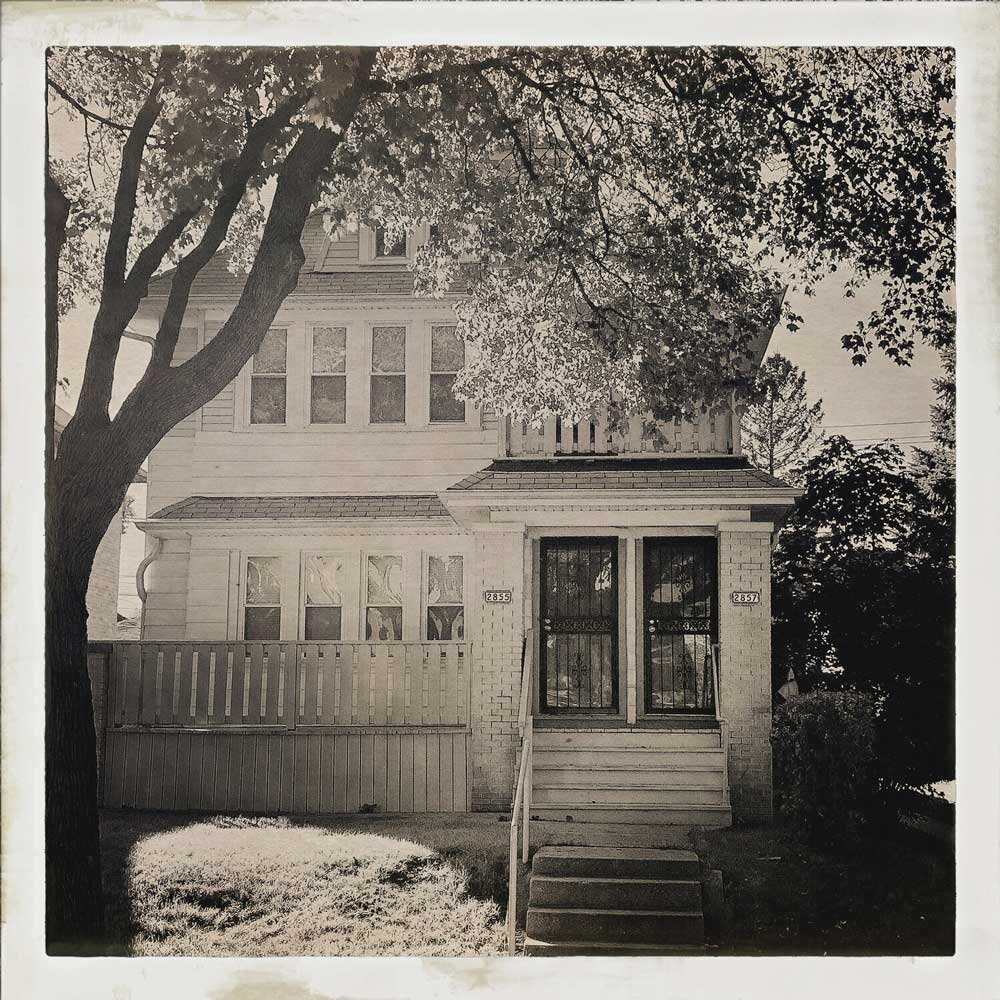
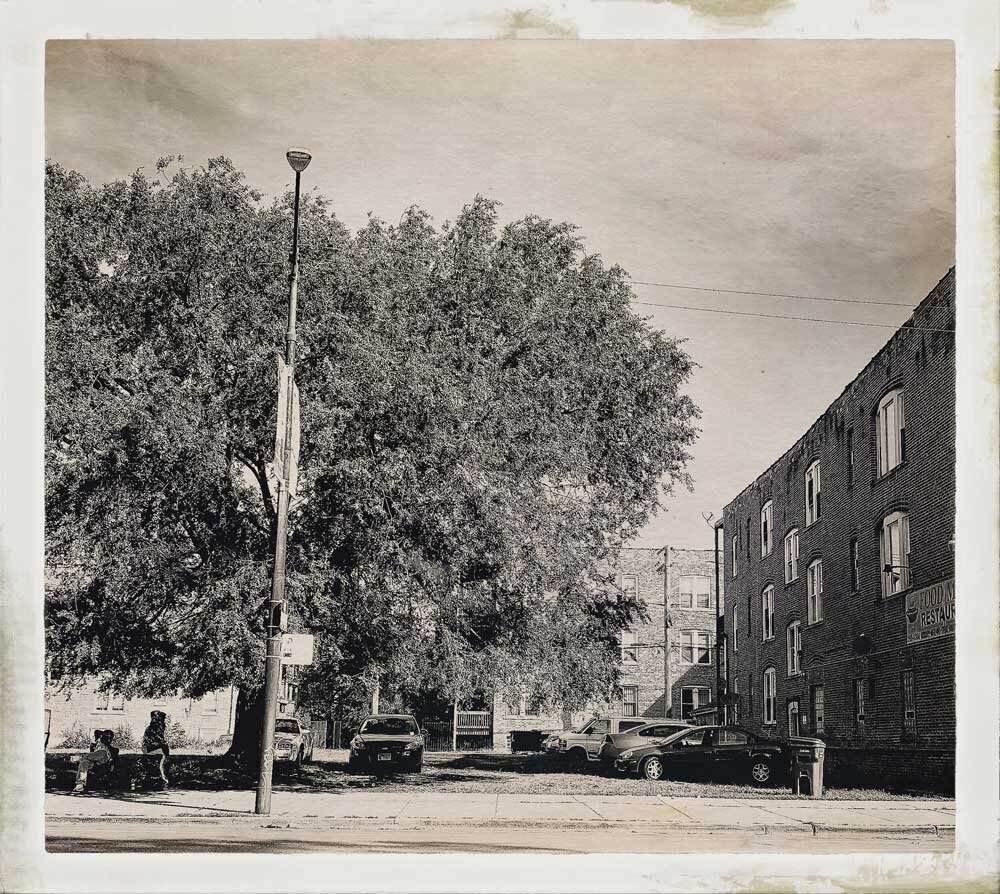
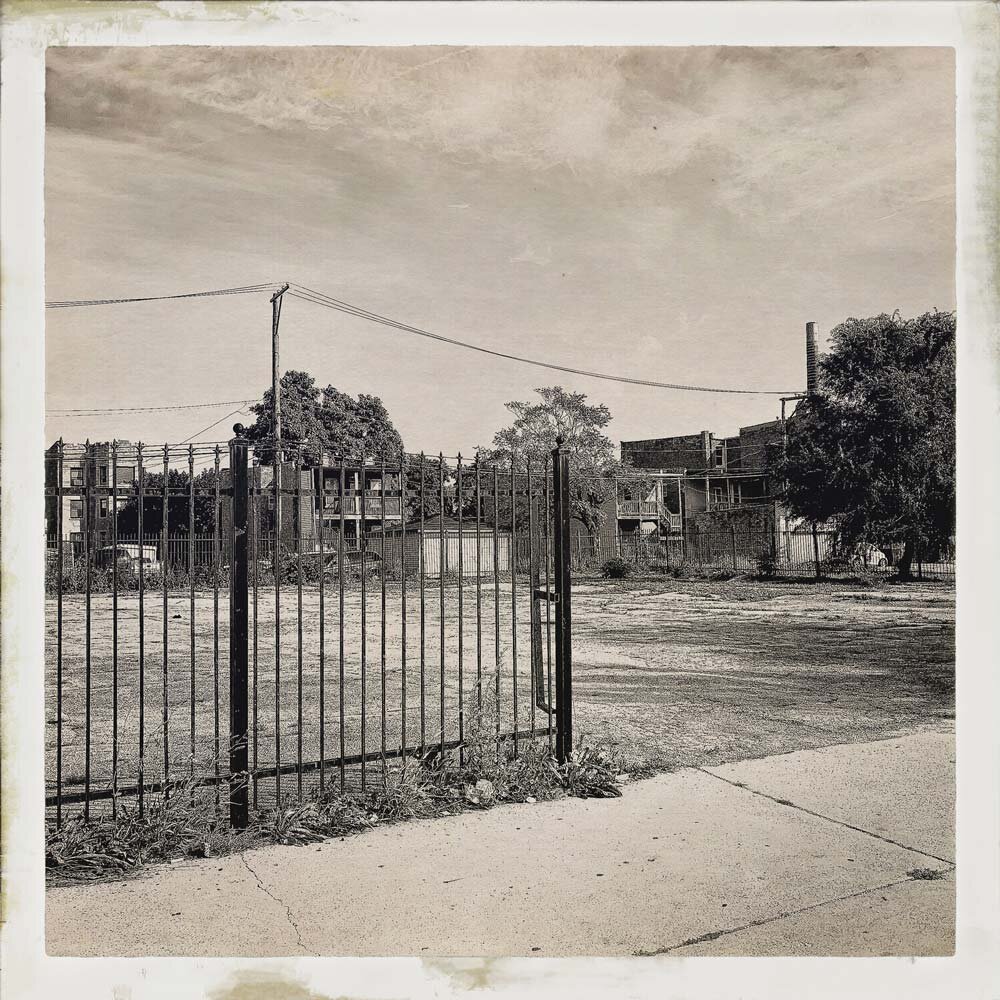
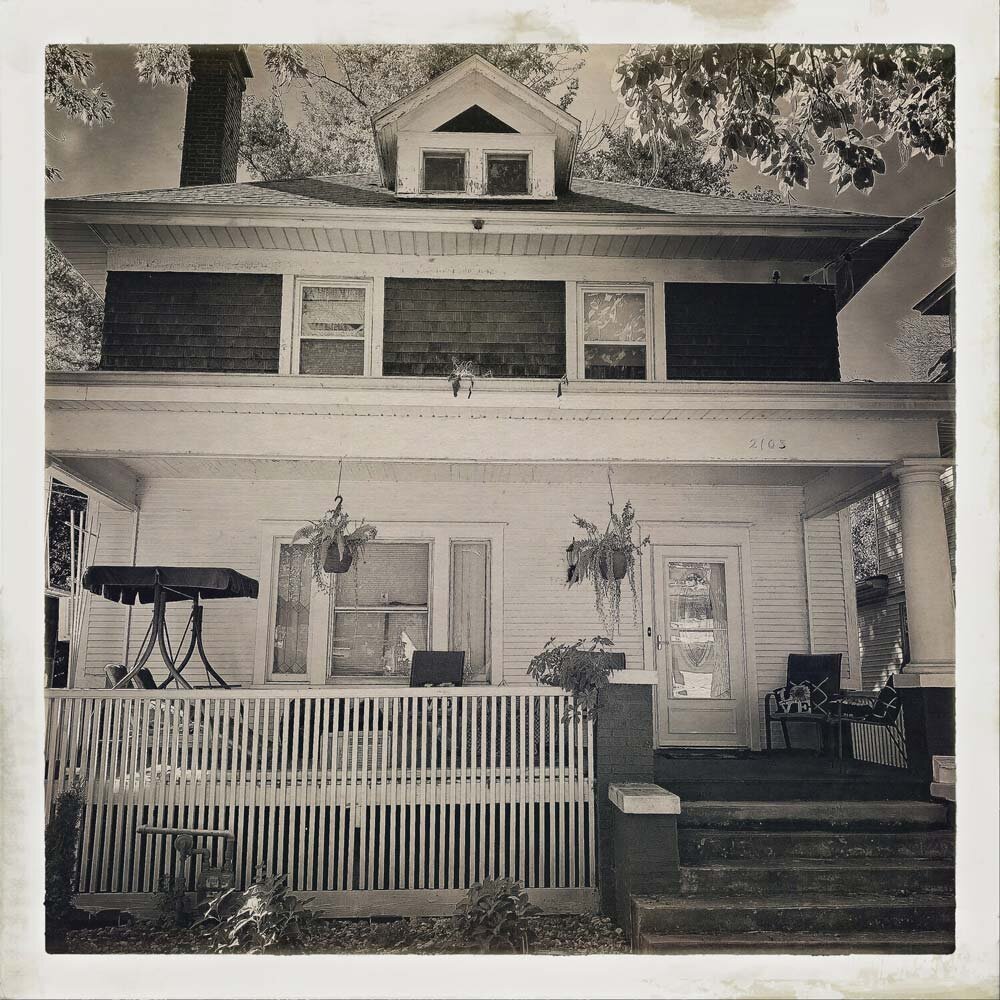



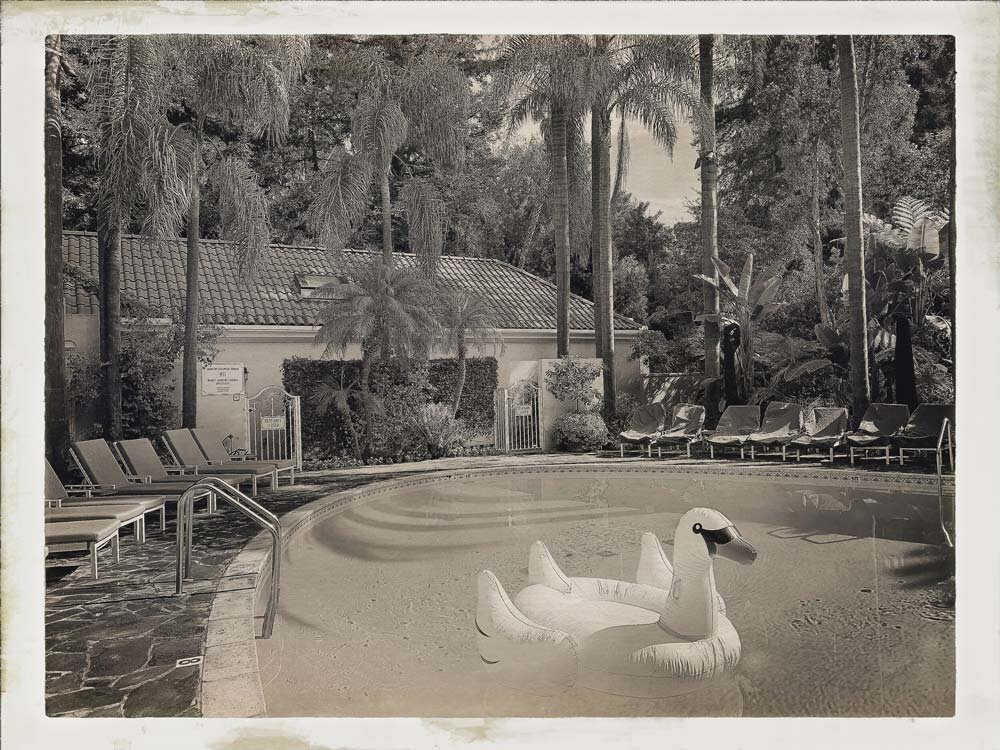
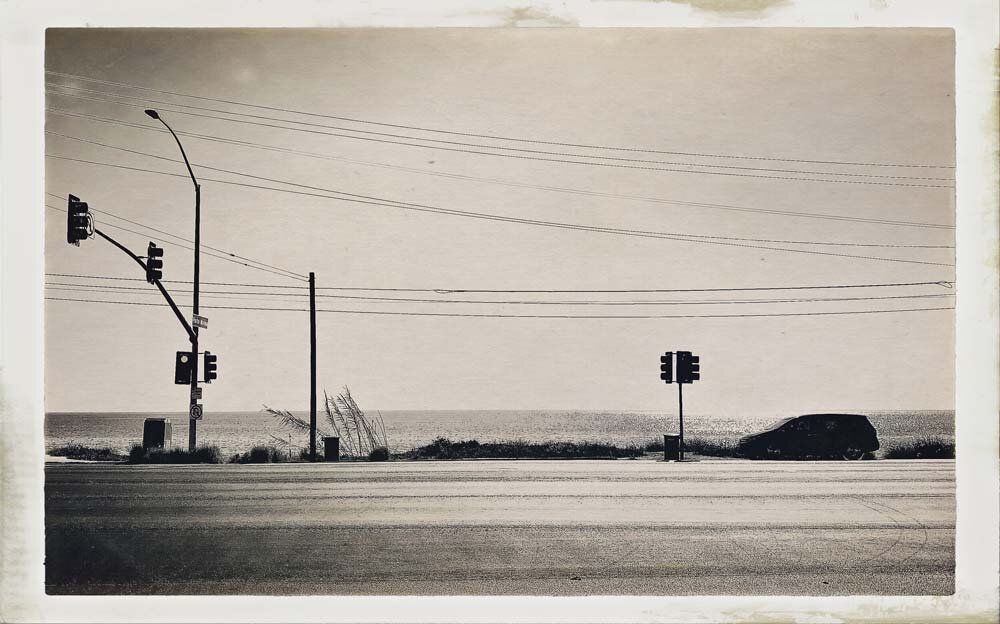

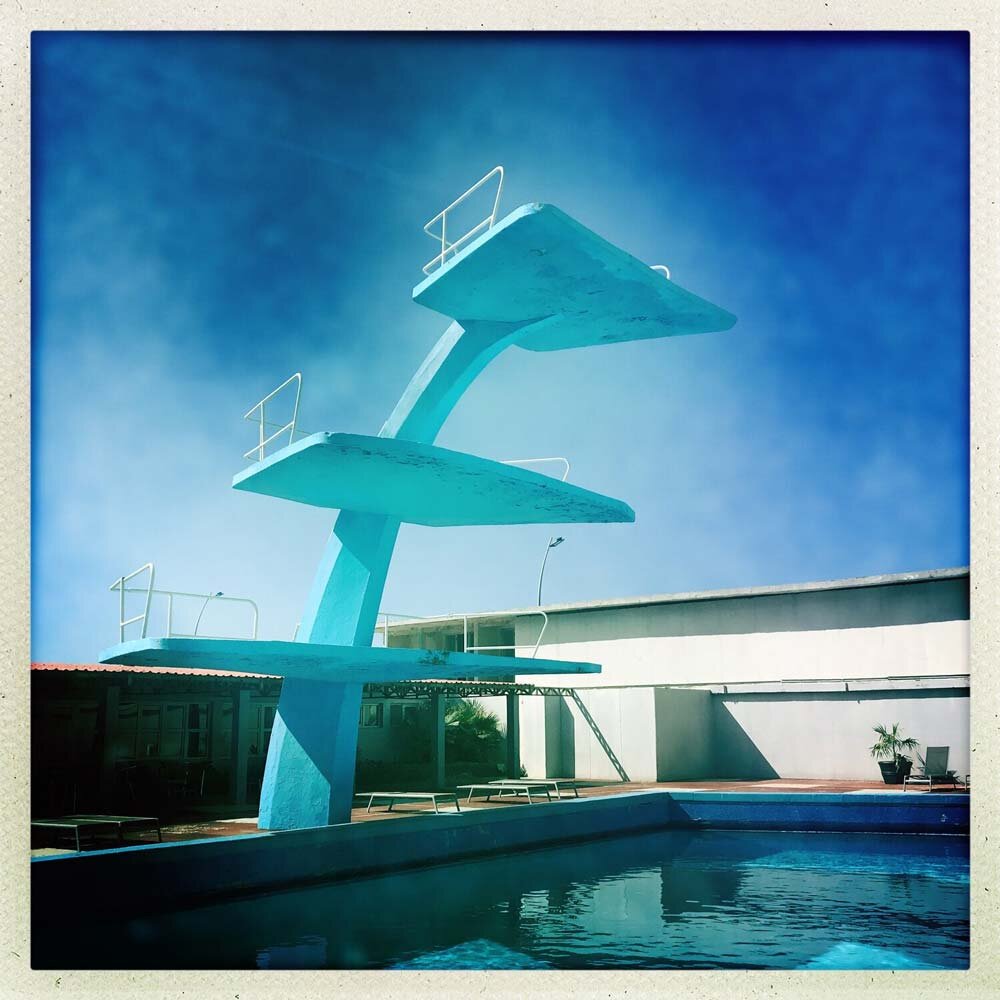

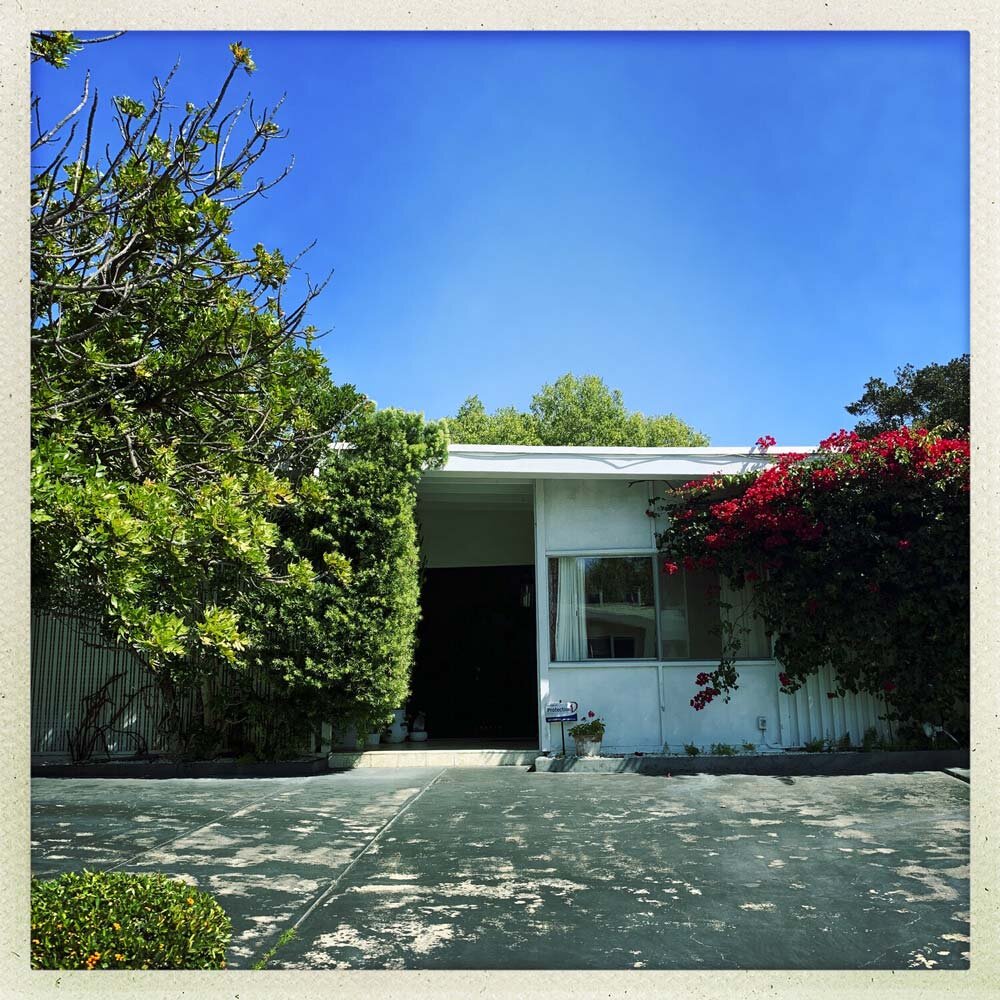


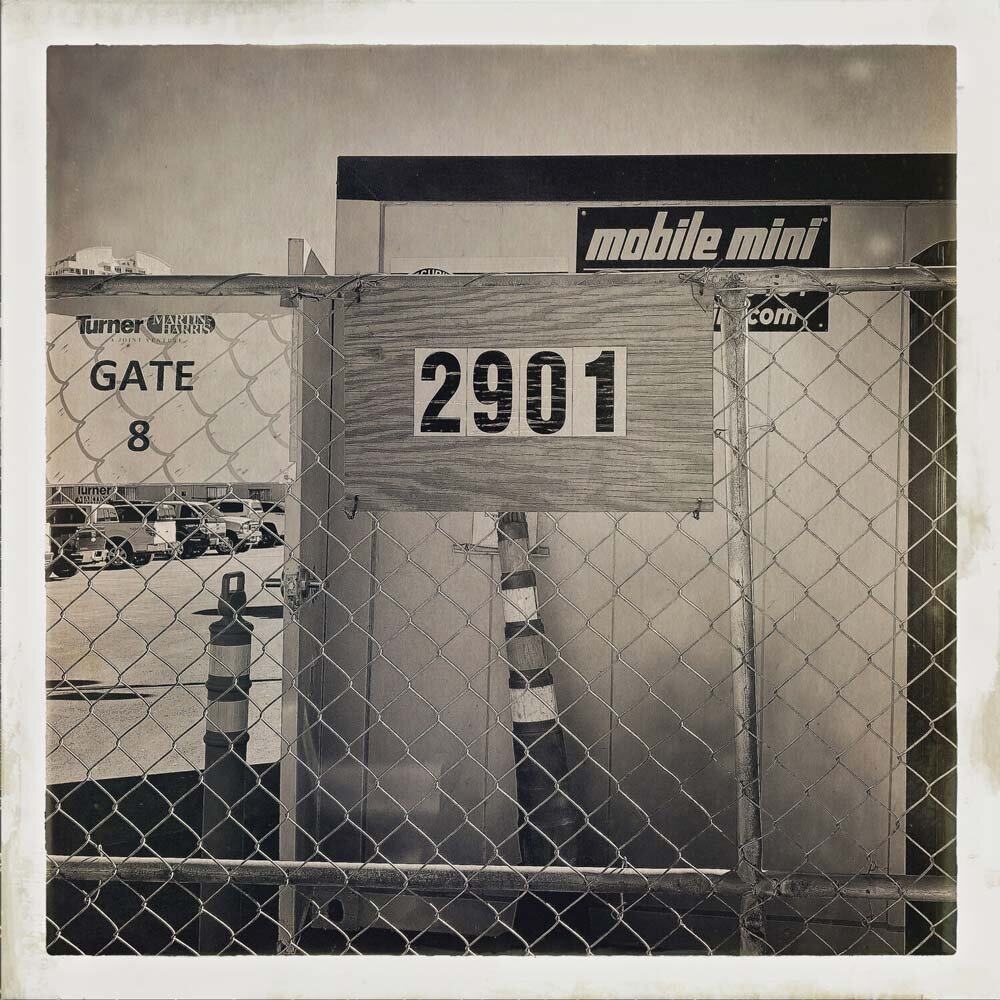

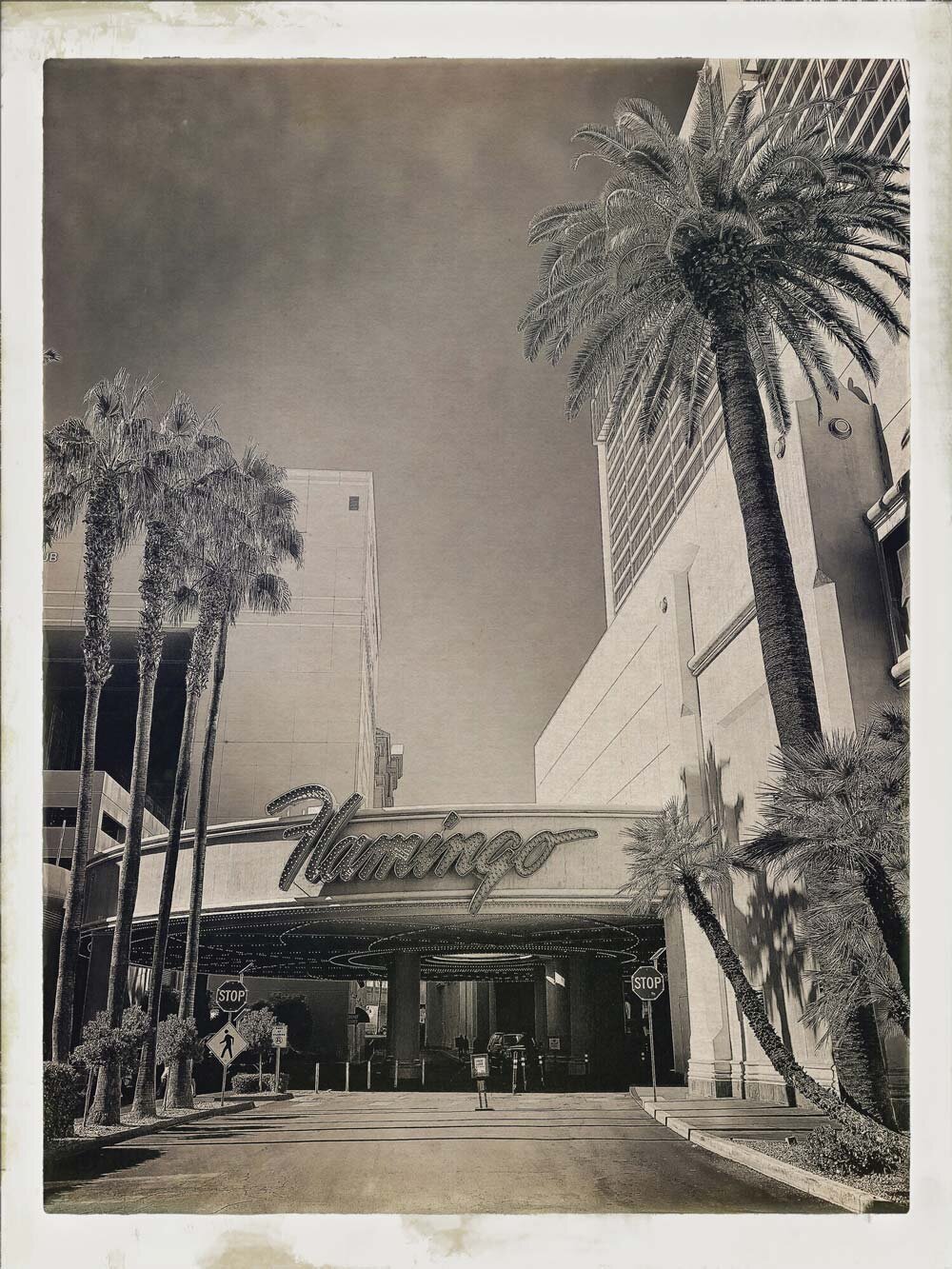
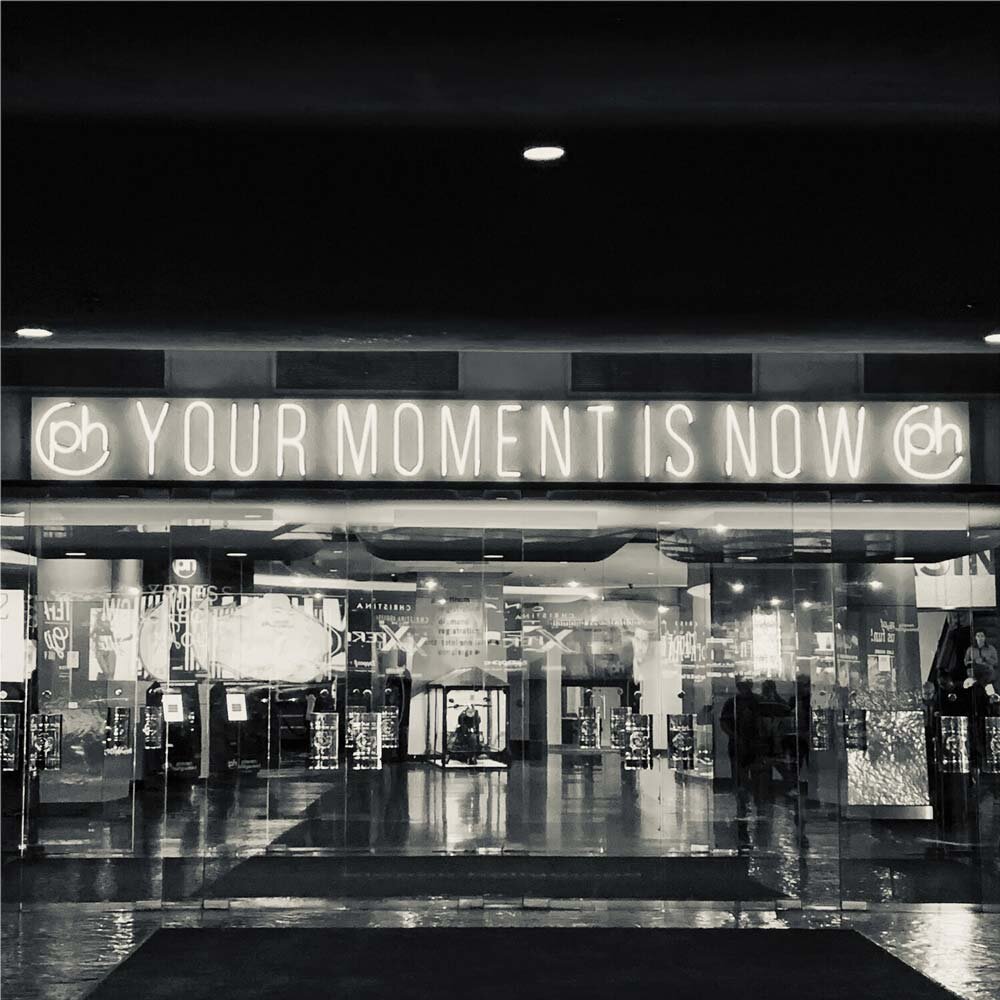
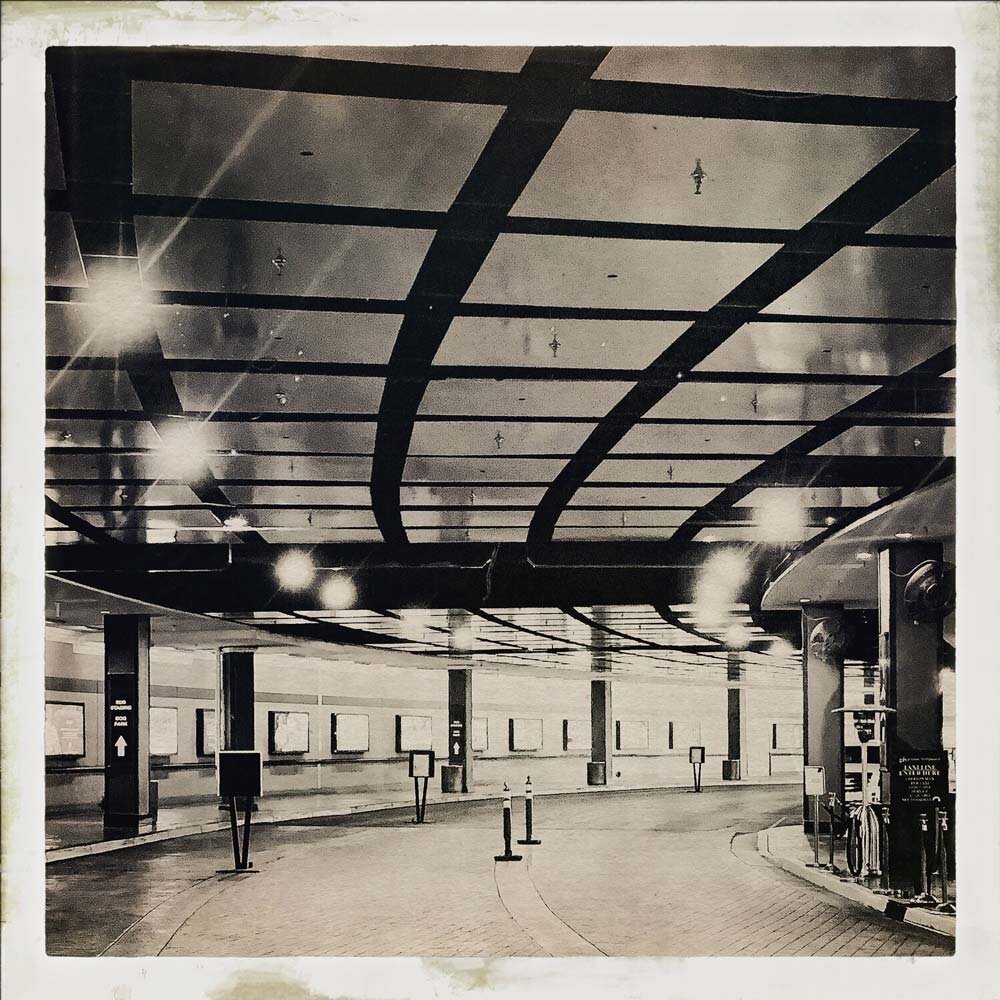
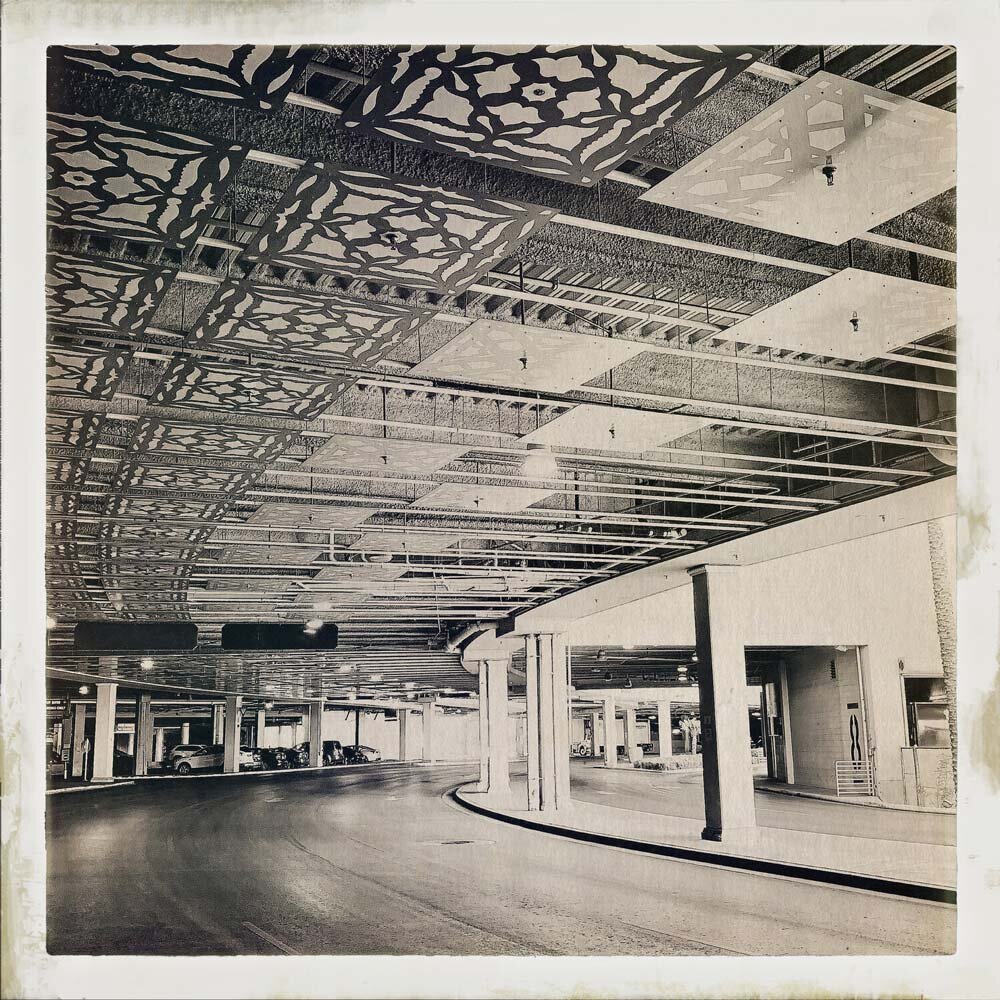

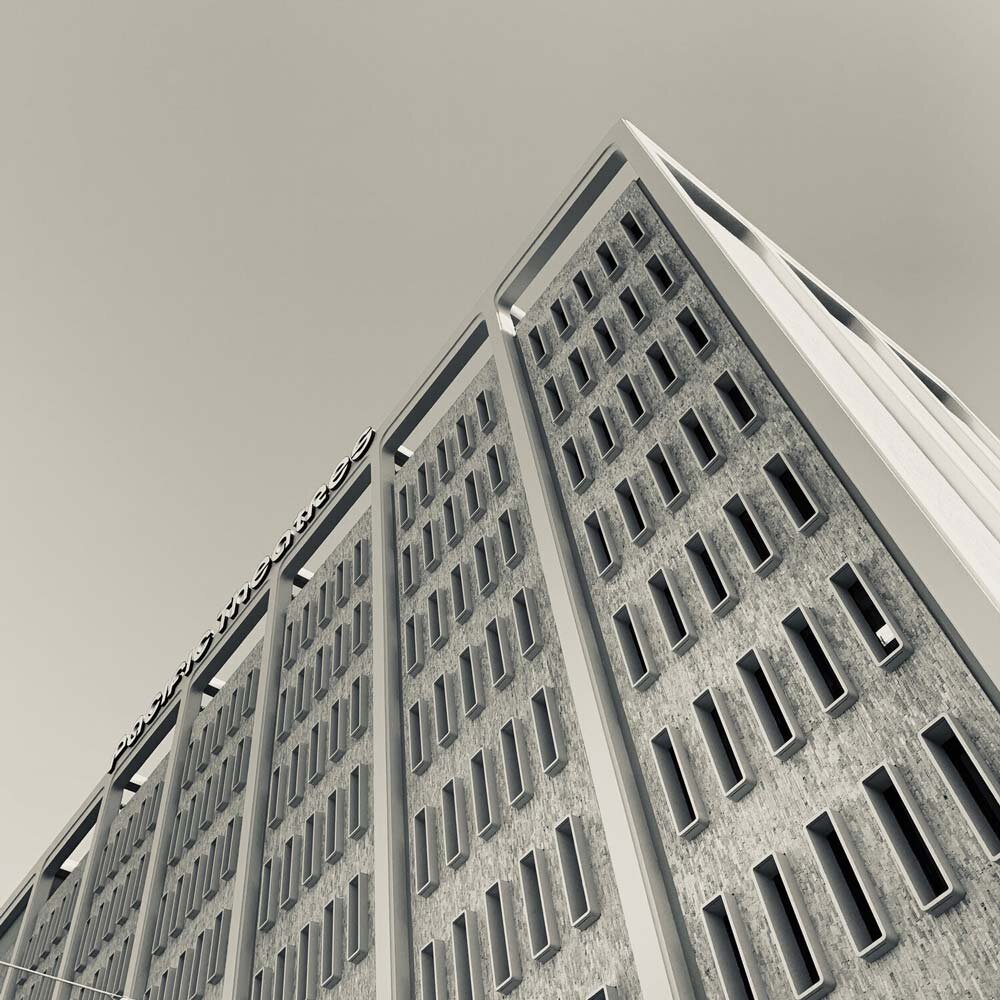


“These moving images of Goldman walking alone, of long stretches of flat highways and fields, of nondescript architecture, of the artist laying flowers on her dead father’s dead mother’s grave reveal everything about the futility of her quest, and nothing about the father she’s searching for.”
“’The Letter,’ in which Goldman reads her father’s suicide note for the first time, is the most poignant, elegiac, and emotionally fraught piece in the show. It includes recently found footage of the nine-year-old Jill directing herself in a movie, filmed in her psychoanalyst’s office, a film that is a deeply unnerving drama of identity and loss.”
“In ‘Black, Red, White,’ the adult Jill Goldman directs herself in another film. This time it’s a video that symbolically acknowledges her failure to give her father’s death a coherent narrative, but also depicts her triumph over this loss in a resurrection, not of her father, but of herself.”
WE ALL WANT A STORY. ESPECIALLY ONE WITH A HAPPY ENDING.
-JILL GOLDMAN
FORT/DA
Fort/Da, Jill Goldman’s first art installation, reprises characters that have long preoccupied her, and revisits places from her past, facilitating encounters with women who are escaping or transcending the commonplace through imaginary leaps. Inspired by Virginia Woolf’s Clarissa Dalloway, Goldman seeks out the extraordinary, elevating the everyday to holiday, enabling women – through both the lens of her camera and the amplitude of her imagination – to be narratively construed.Having reached a time in life when her children are grown, Goldman experiences and expresses both the freedom of being unmoored, and the mourning that comes with no longer being anchored in the way she once was. The pieces are thus a commingling of mourning one’s past identity and the unmoored-ness of the vast expanses that lie ahead. Turning toward the lives of other women, Goldman takes liberties with their stories, whilst remaining faithful to the integrity of their singularity, feeding her viewer possibilities yet always respecting the mystery of the Other, that whom we do not and cannot know. The posed photographs of women on hotel bedspreads, the invented stories of the women in daugeratypes, and the images of the Dancing Fool represent an antidote to the often isolating and claustrophobic aspect of the lives of those who are homemakers, whether by necessity or election.
In this installation, we see Goldman retreading Clarissa Dalloway’s footsteps with maps that don’t make sense, inventing stories of women’s lives that are true because she has inhabited them. In so doing, she locates the lives of others in the fertile in-between-ness of reality and fantasy. Out on her own at last, Goldman links herself to other women. The resonance and relevance of the piece is in the very fact of her calling upon women, past and present, real and imagined, to guide and join her in creating an imaginary that holds the promise of possibility. In this way, she rejects and disavows nothing. Her project is inquiry, a feeling around that could only be done by her now, in this in-between stage of her life. The dance is the animating element, a loosening of life’s constrictions, opening into adventure, possibility. The radical truth of Goldman’s vision is precisely that while a woman is reveling in freedom, she is also feeling around for the borders.
Goldman is involved in an endeavor that concerns elevating and thus escaping from the predictability of daily life. This may be accomplished by hosting or attending a party, reclining on a hotel bedspread, taking a walk to buy flowers; even putting on make up can be transformative. Once, many years ago at Bennington, I lay on Jill’s white bed, watching her dress up. She was standing at the mirror putting on makeup. Startled by the transformation I witnessed, I asked, “do you think maybe you have too much make up on?” Undaunted, she put on red lipstick, smacked her lips, turned to me, smiled, and said, “no; I look great!” I have long remembered that moment because she seemed so assured, not trying to look natural, but at ease in festivity, and in expectation. She had a look of excitement entirely alien to me, as if she were on the brink of something. There is humility in Goldman’s grandiosity, an openness to the lived experience of every woman’s existence and the possibility of every woman’s holiday. No narrative lasts forever, no identity defies impermanence. We are not granted infinite possibilities for living, but the possibilities for that which we can fathom are endless. The thread that runs through Goldman’s work is that of imaginative hospitality: “What is your story?” she asks, again and again, of herself, and of us.
– Robin Flicker
INSTALLATION
22, boulevard Flandrin
a recreation, reinvention, re-presentation, re-imagination of the artist’s apartment in Paris.
Some Women Not Related to Me
original nineteenth-century photographs of women who got dressed up to have their pictures taken. 1.Daguerreotypes 2. Tintypes3. Cartes de Visites 4.Cabinet cardsa recreation, reinvention, re-presentation, re-imagination of the artist’s apartment in Paris.
Women on Bedspreads
a series of 49 photographs taken between 2015 and 2018. Goldman felt compelled to photograph, women, her female friends and family members on bedspreads.
22, Boulevard Flandrin 75016 Paris
a series of 7 photographs. Goldman returned to the apartment where she lived but didn’t get in.
Chateau Marmont
a series of 6 photographs. Goldman went to take pictures of women on bedspreads at the Chateau Marmont. The beds don’t have bedspreads.
FILMWORKS
Excerpts from selected works directed by Jill Goldman.
Night in the City, 1987, super 8, black and white;
fort/da, 1987, 16 mm, color;
Holding Margie’s Hand, 1988, 16 mm, black and white;
Blues for Sister Someone, Lenny Kravitz music video, 16mm black and white; Sally Goes Shopping, 2004, video color.
Places/Spaces Between – 1985 super 8 color.
Jill Goes to Paris, Almost – 1988 video.
Dancin’ Fool, 2018, iPhone Cinematic video.
FORT/DA PERFORMANCE (2019)
The Perfect Hostess
PERFORMERS
Jill Goldman & Vicki Kennedy as hostesses
Asti Hustvedt & Veronica as parlor game players
Morleigh Steinberg & Roxanne Steinberg as perfect hostesses
Jill Goldman, Veronica & Louise Hamagami as imperfect hostesses
22, boulevard Flandrin
PERFORMERS
Asti Hustvedt as woman on sofa
Lauren Strogoff as woman on bed
Louise Hamagami as woman arranging flowers
Roxanne Steinberg & Morleigh Steinberg as women rehearsing
DANCIN’ FOOL (2018)
Directed By: Jill Goldman
JILL GOES TO PARIS, ALMOST (1988)
Directed By: Jill Goldman
PLACES/SPACES BETWEEN (1985)
Directed By: Jill Goldman
super 8 color.
